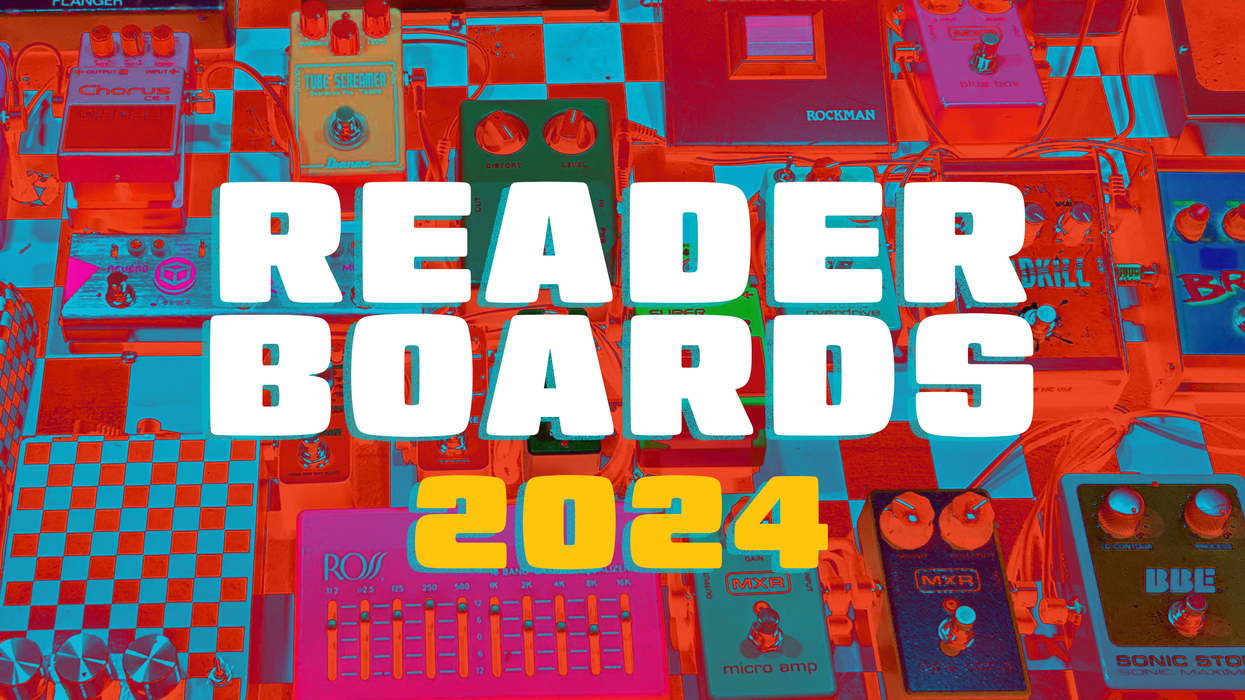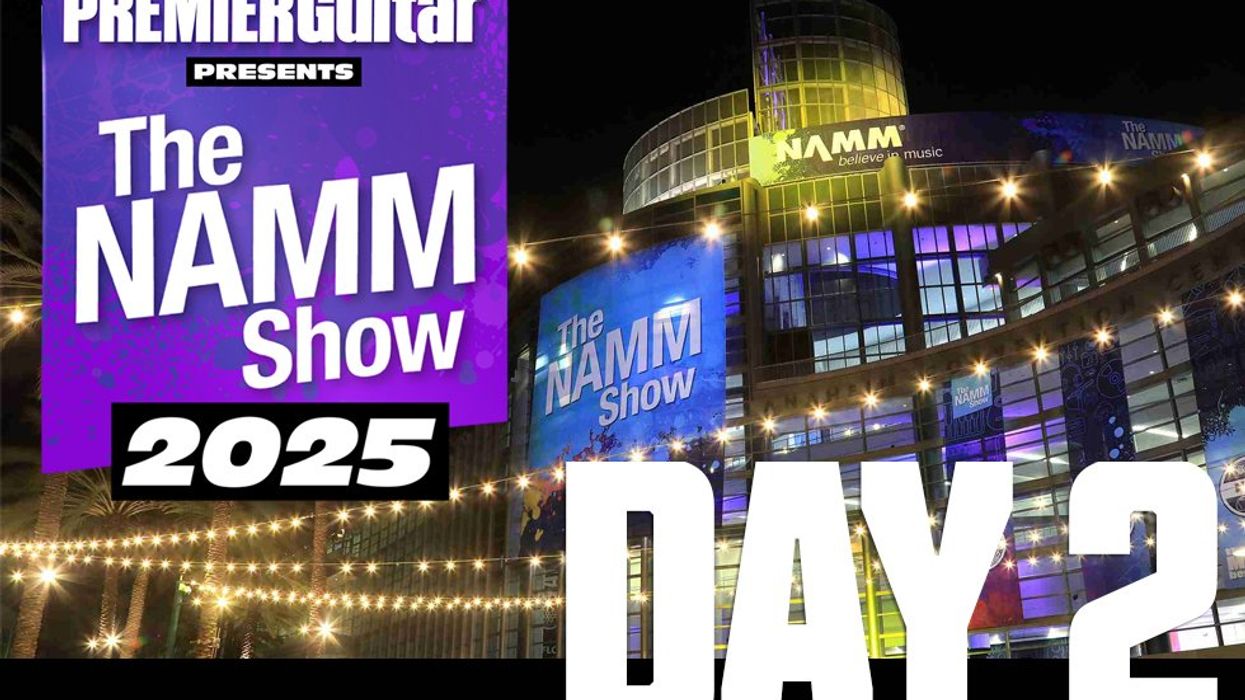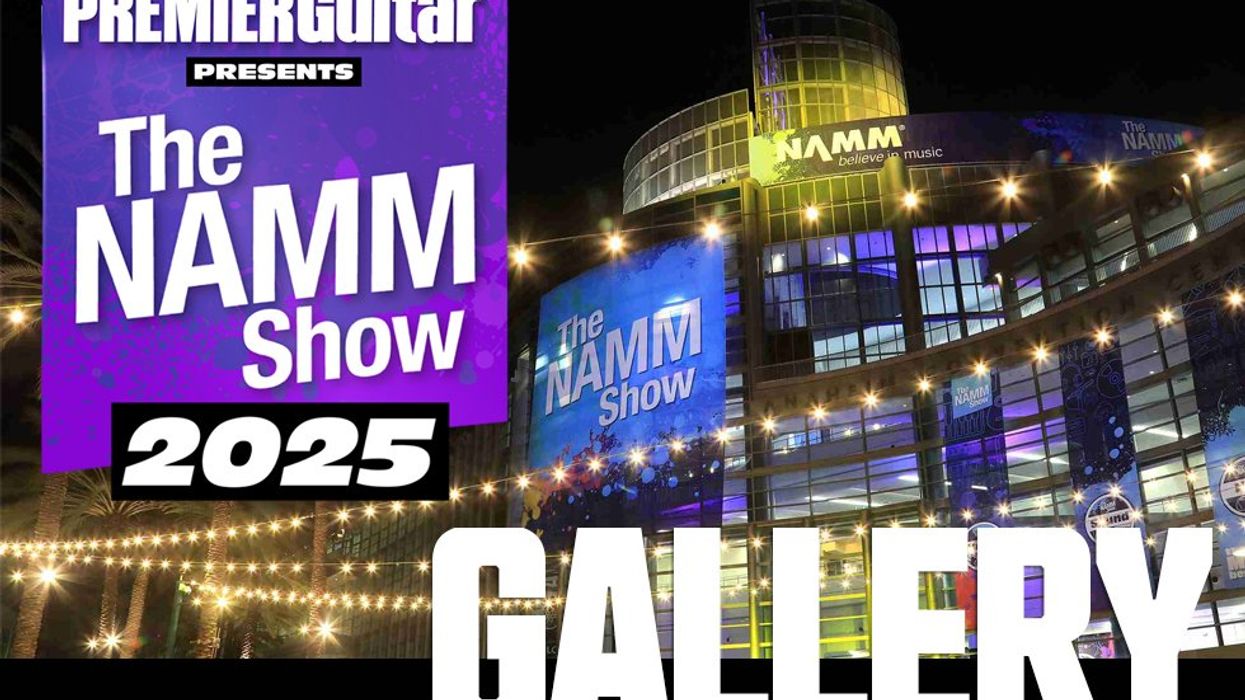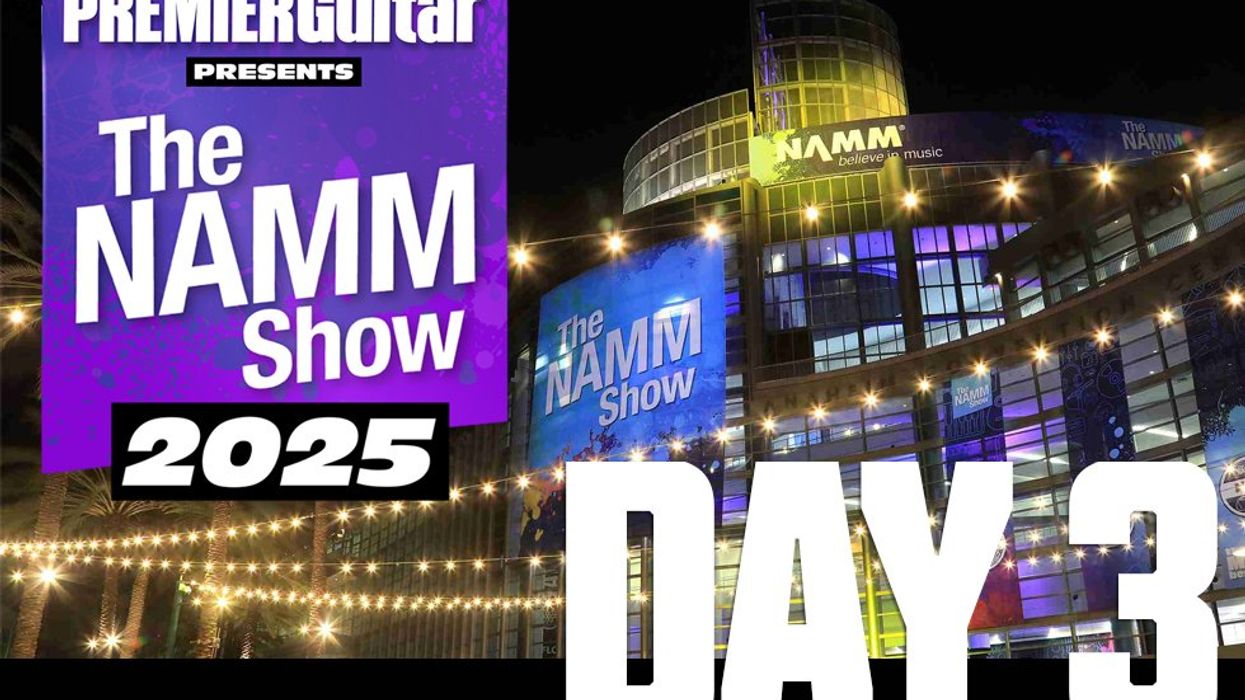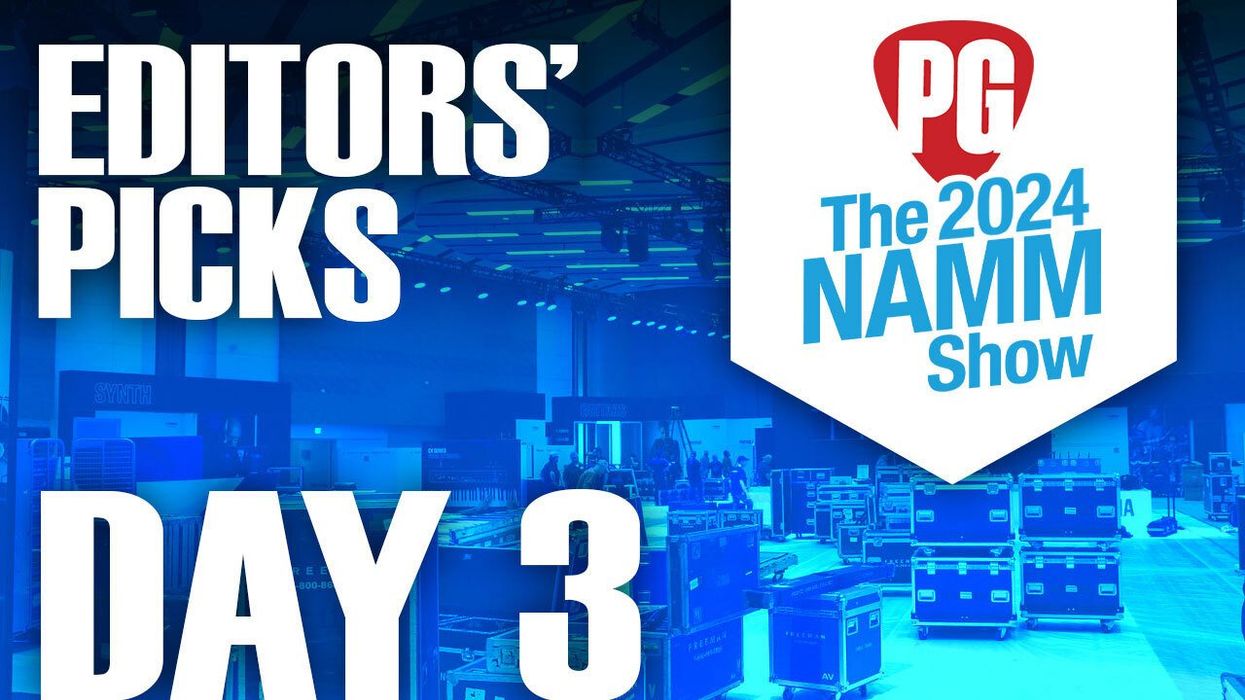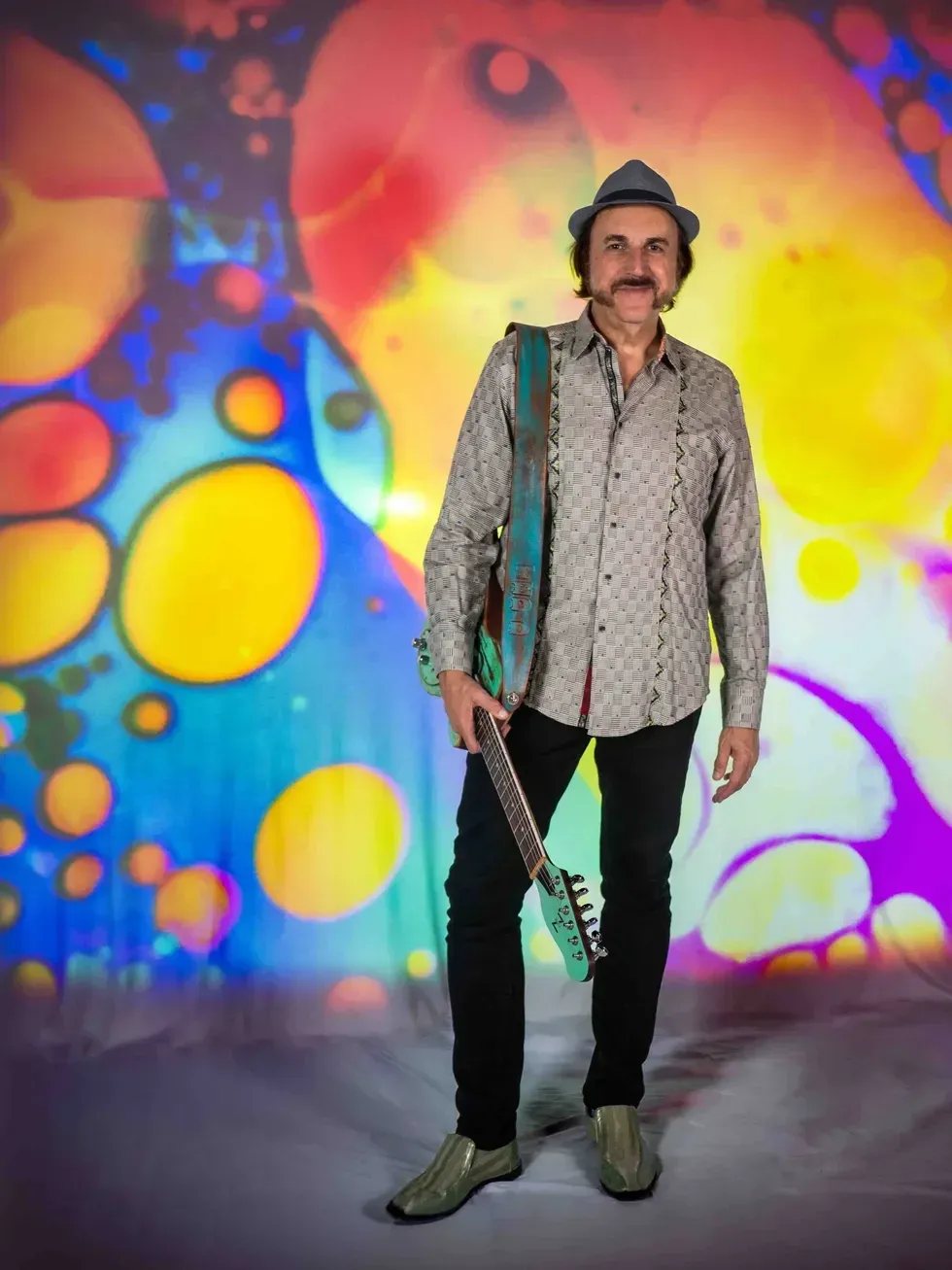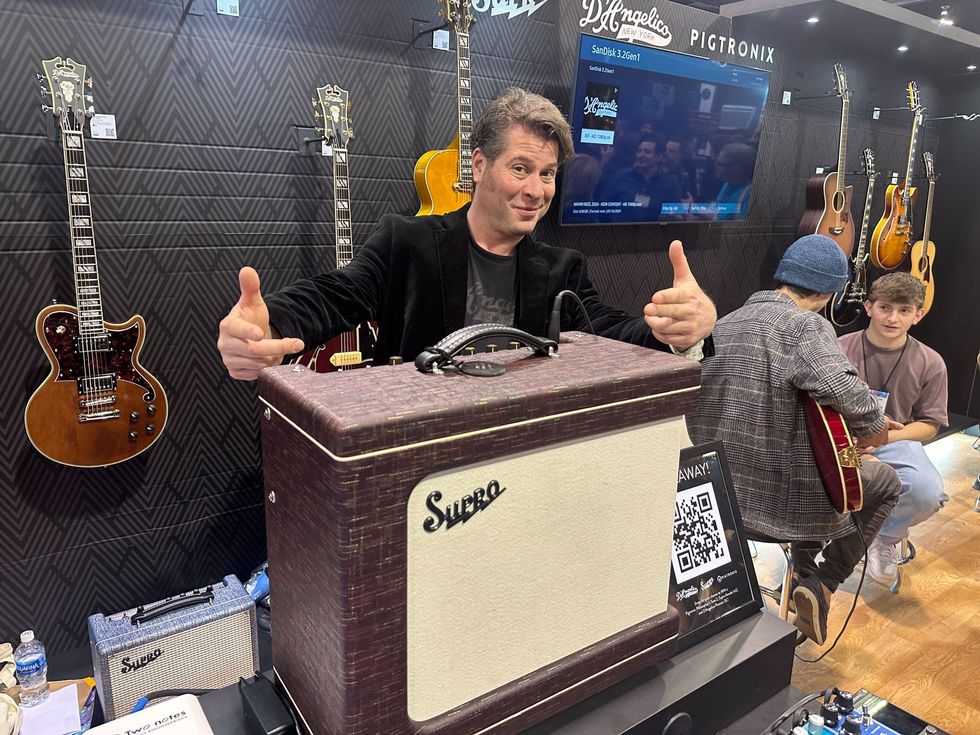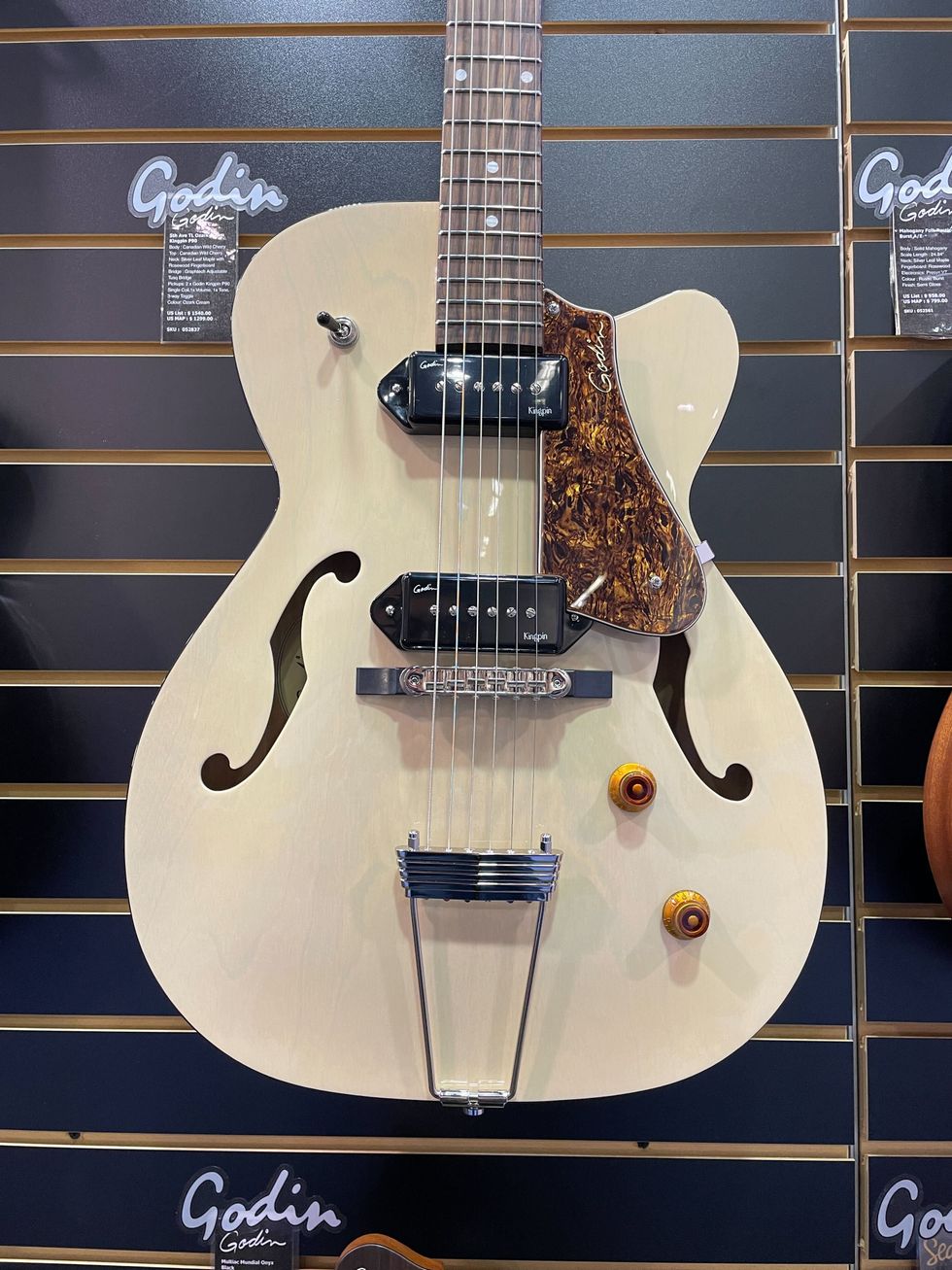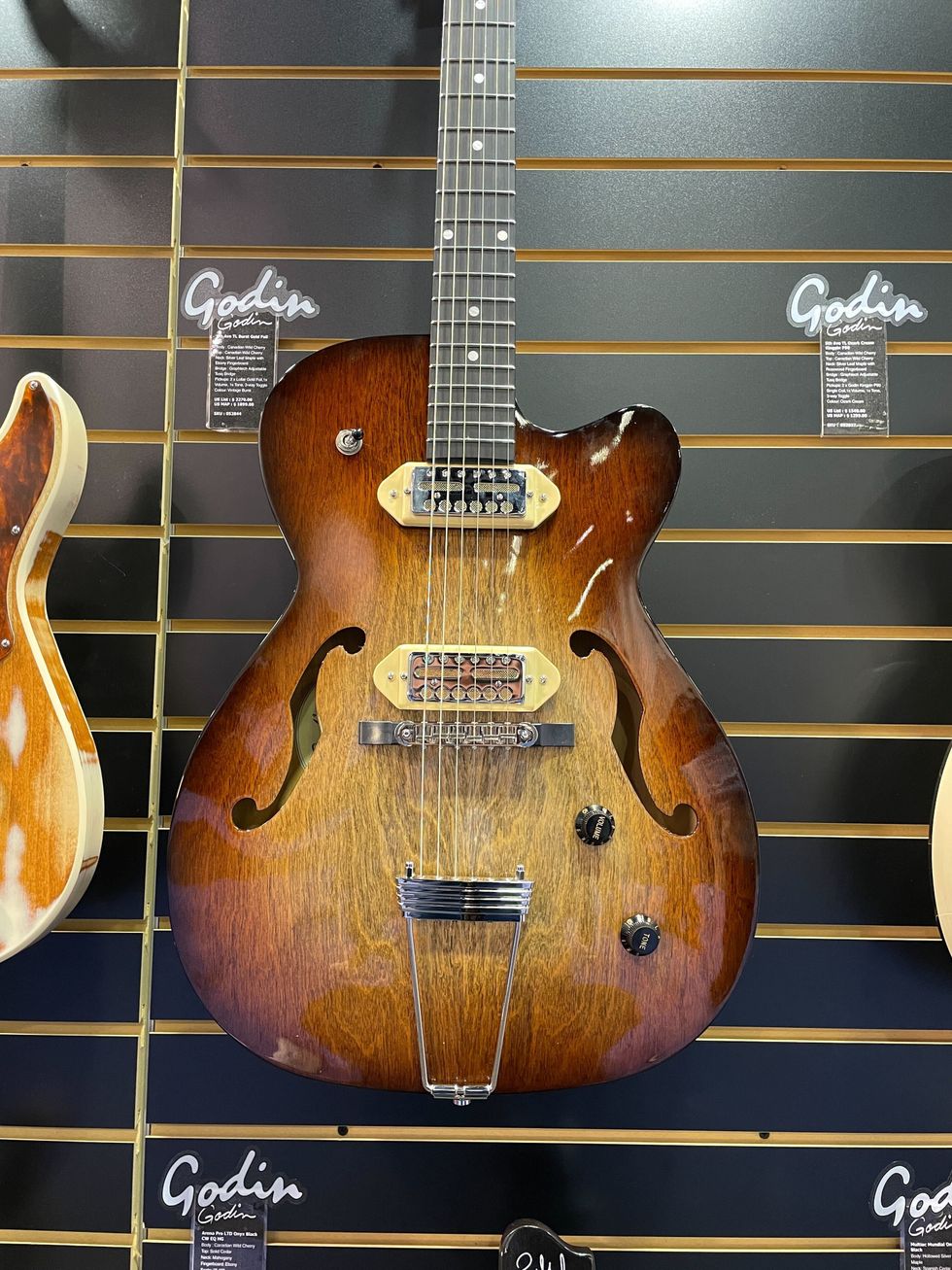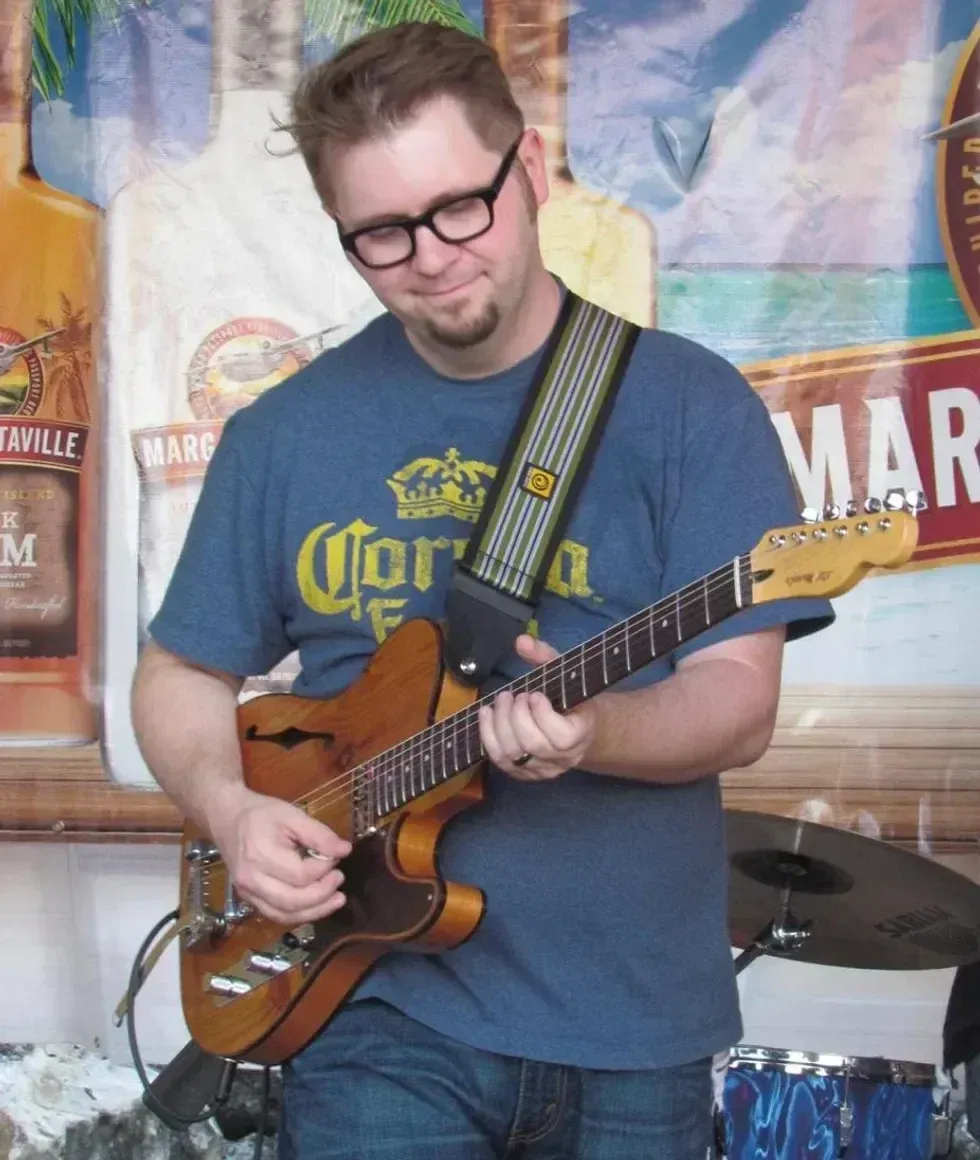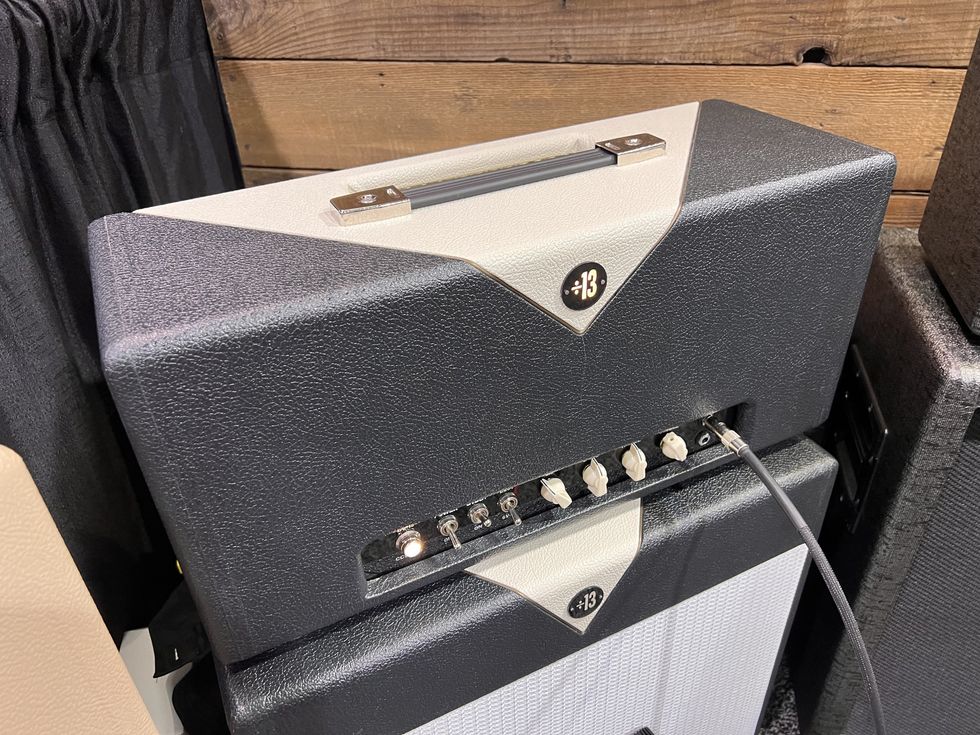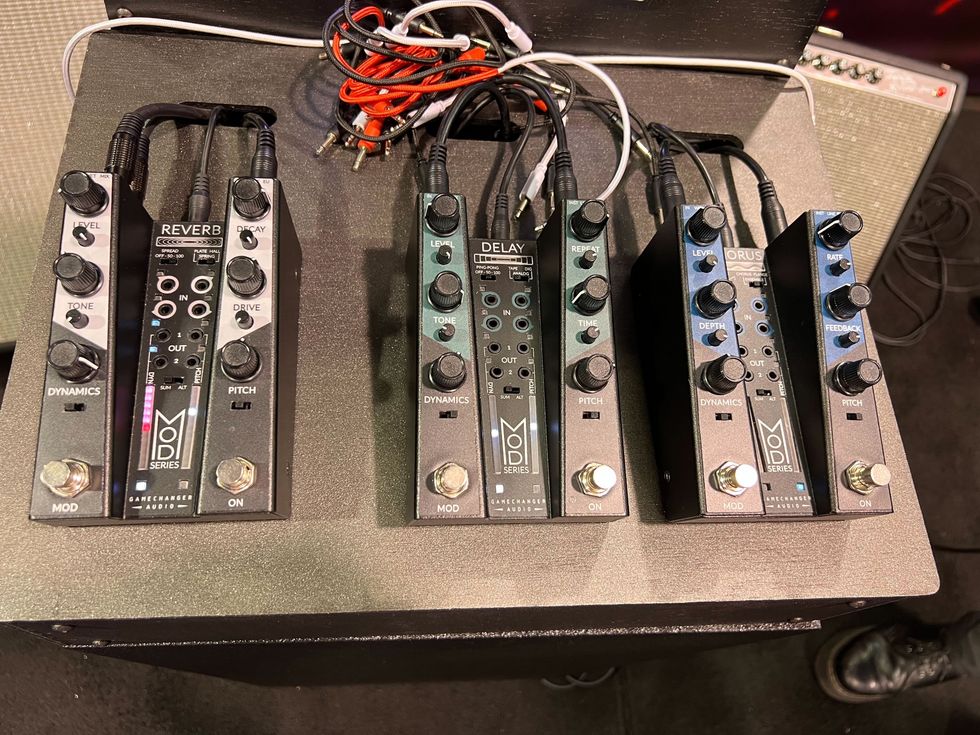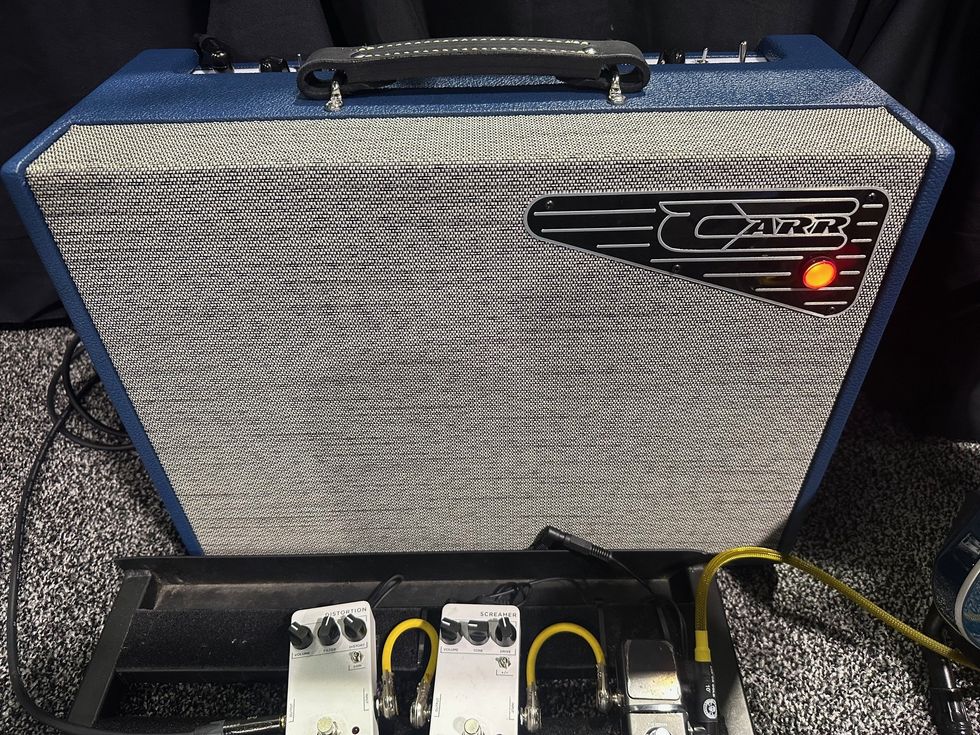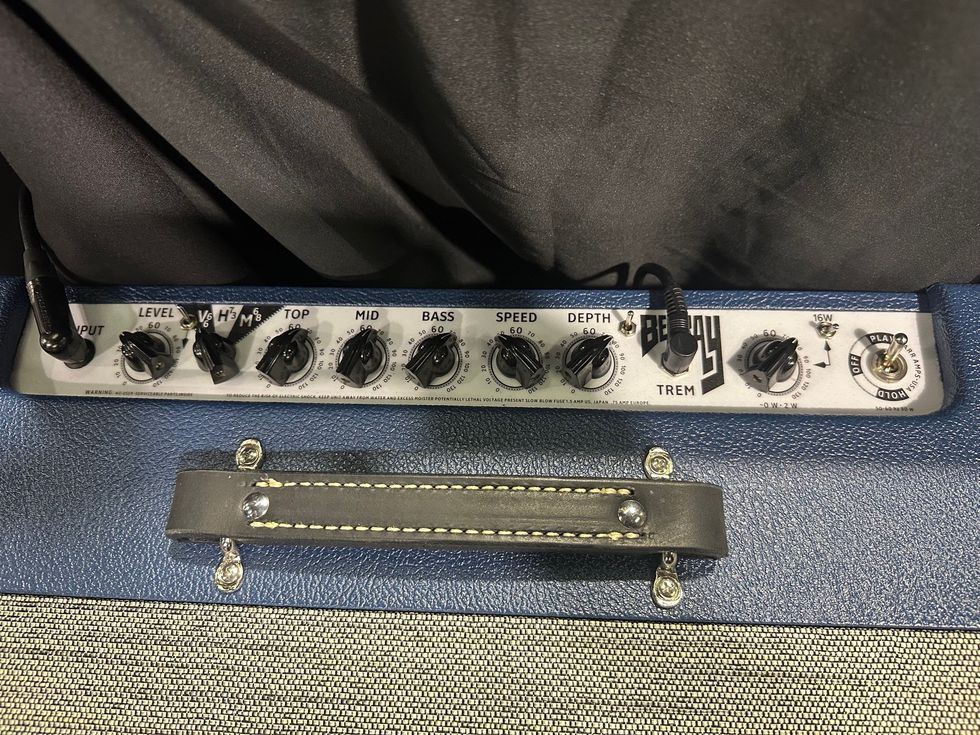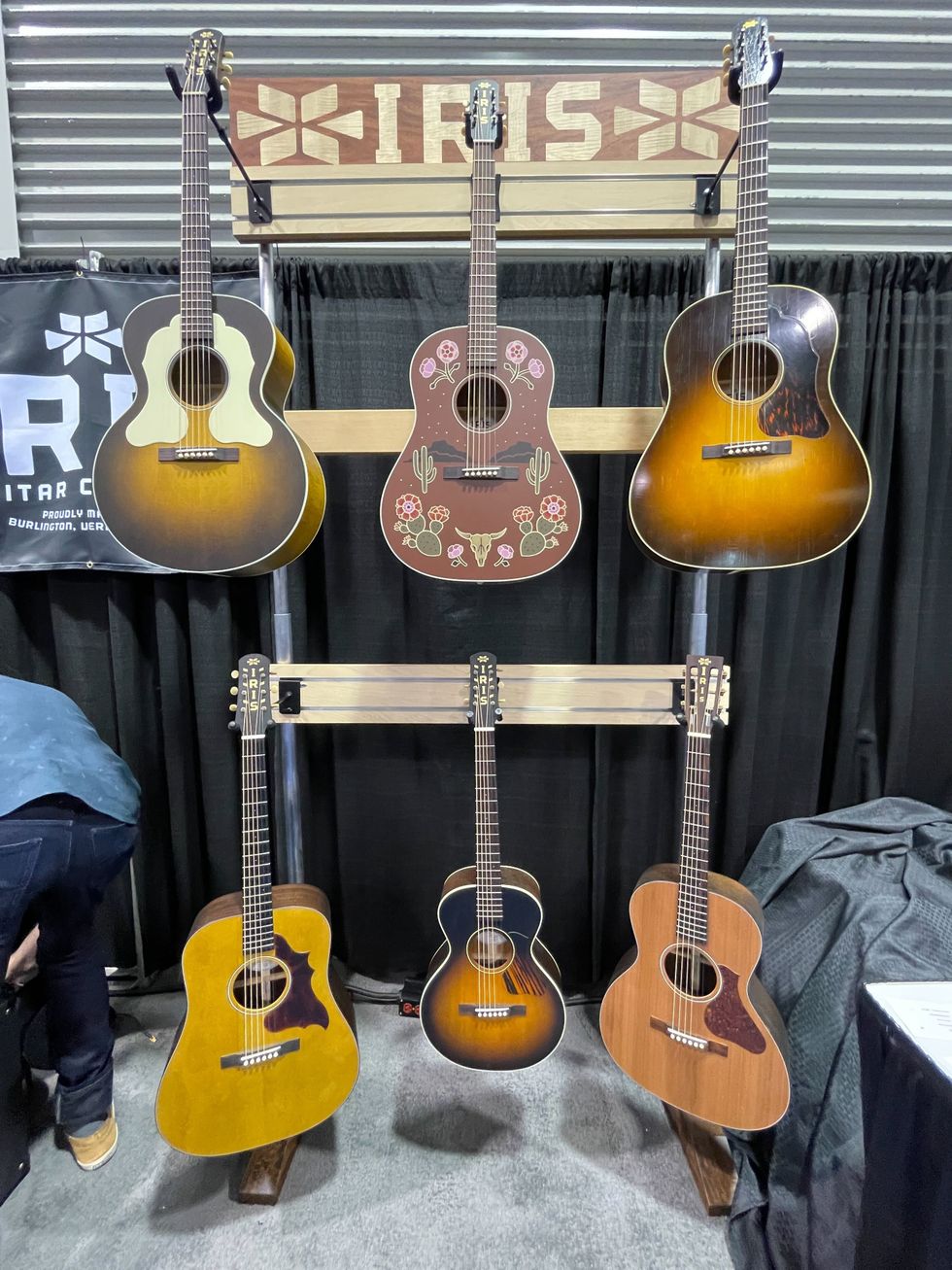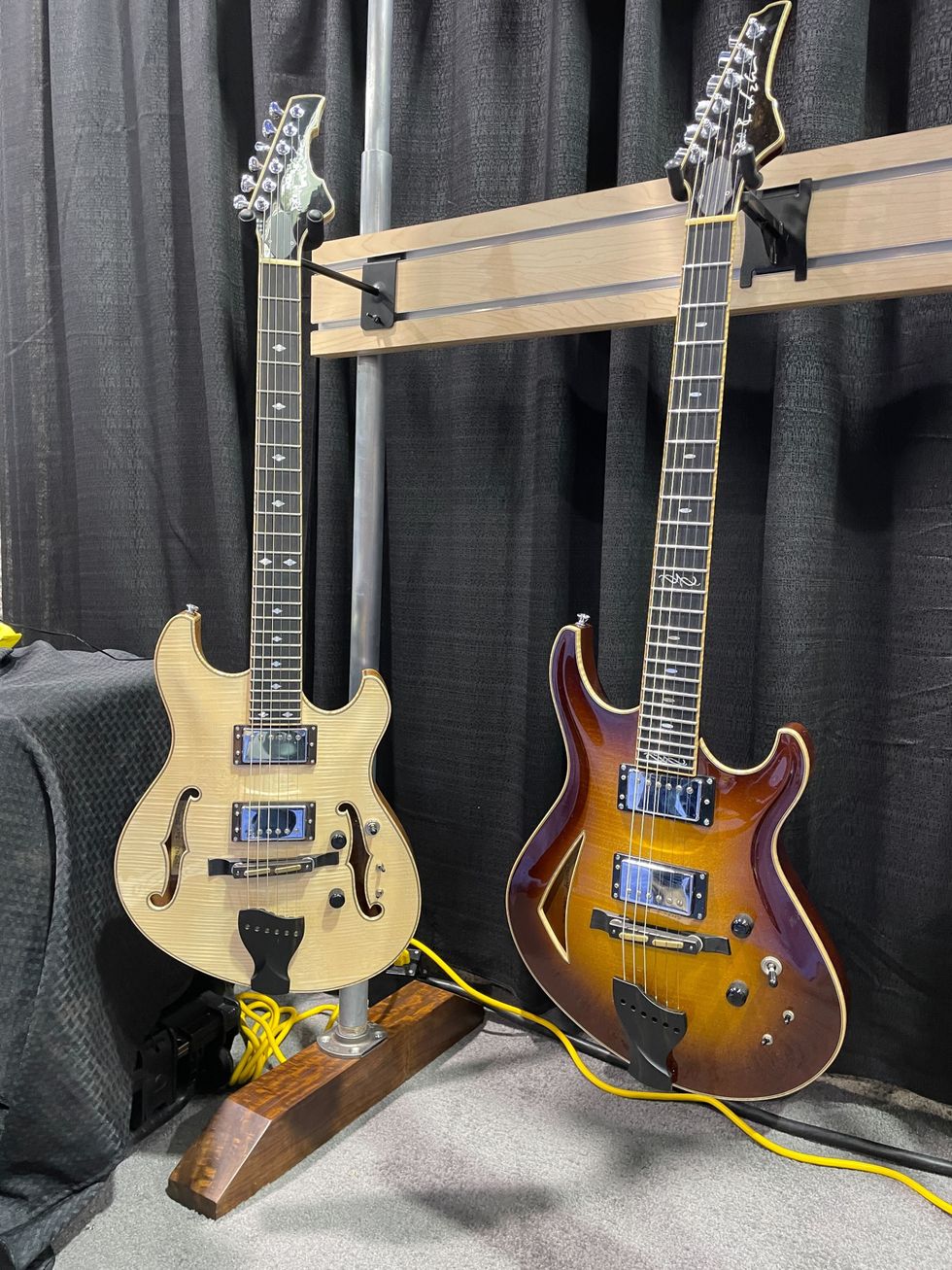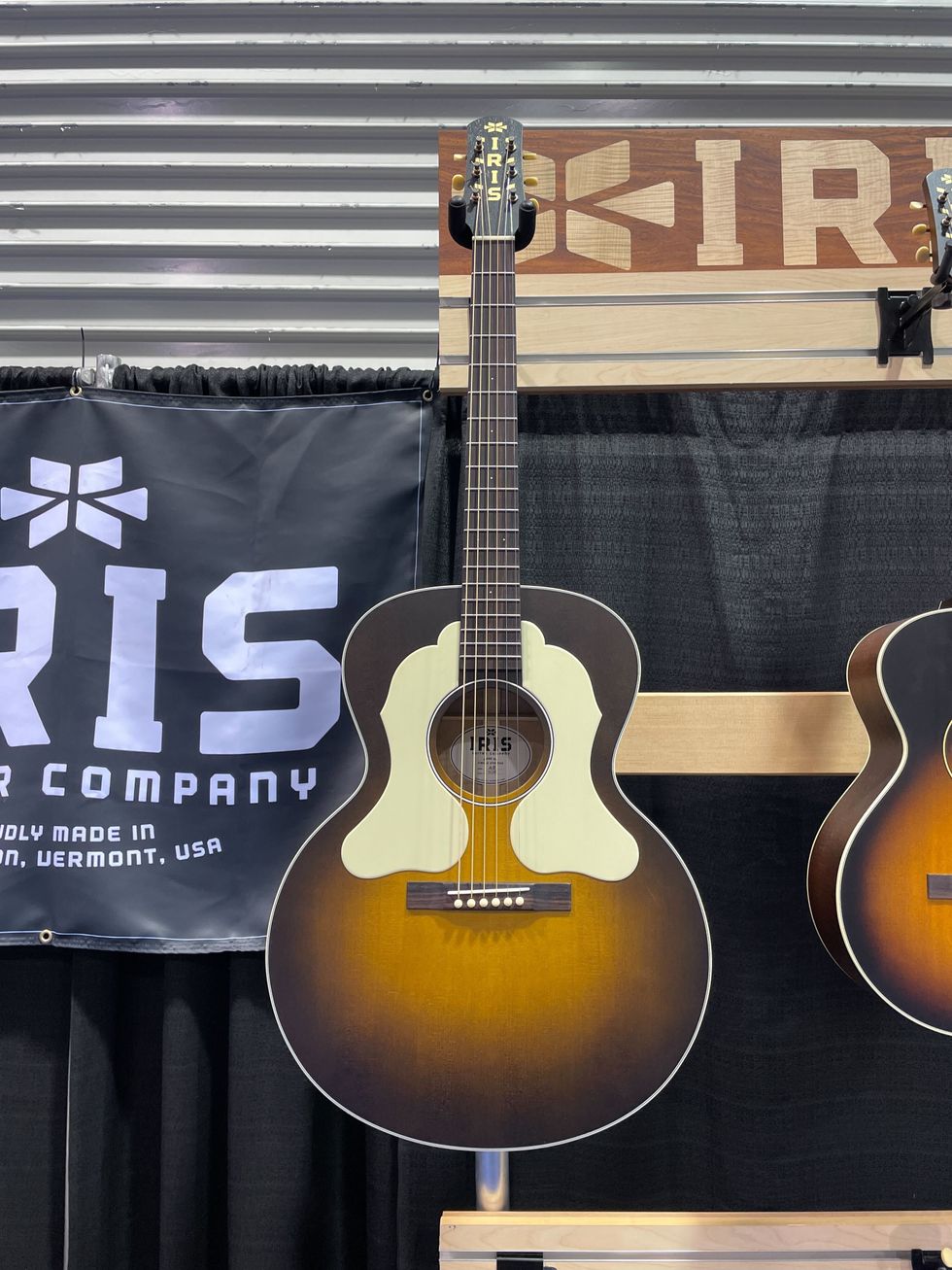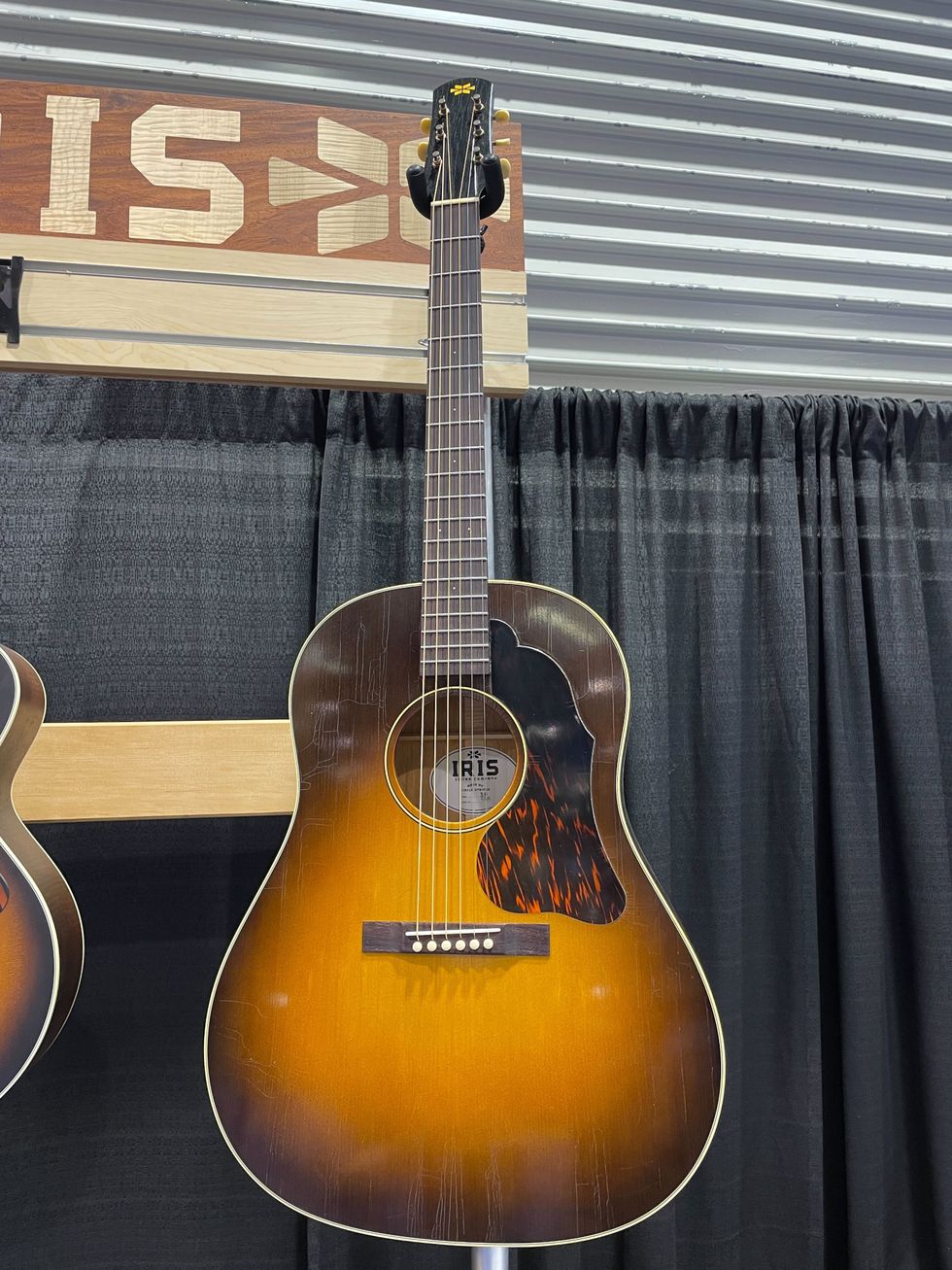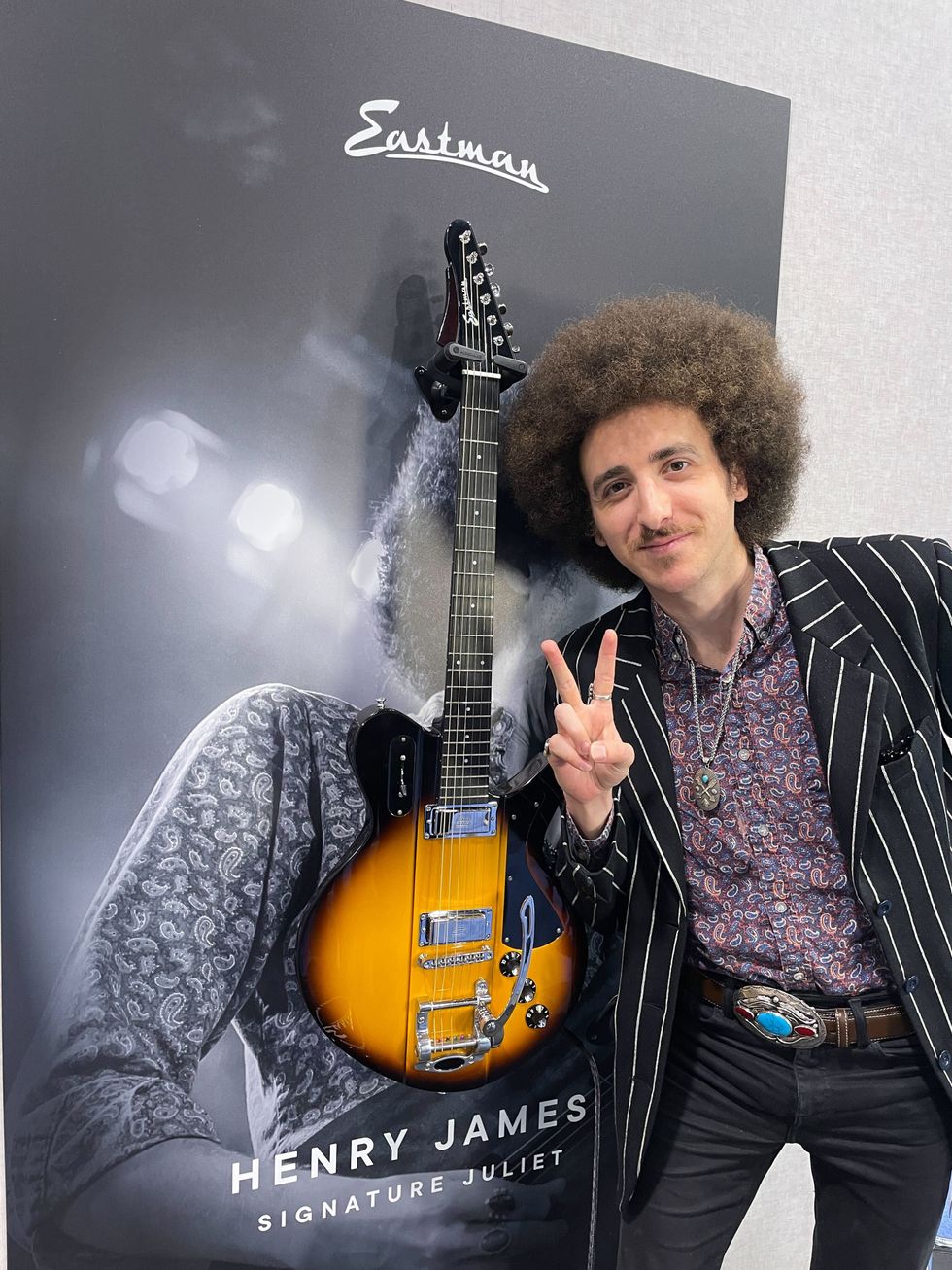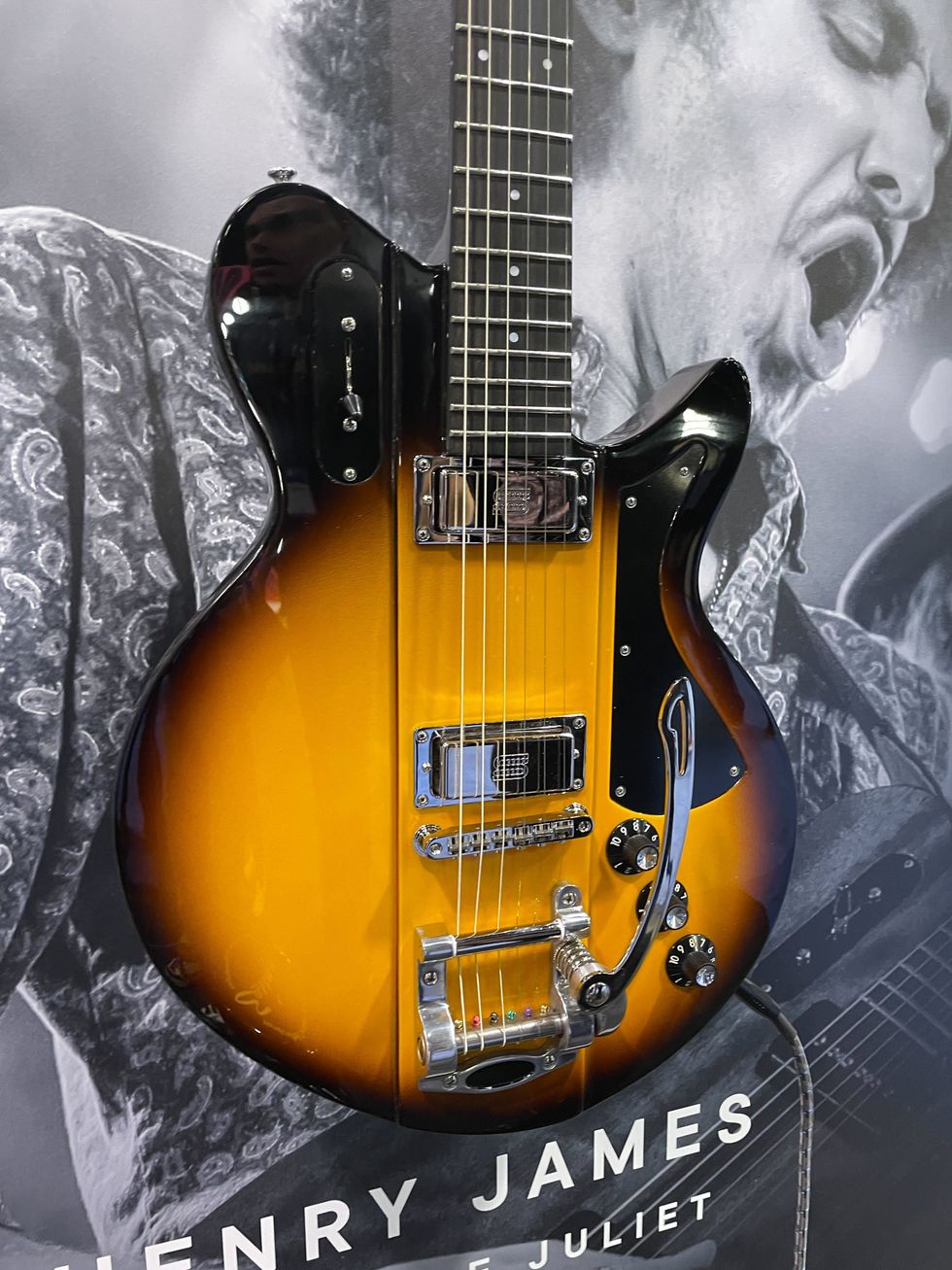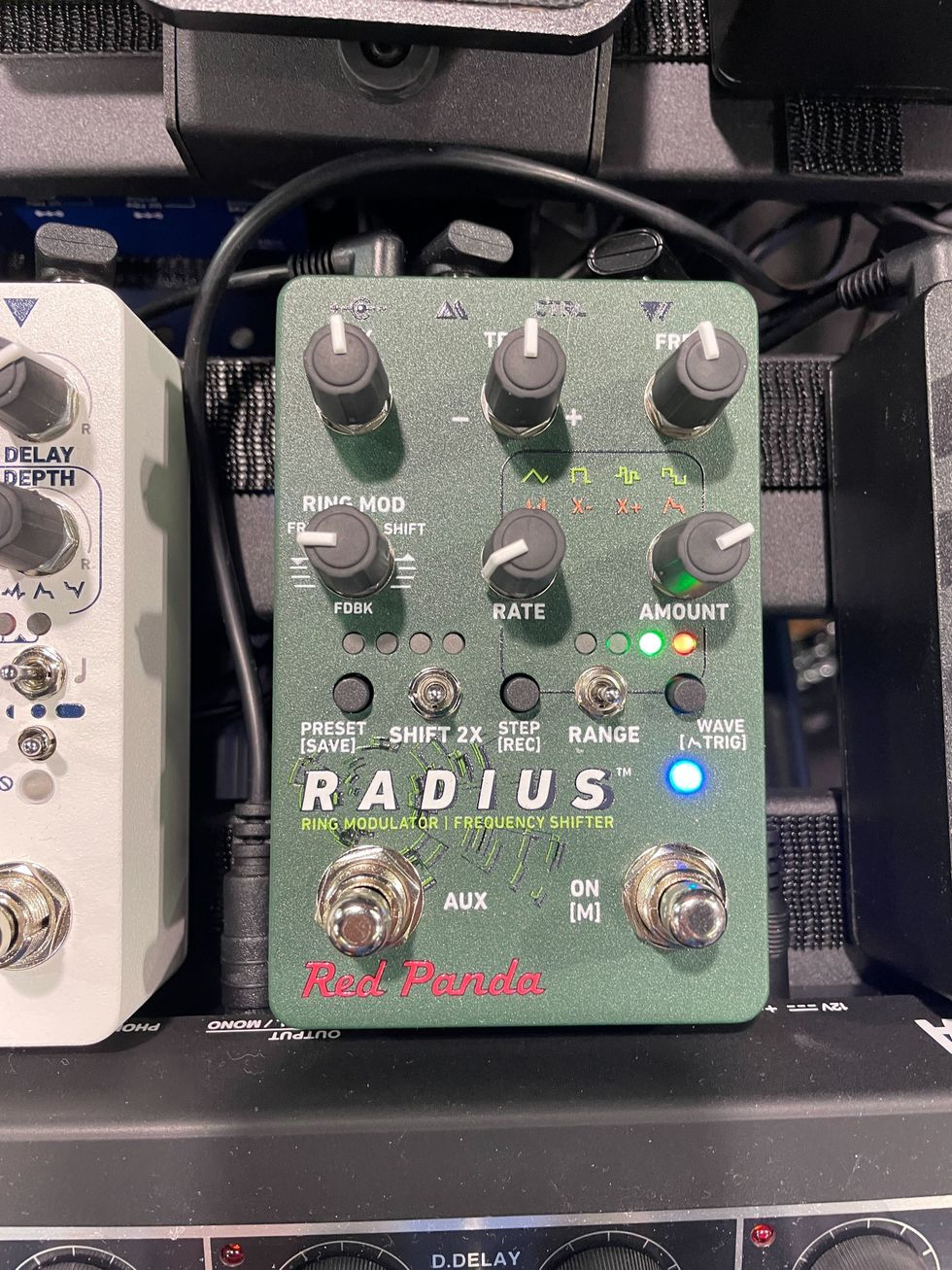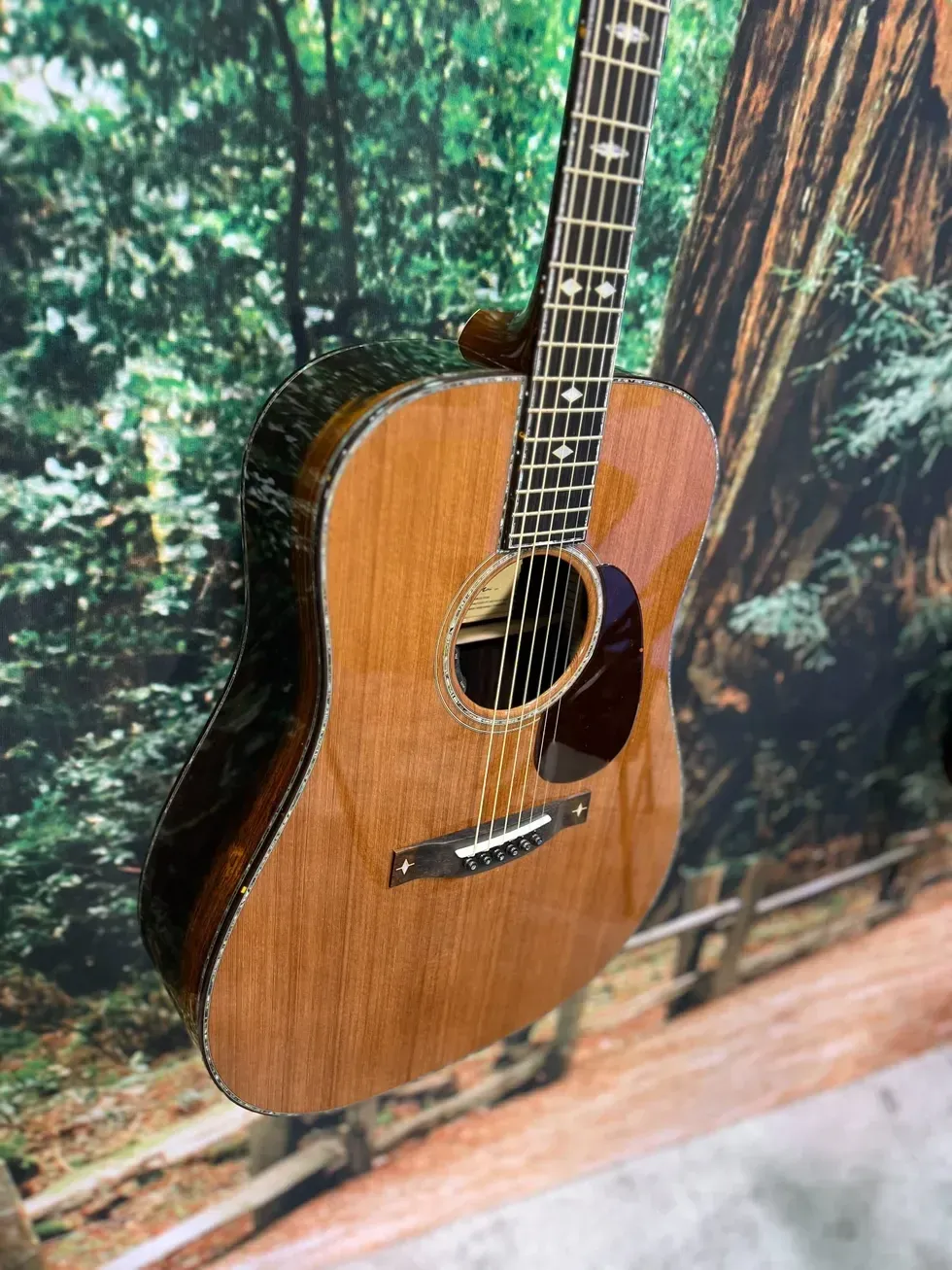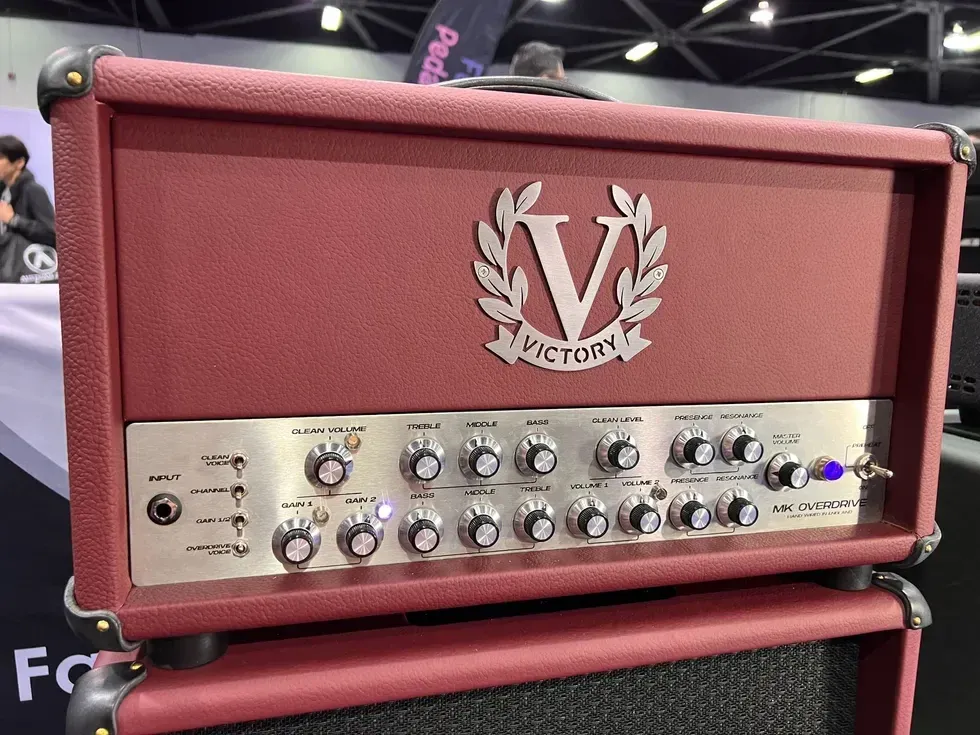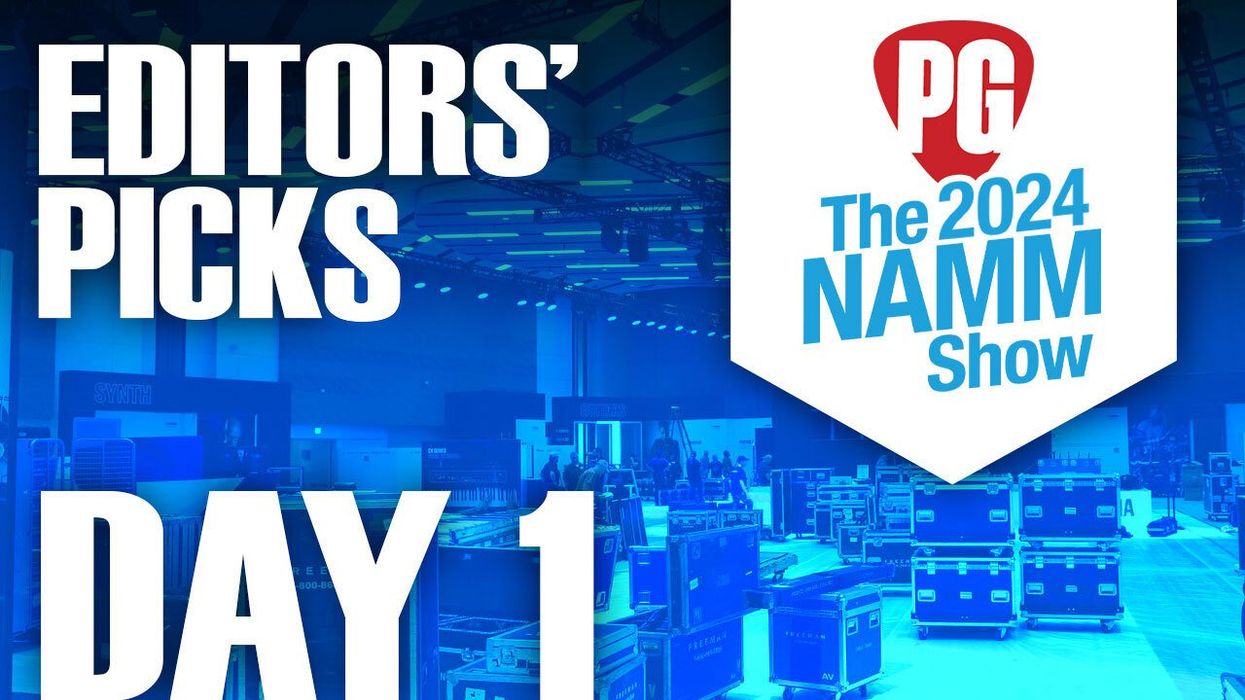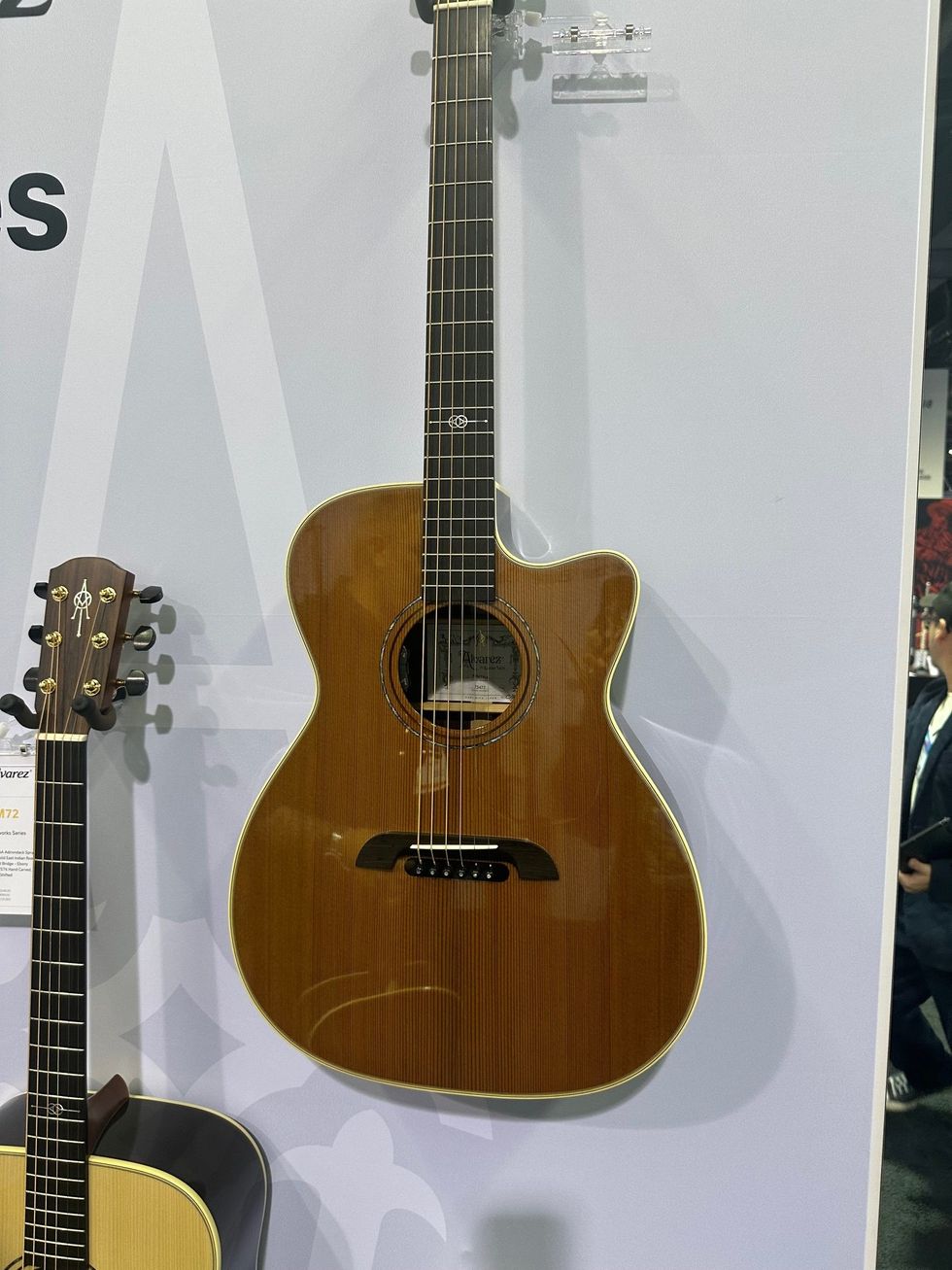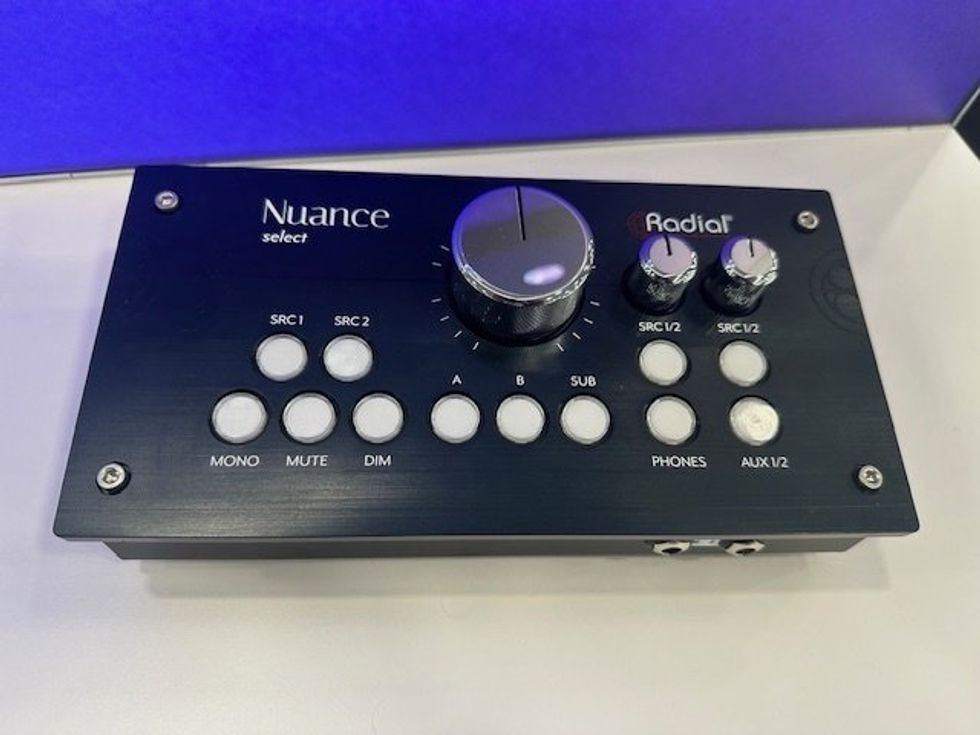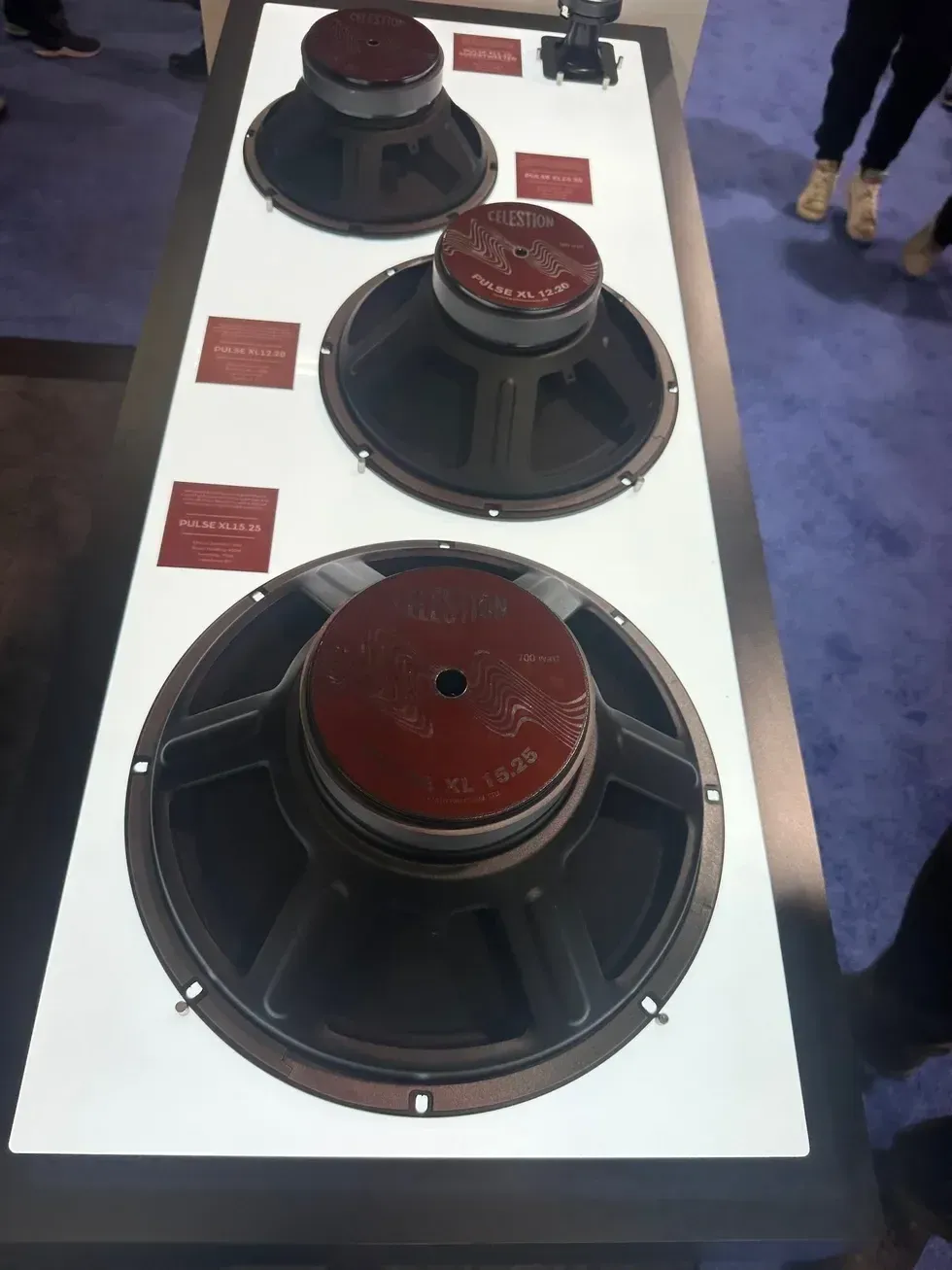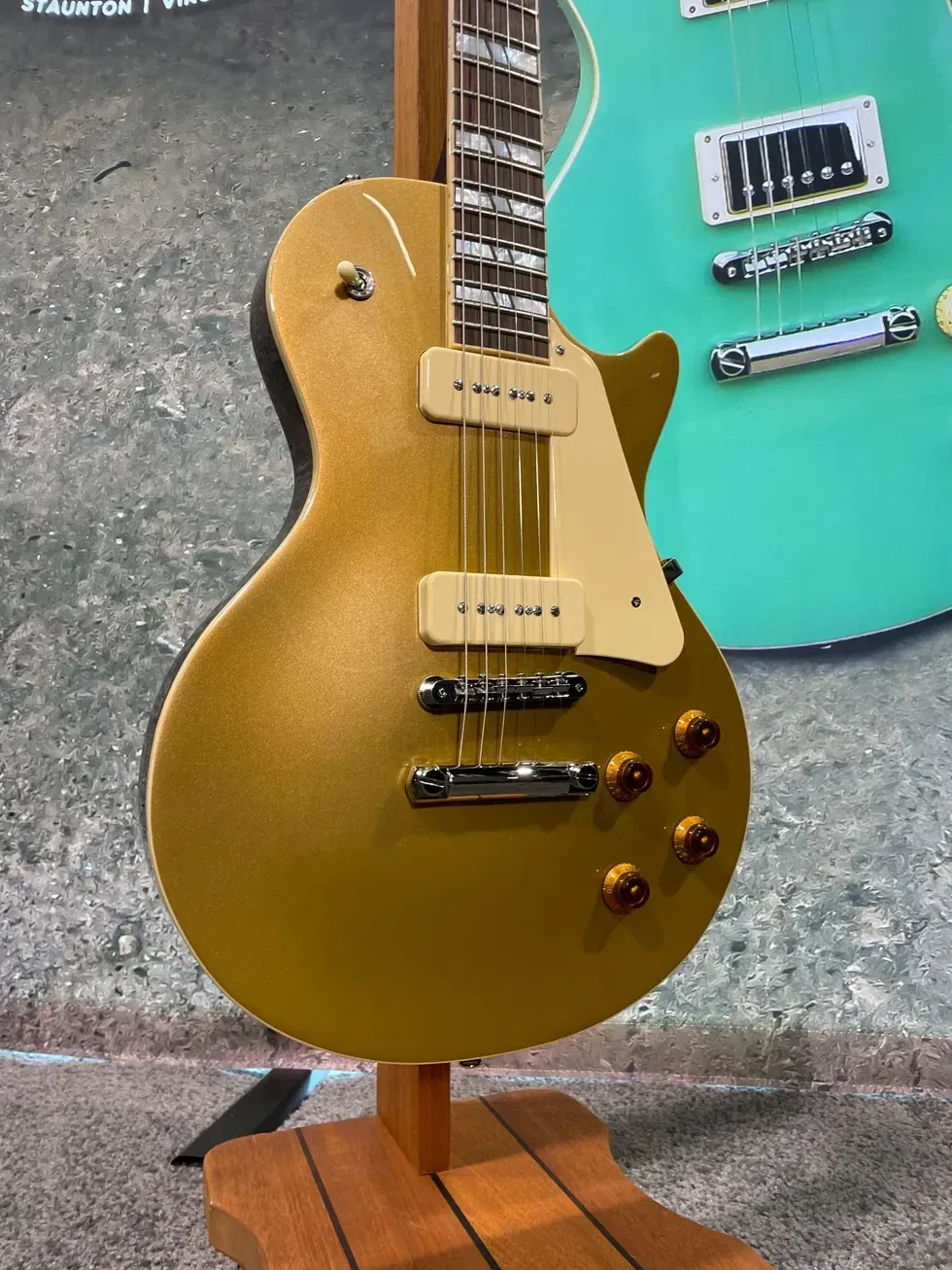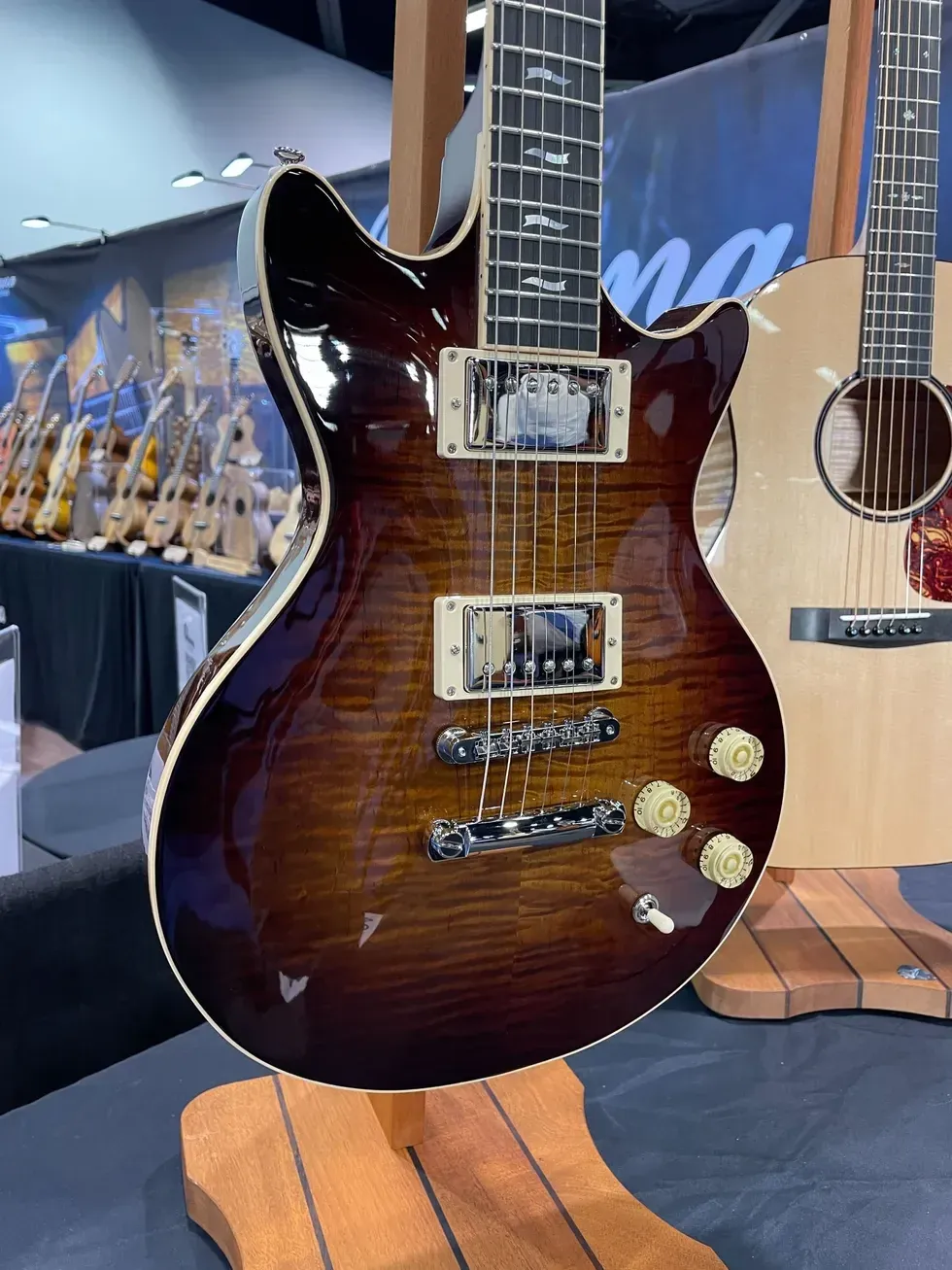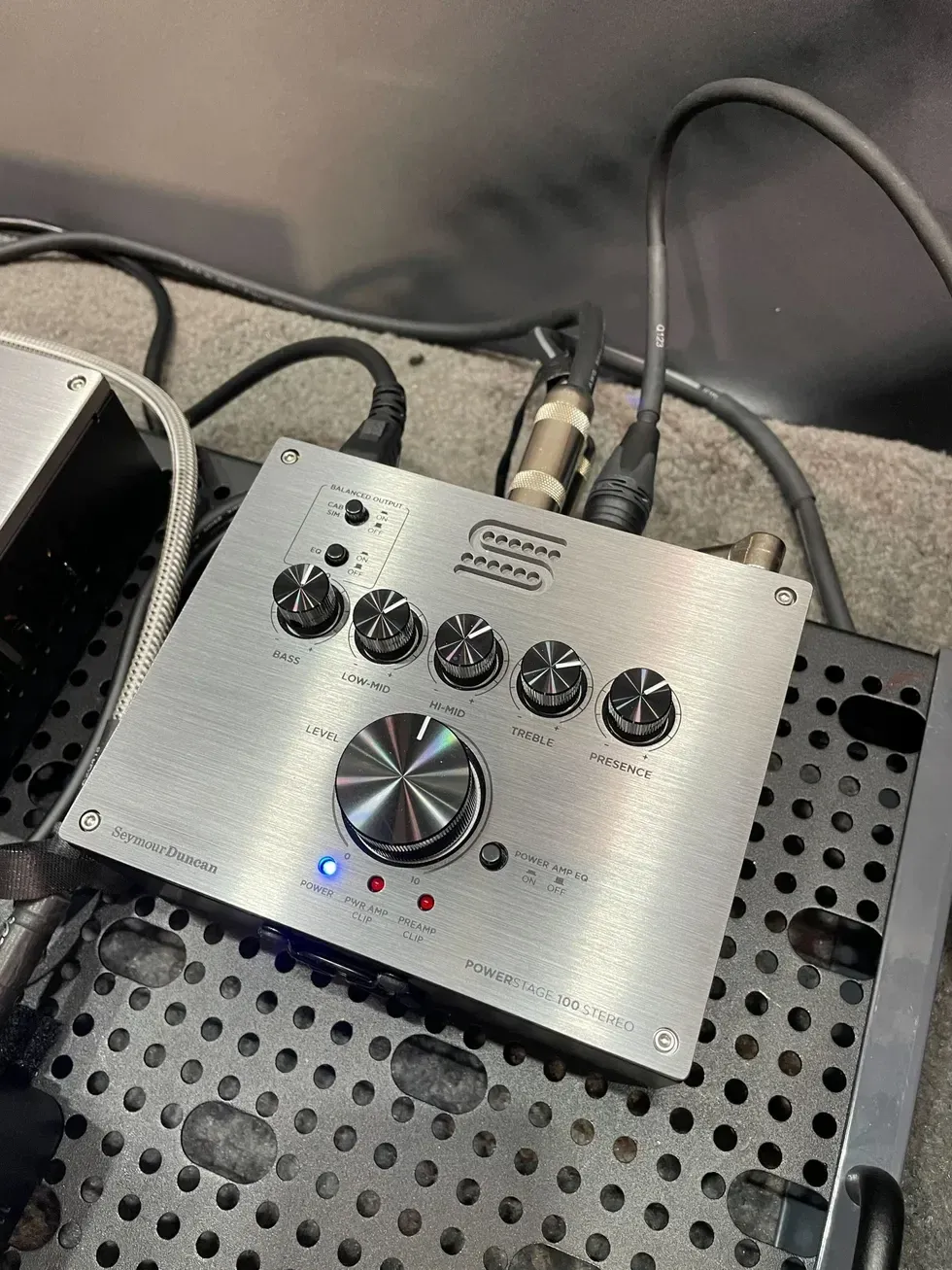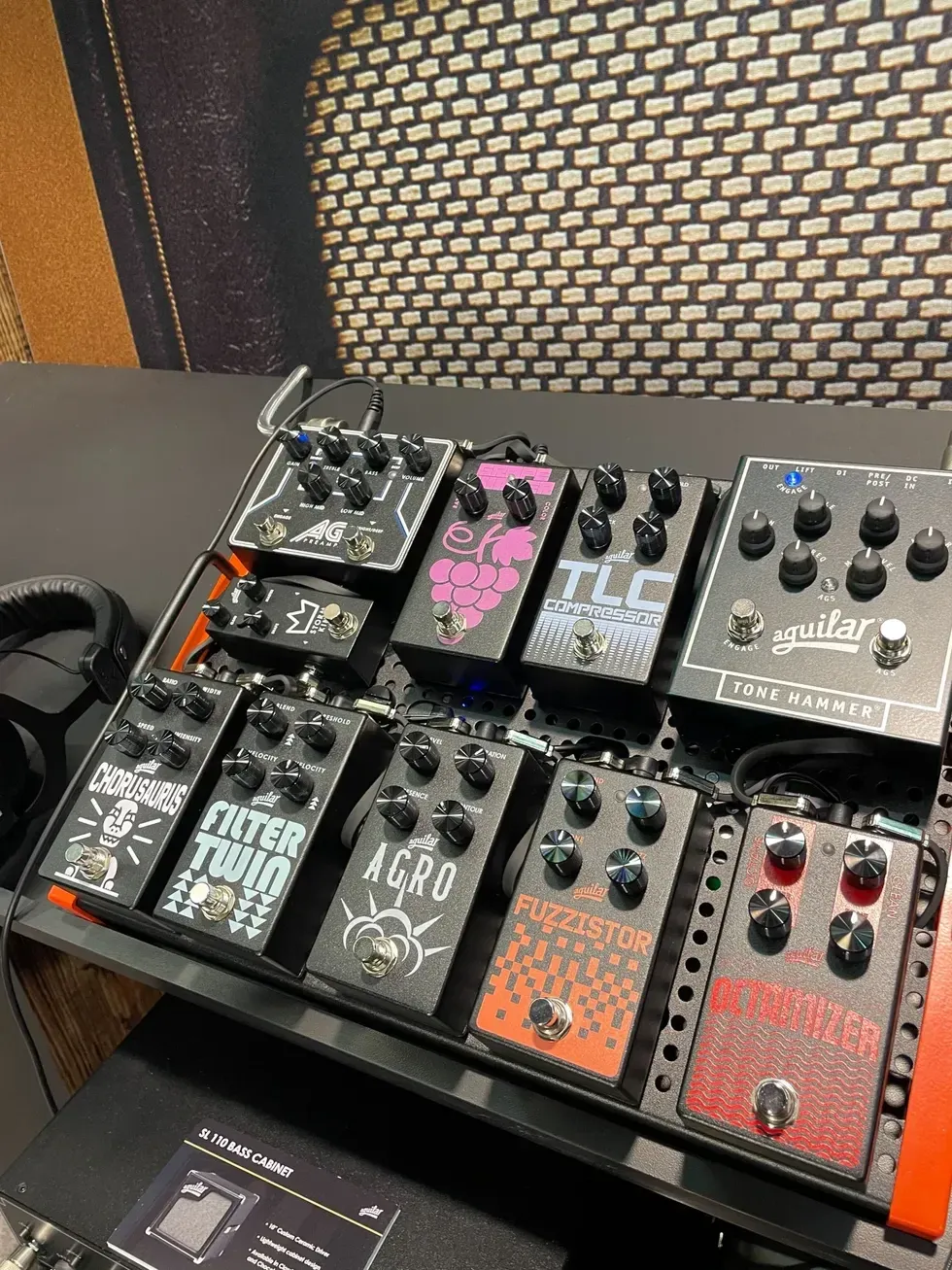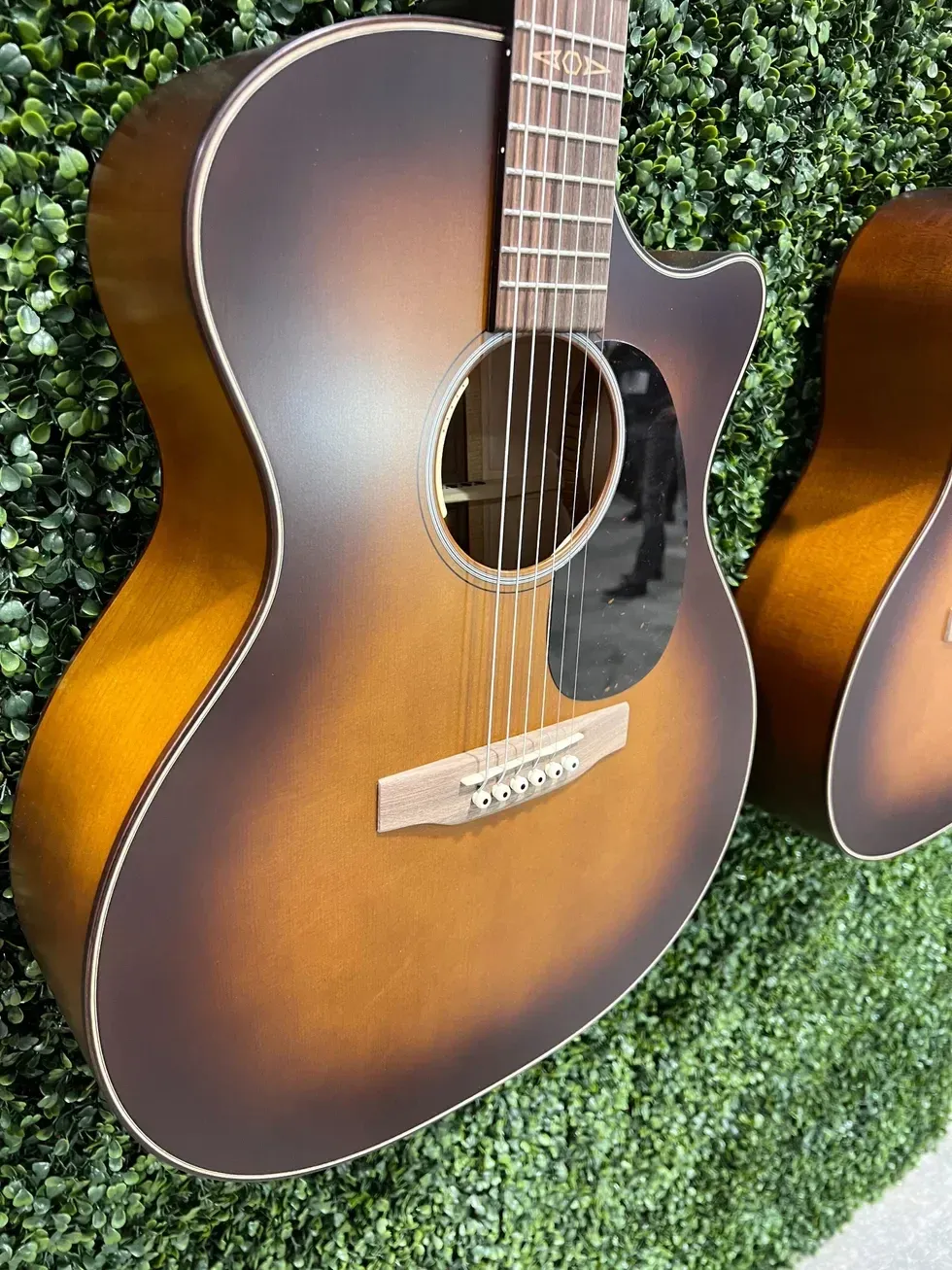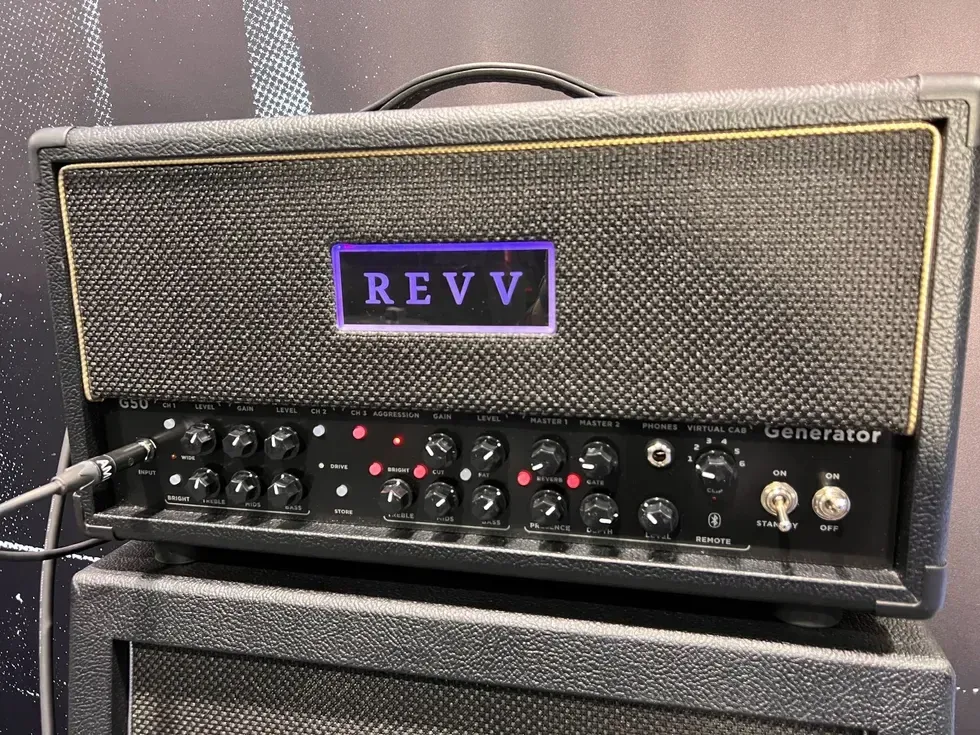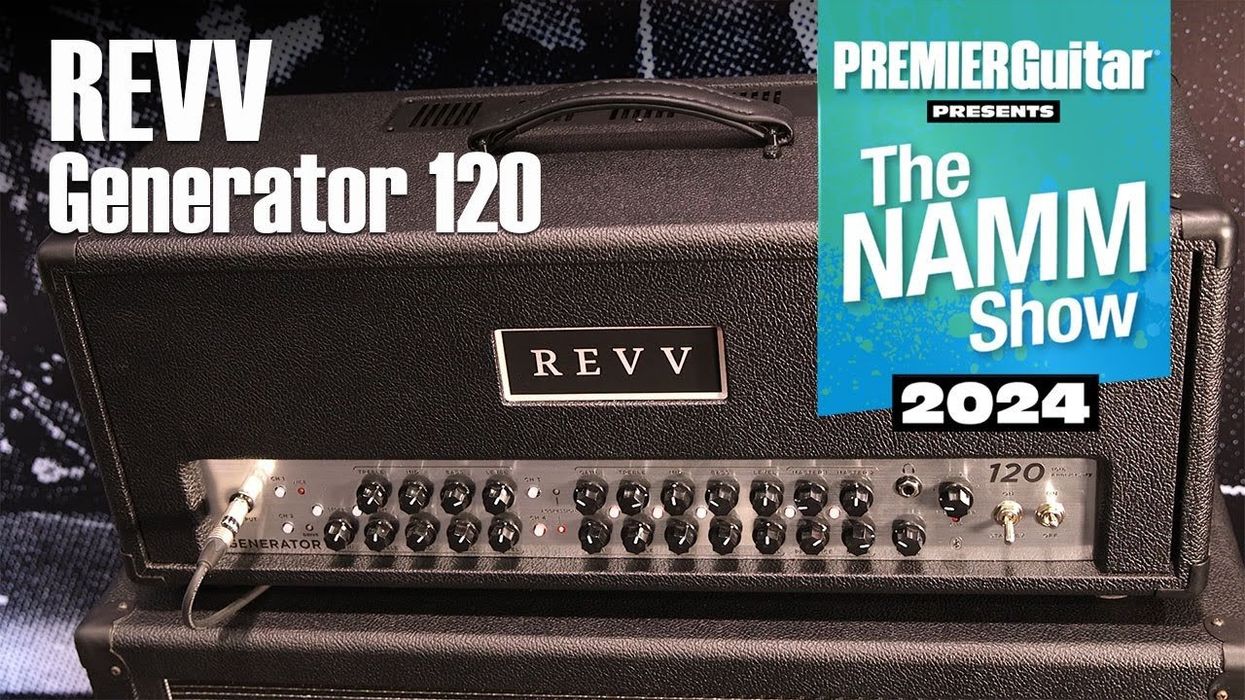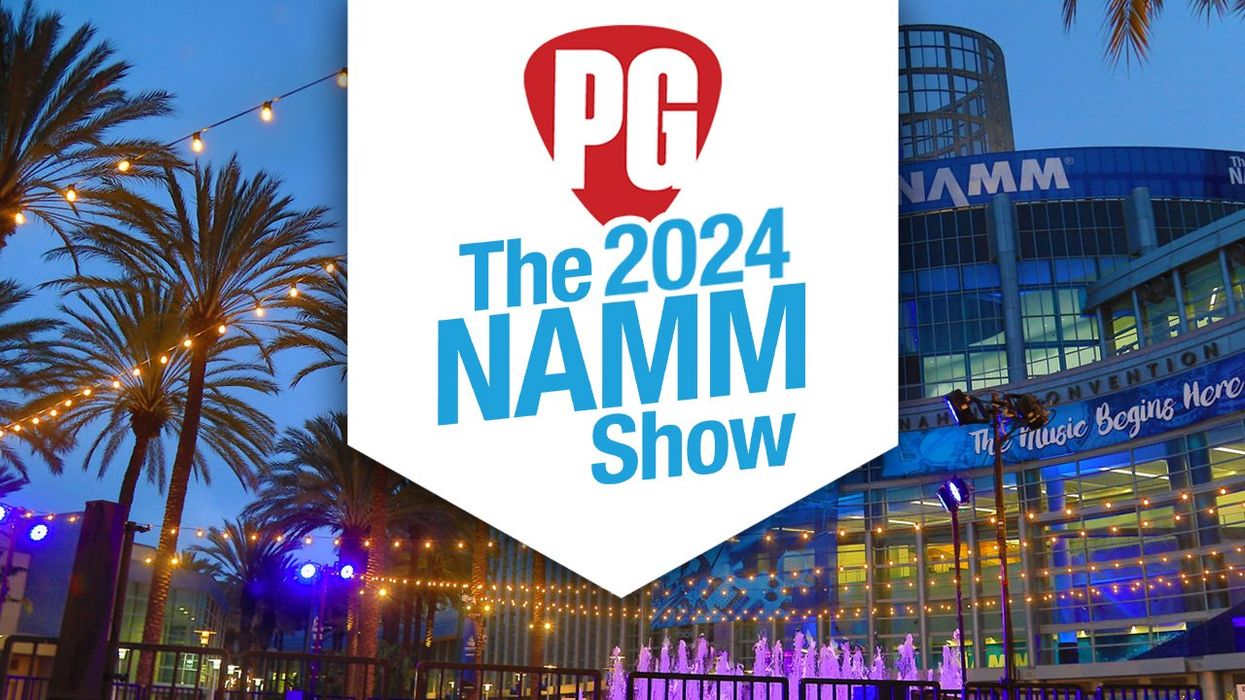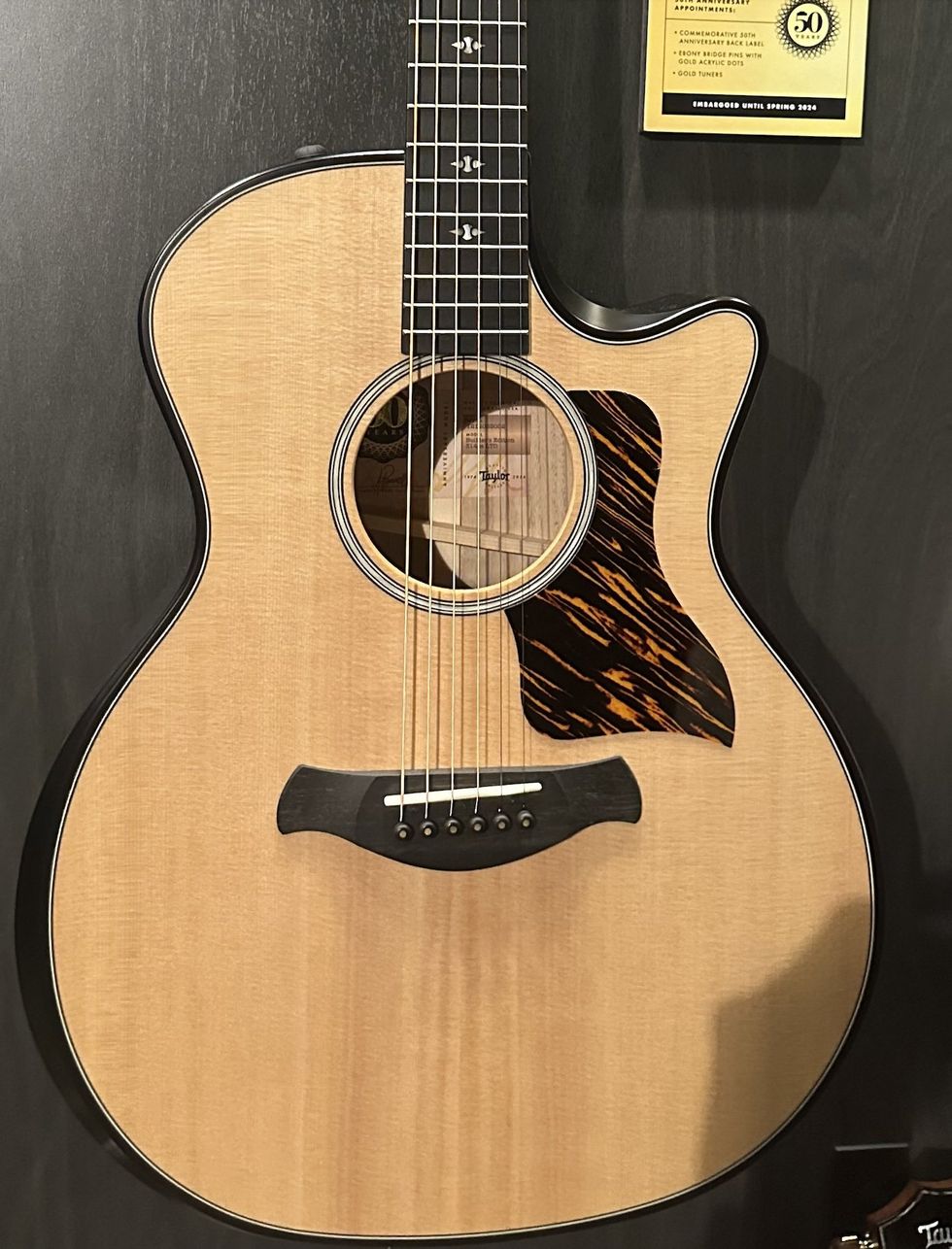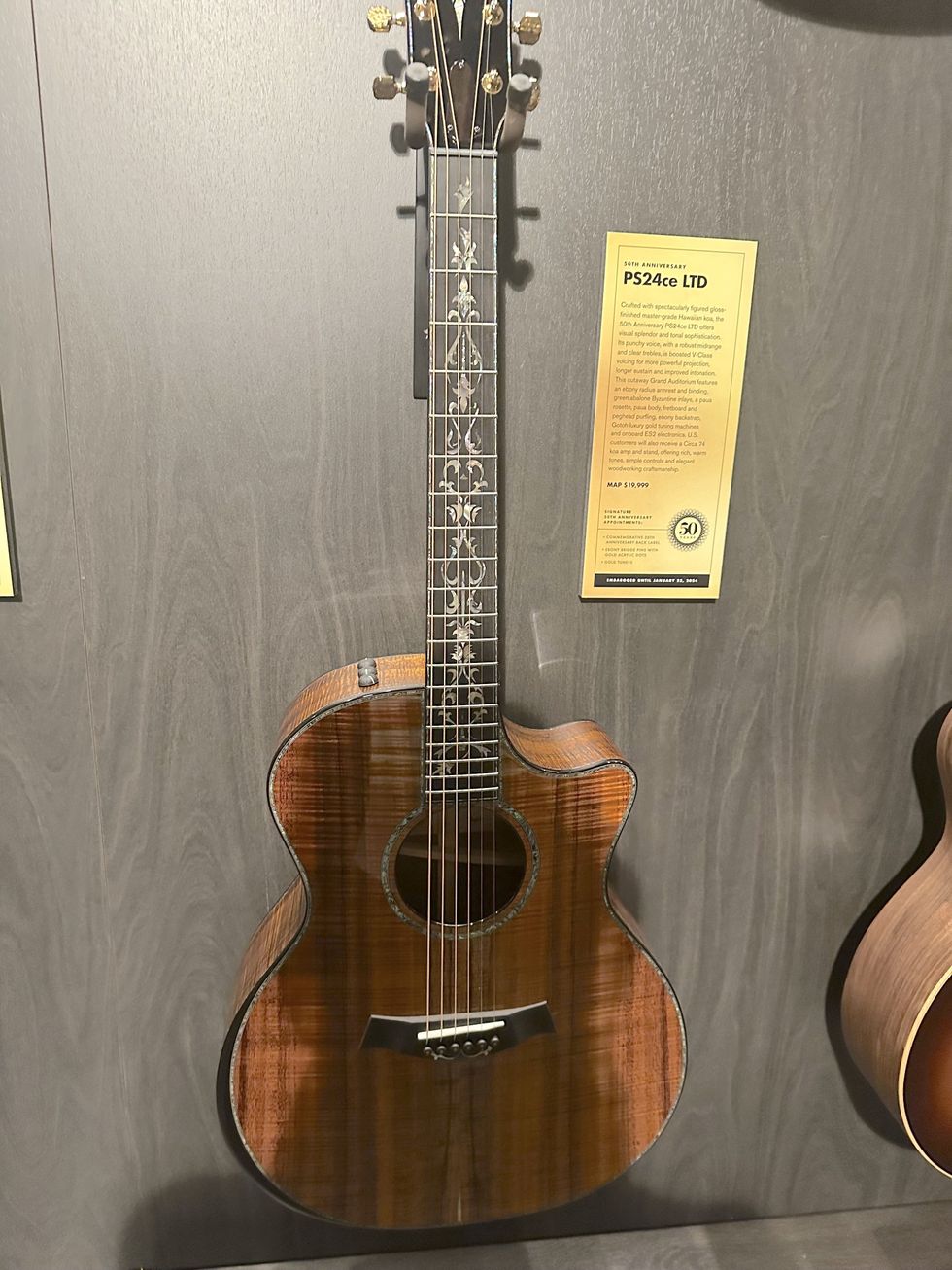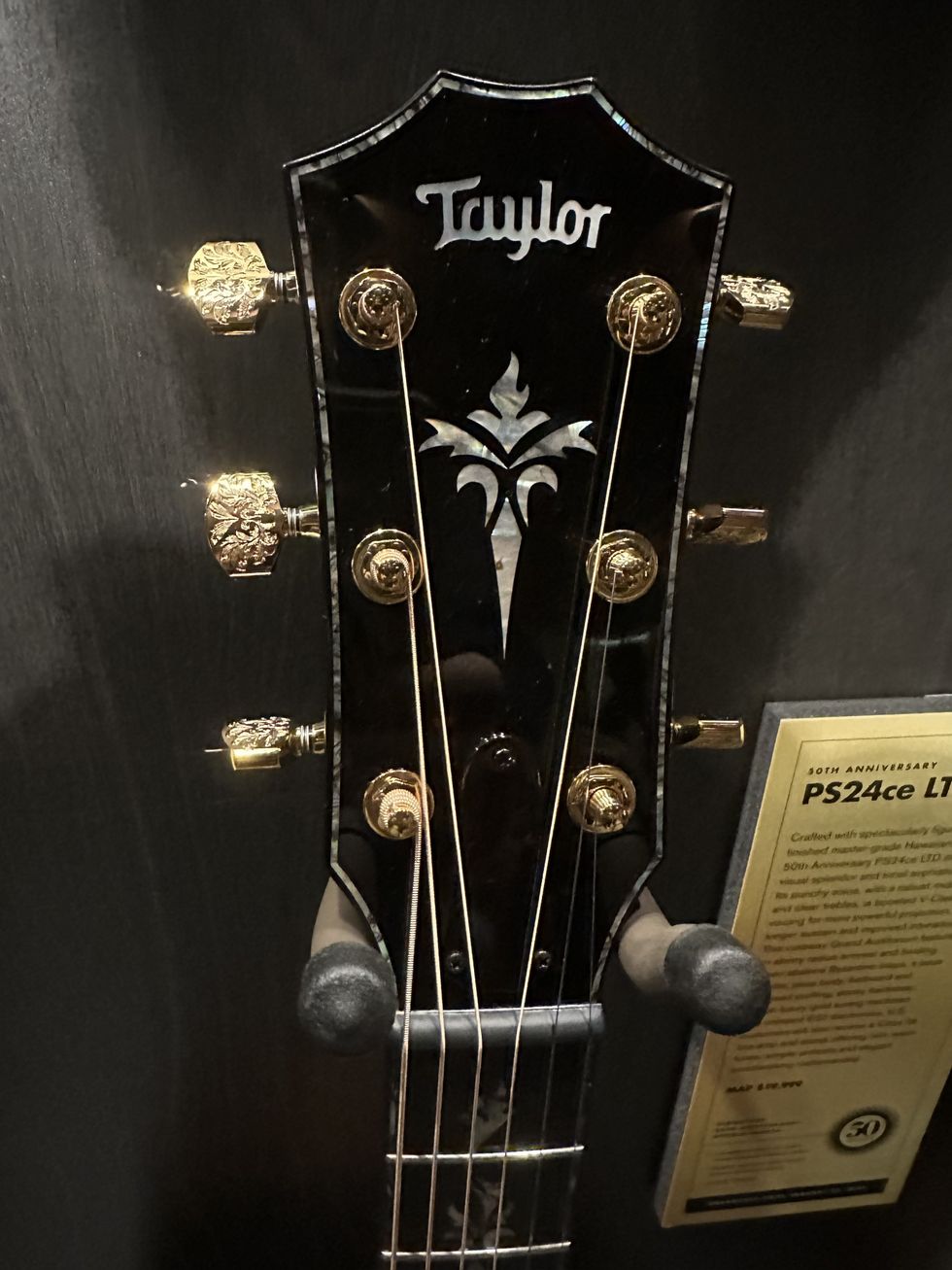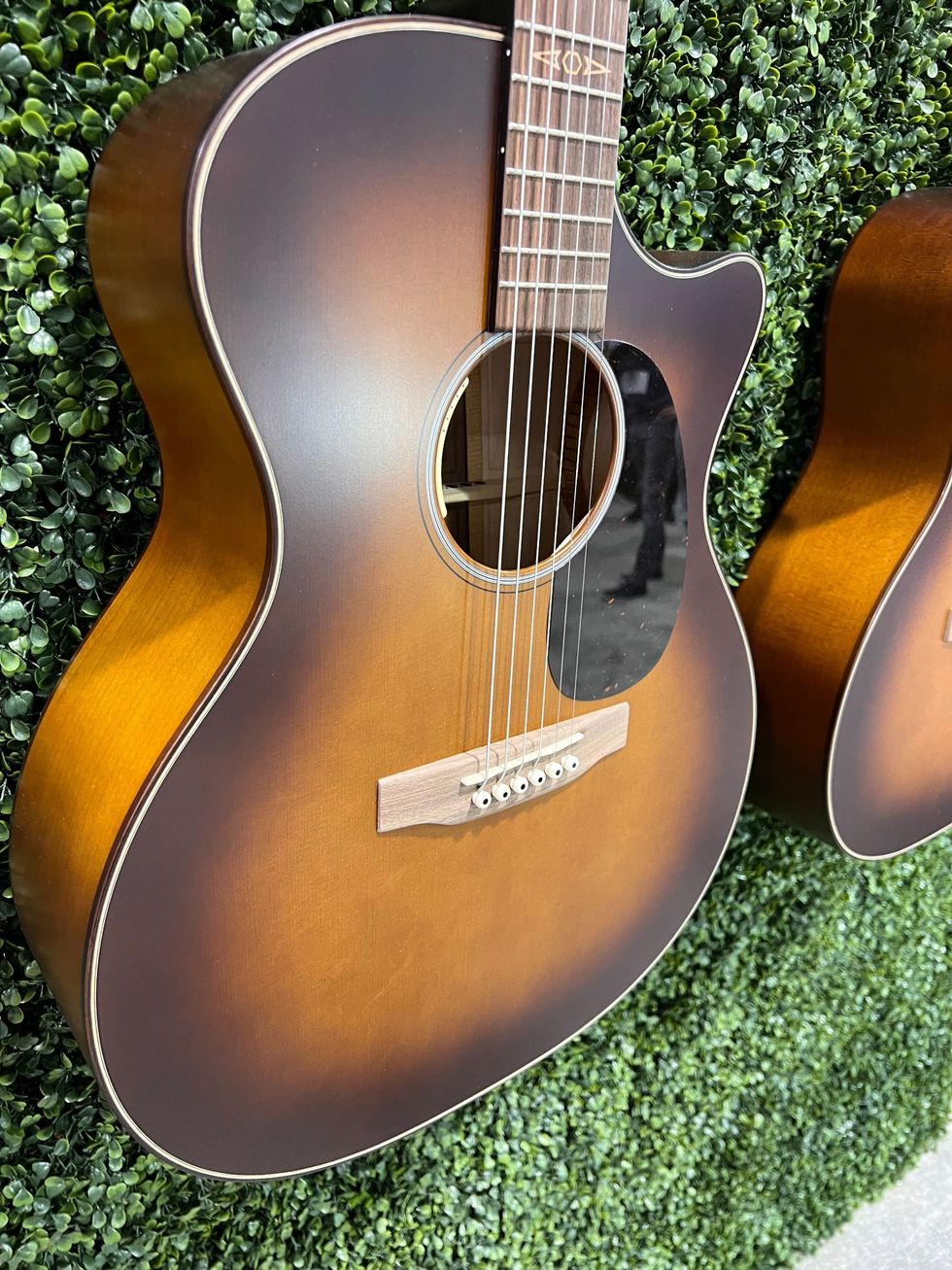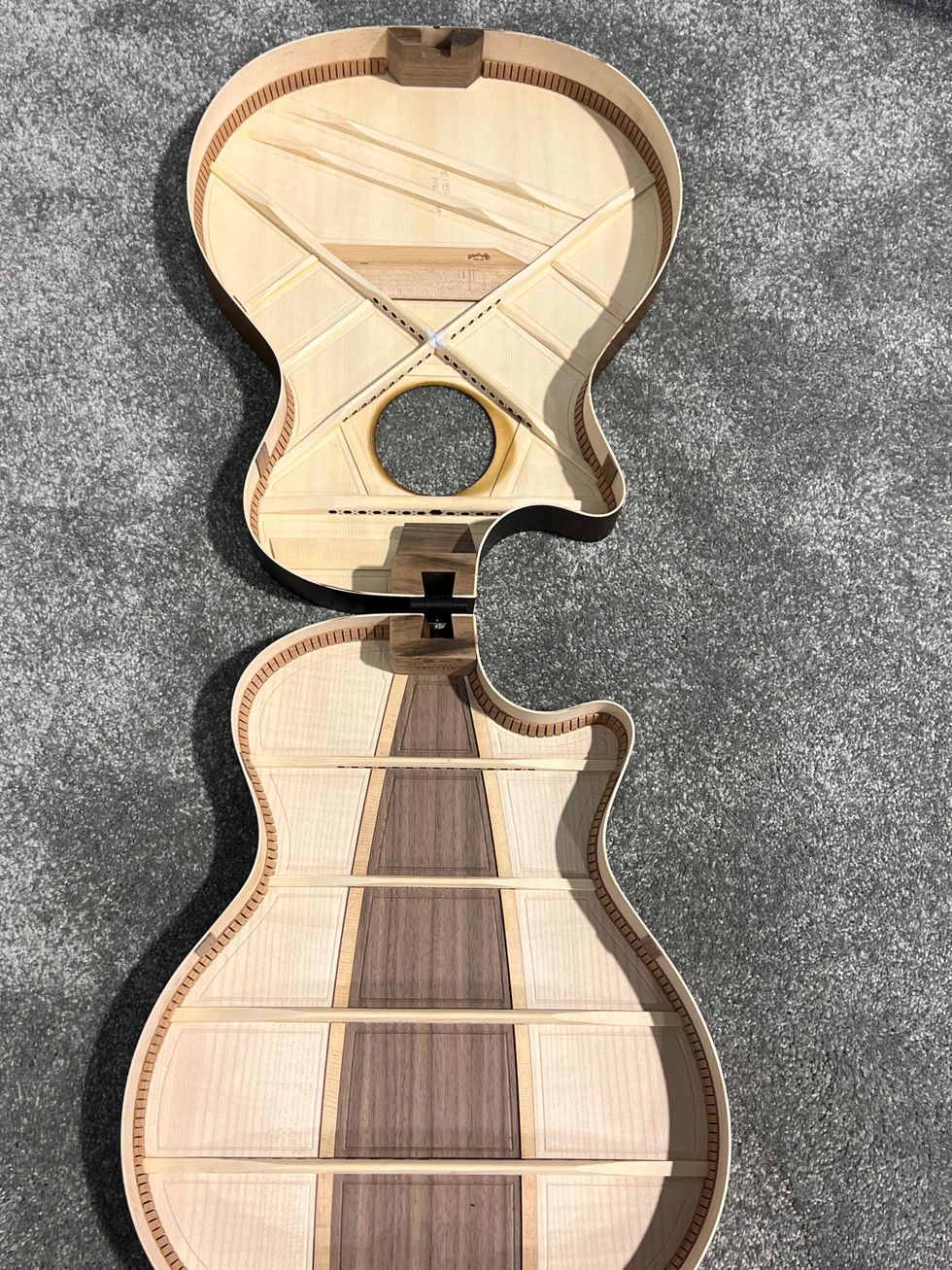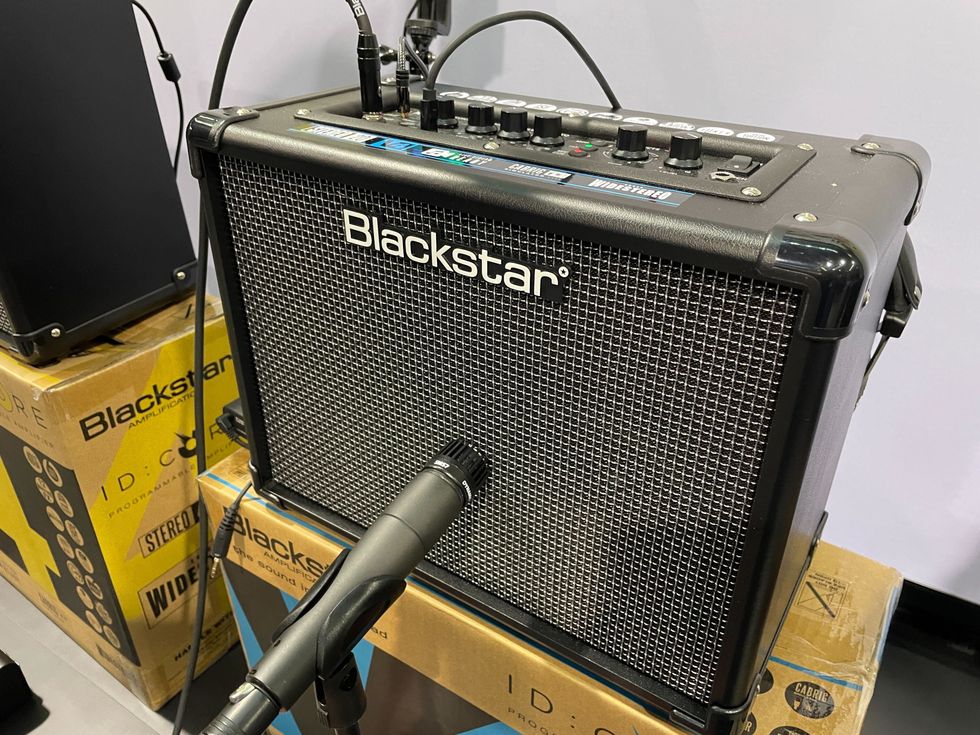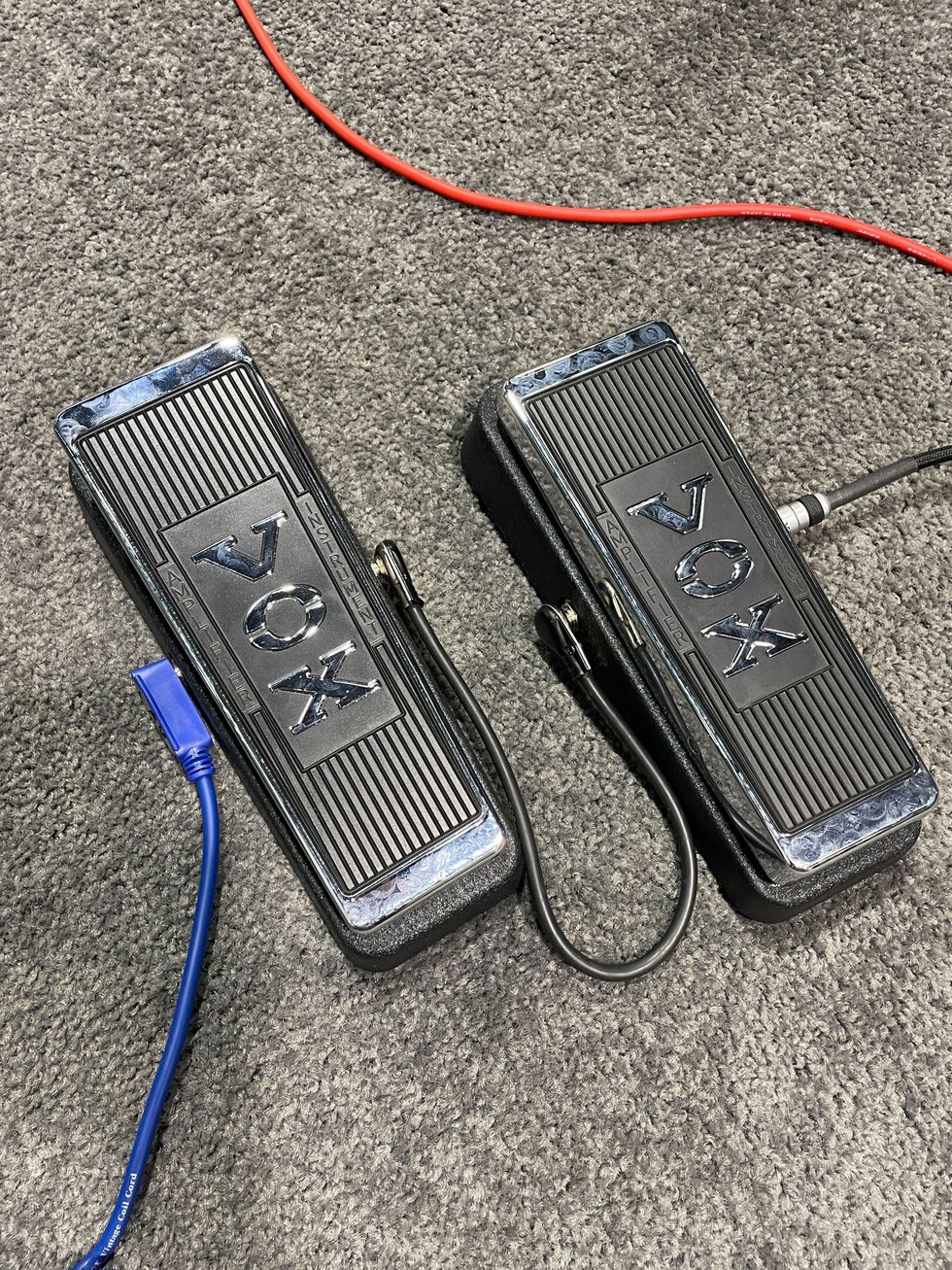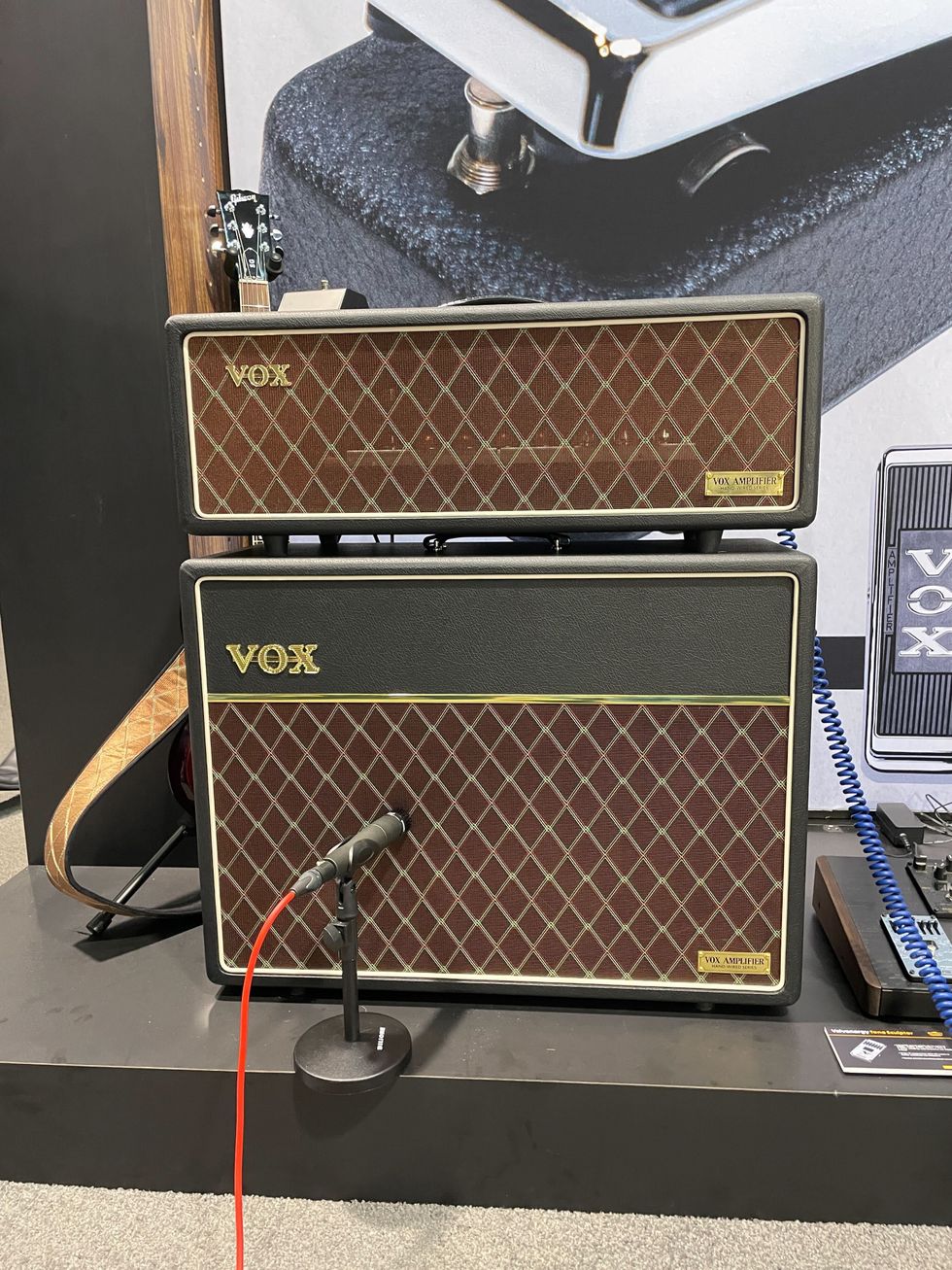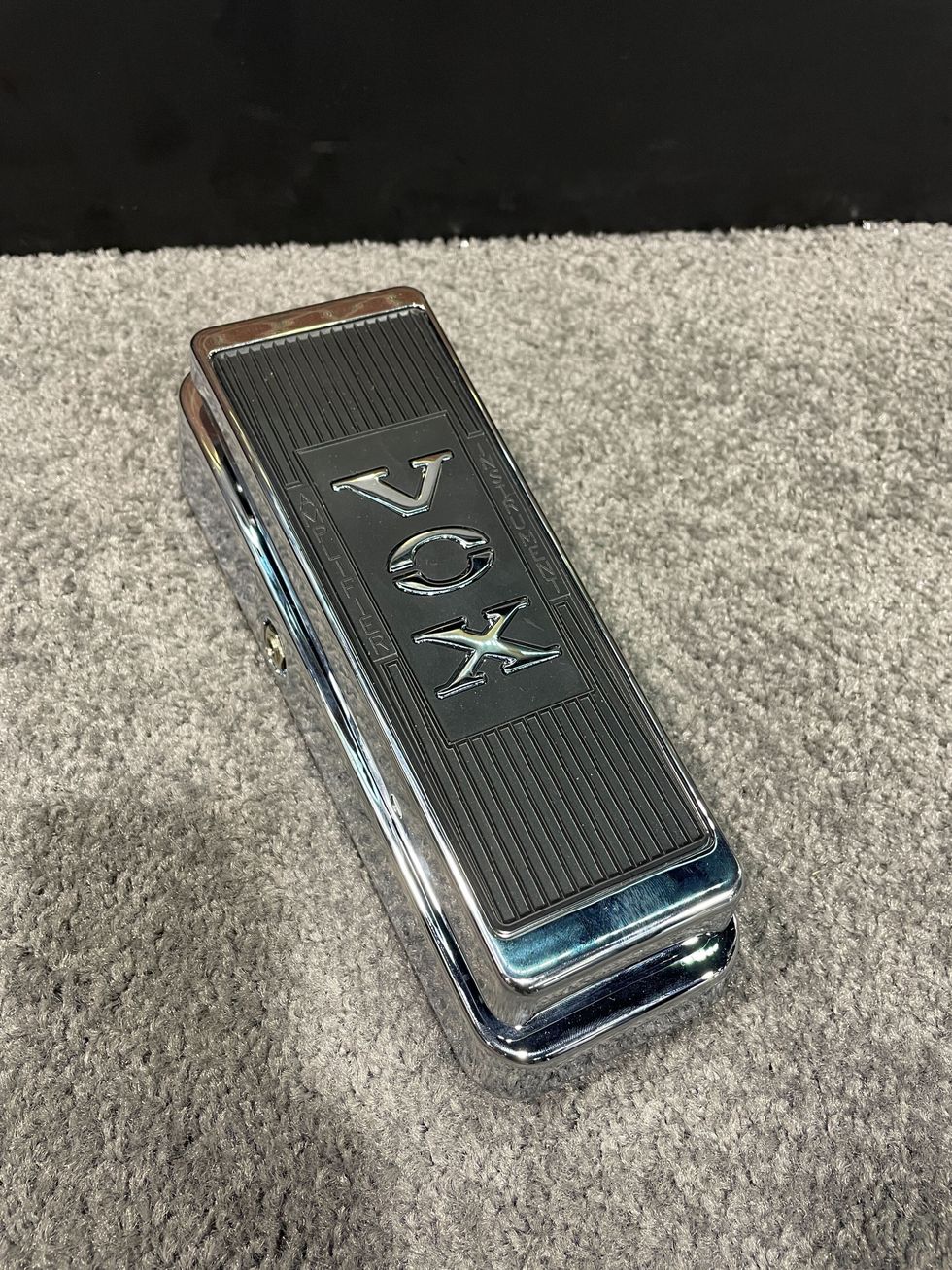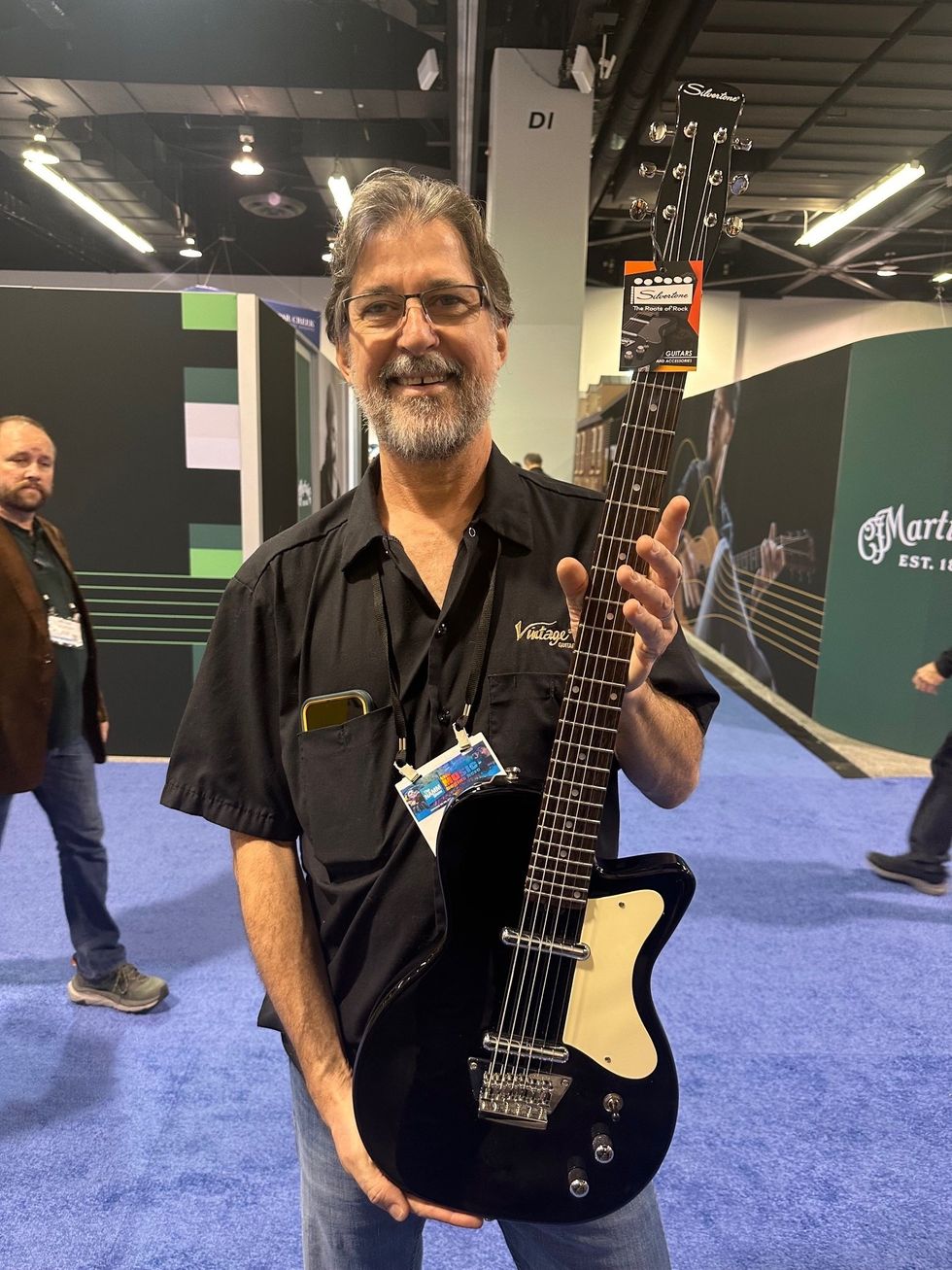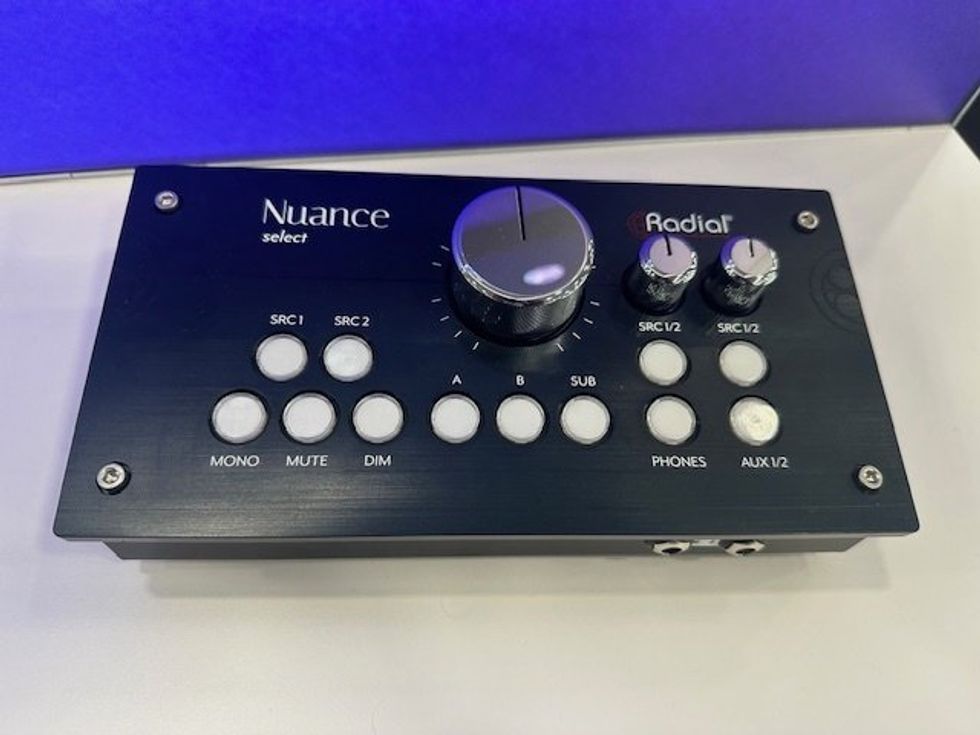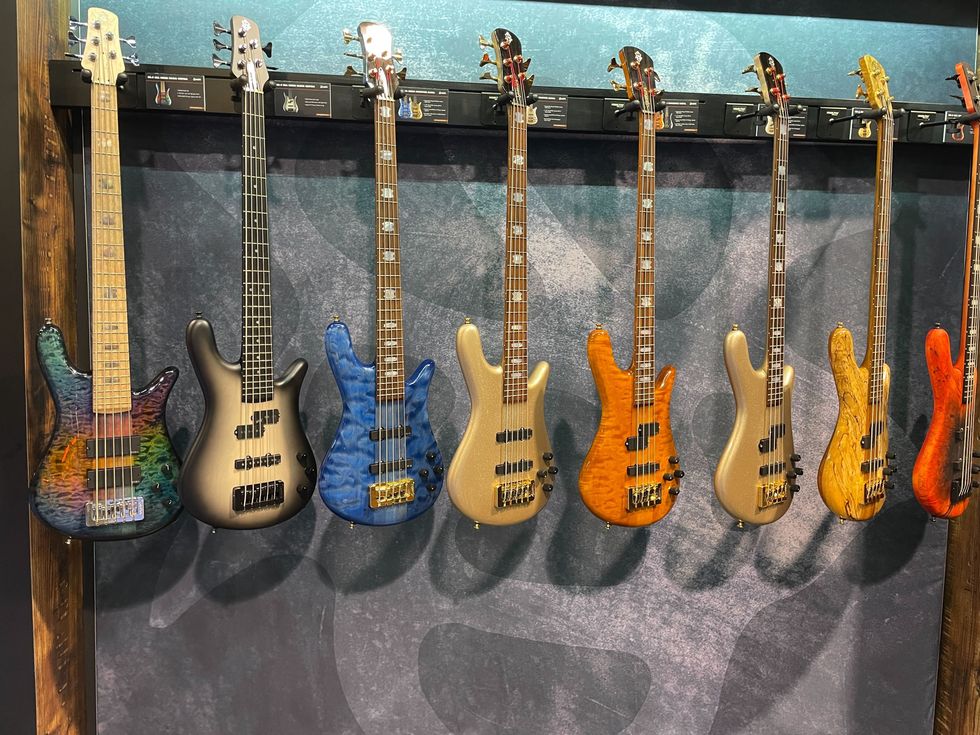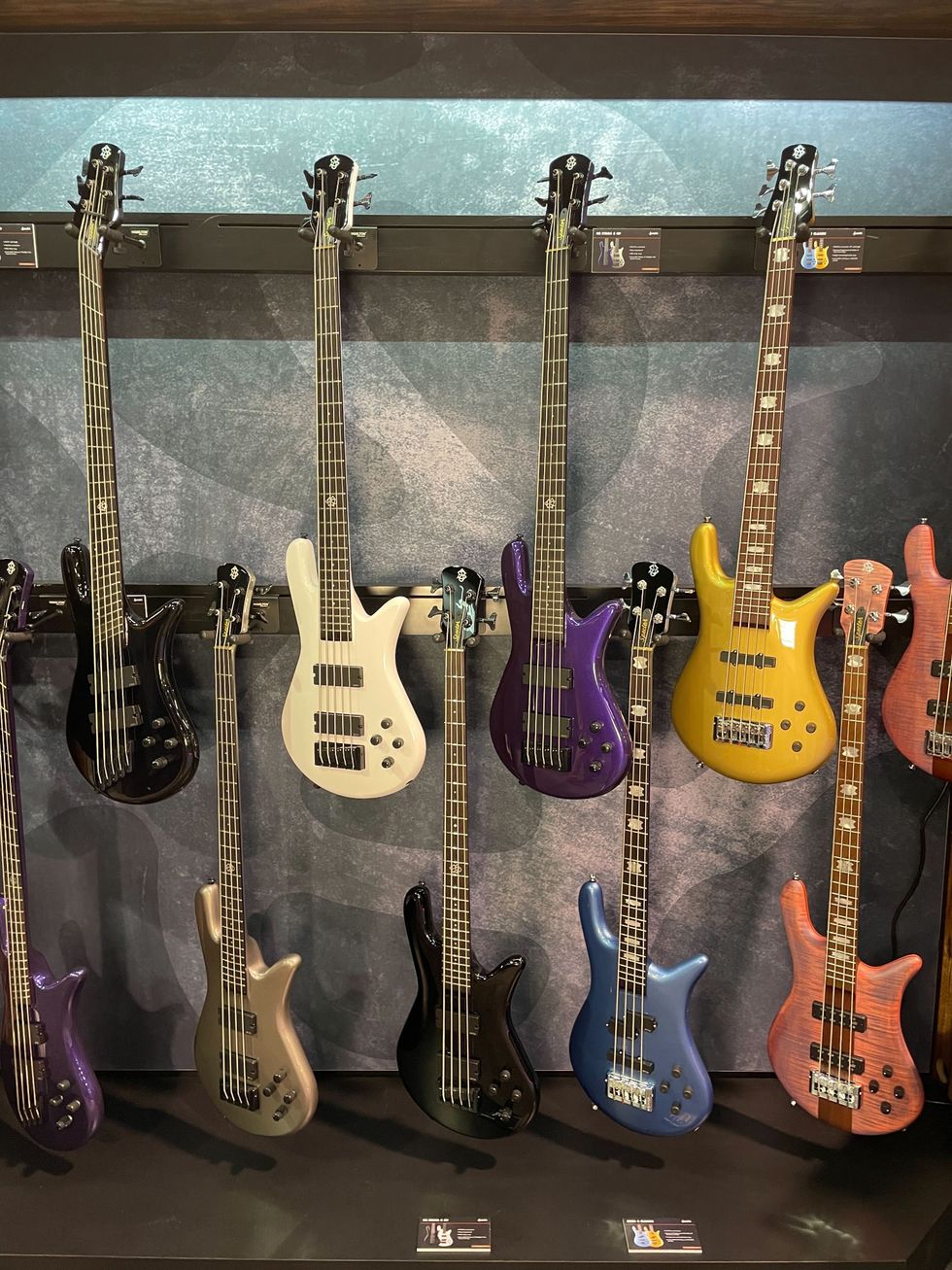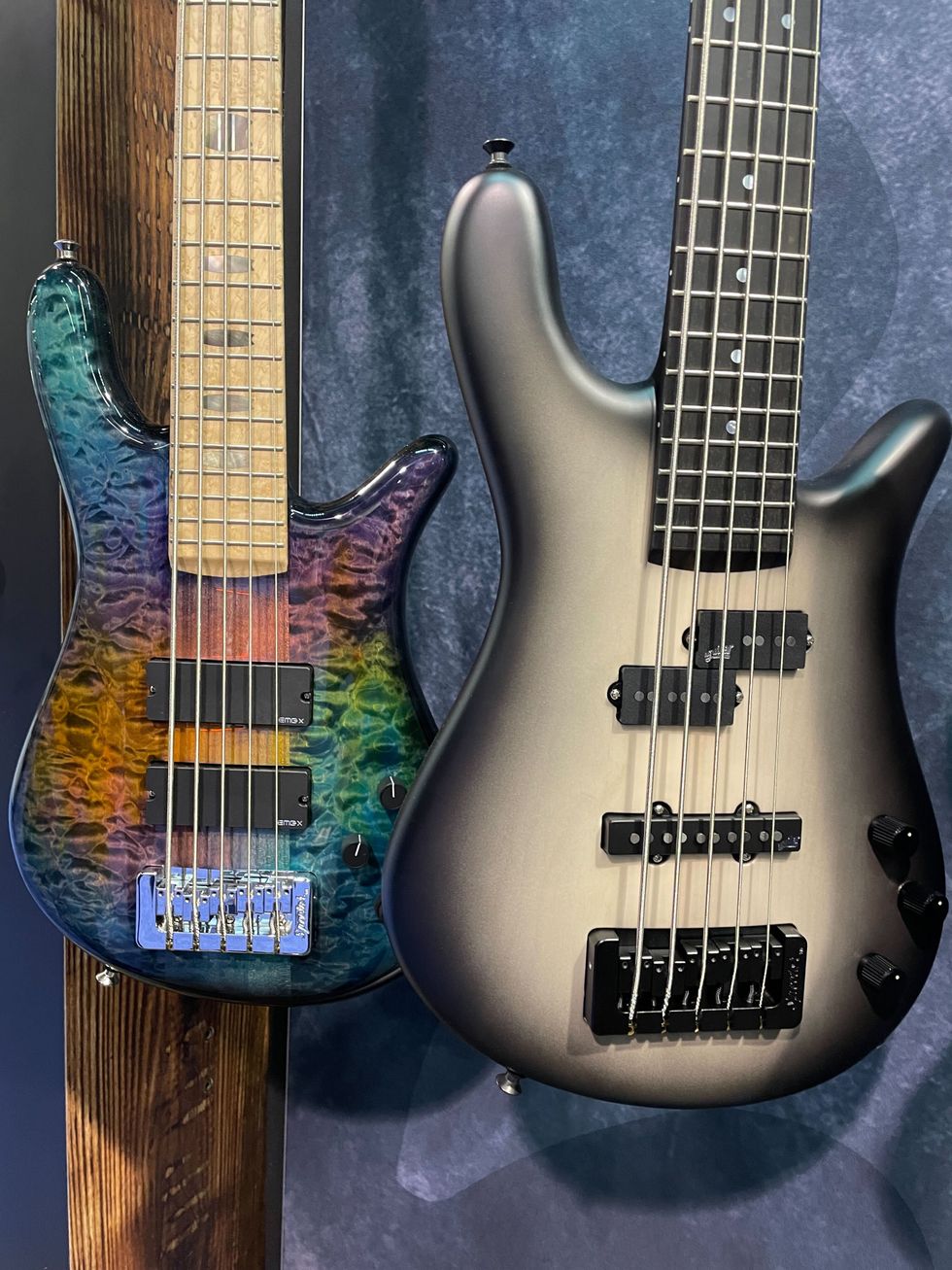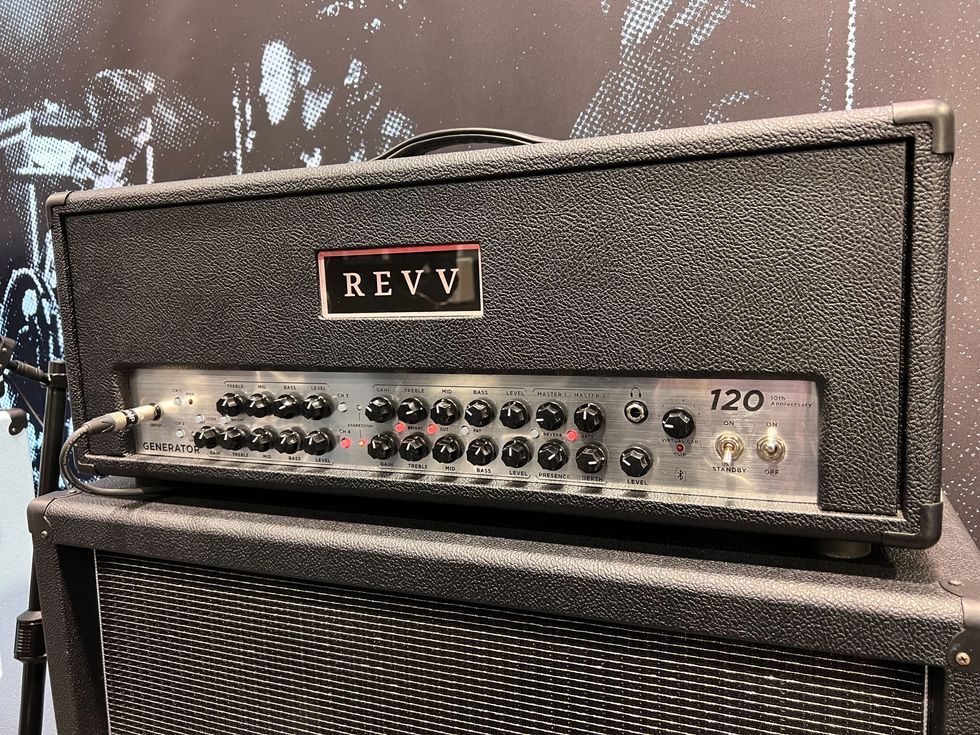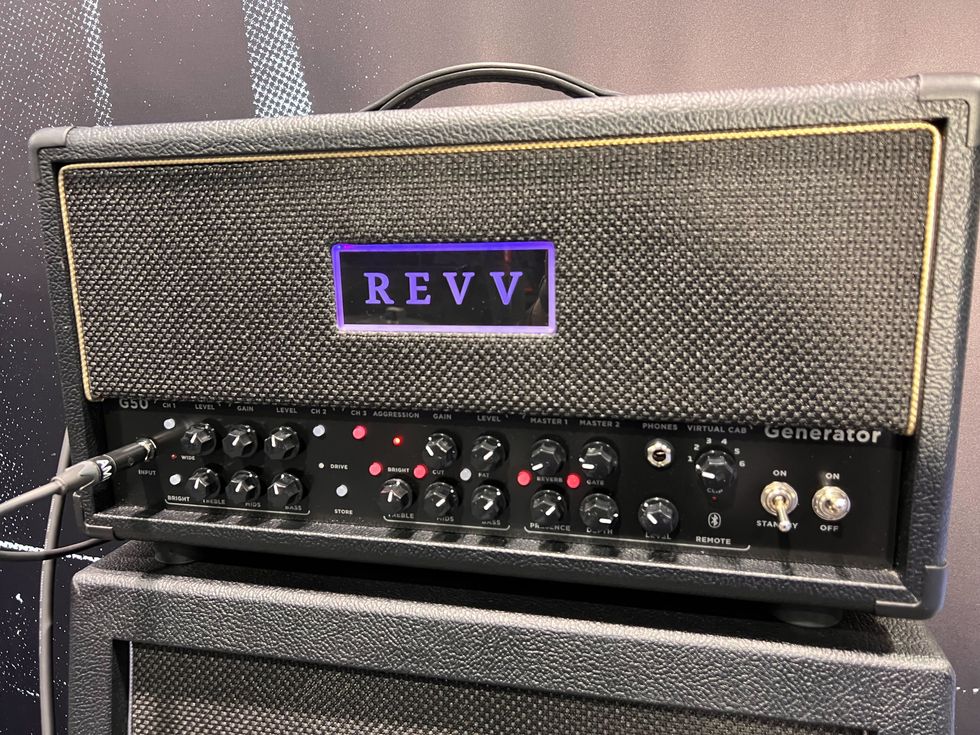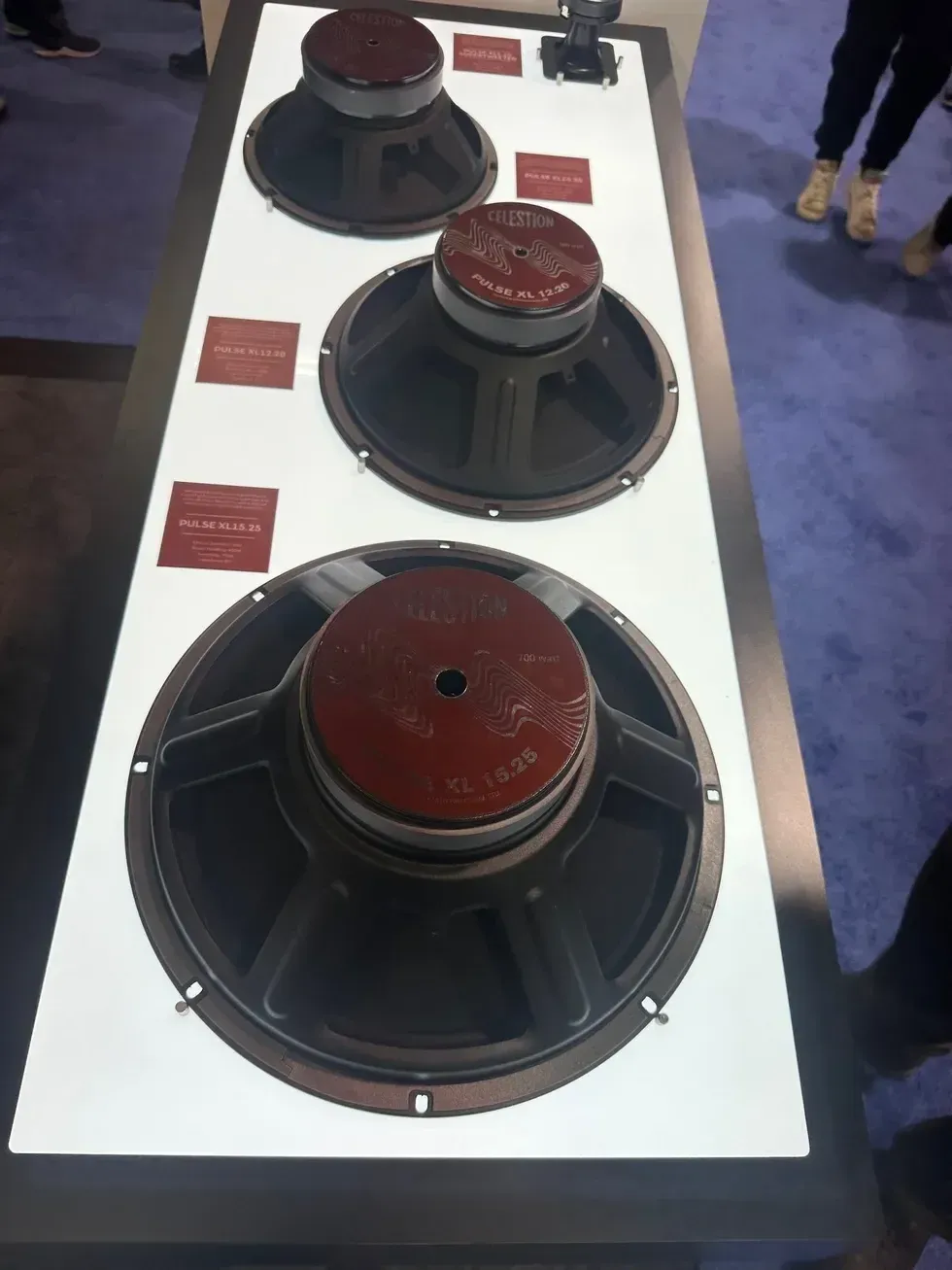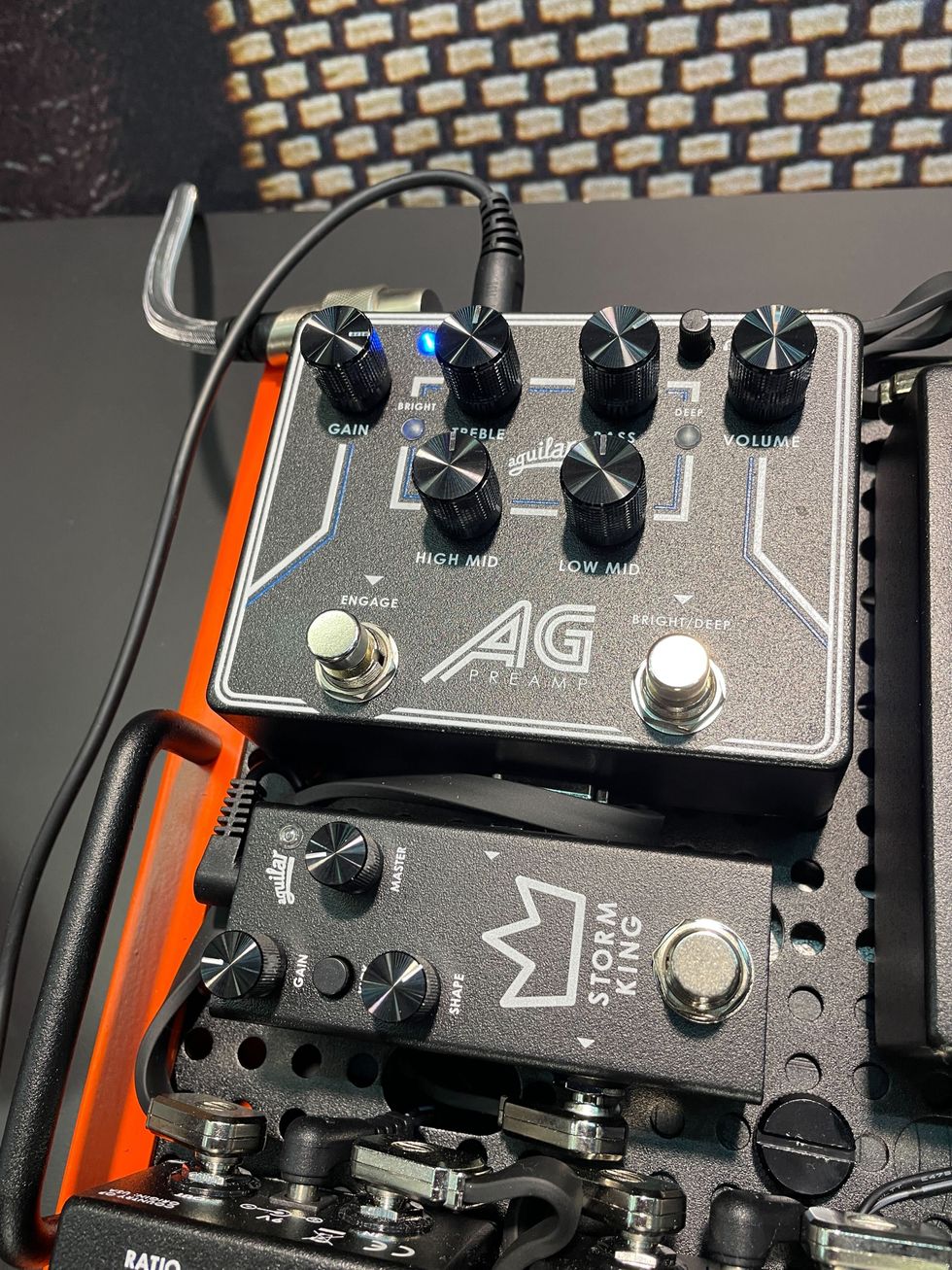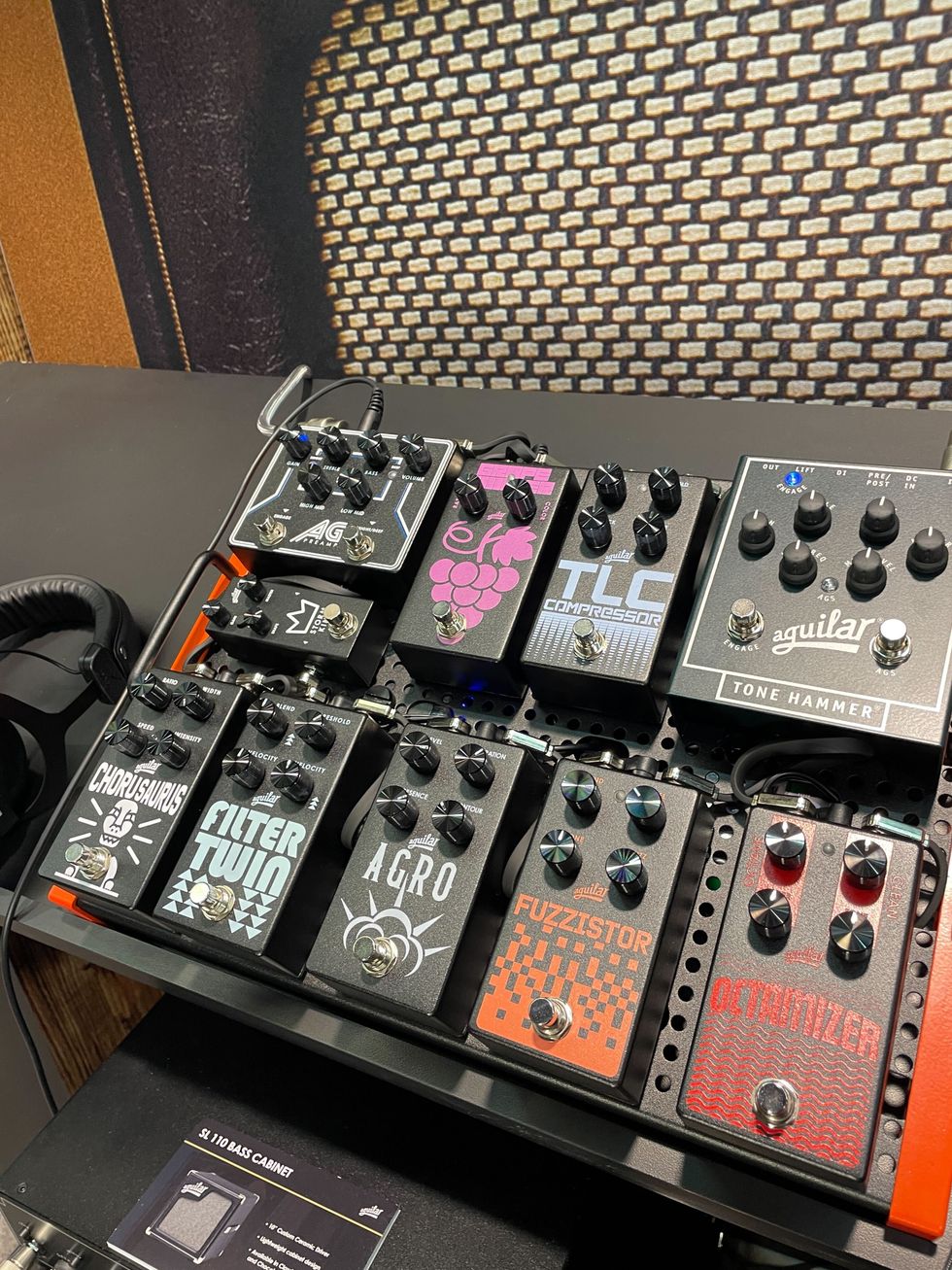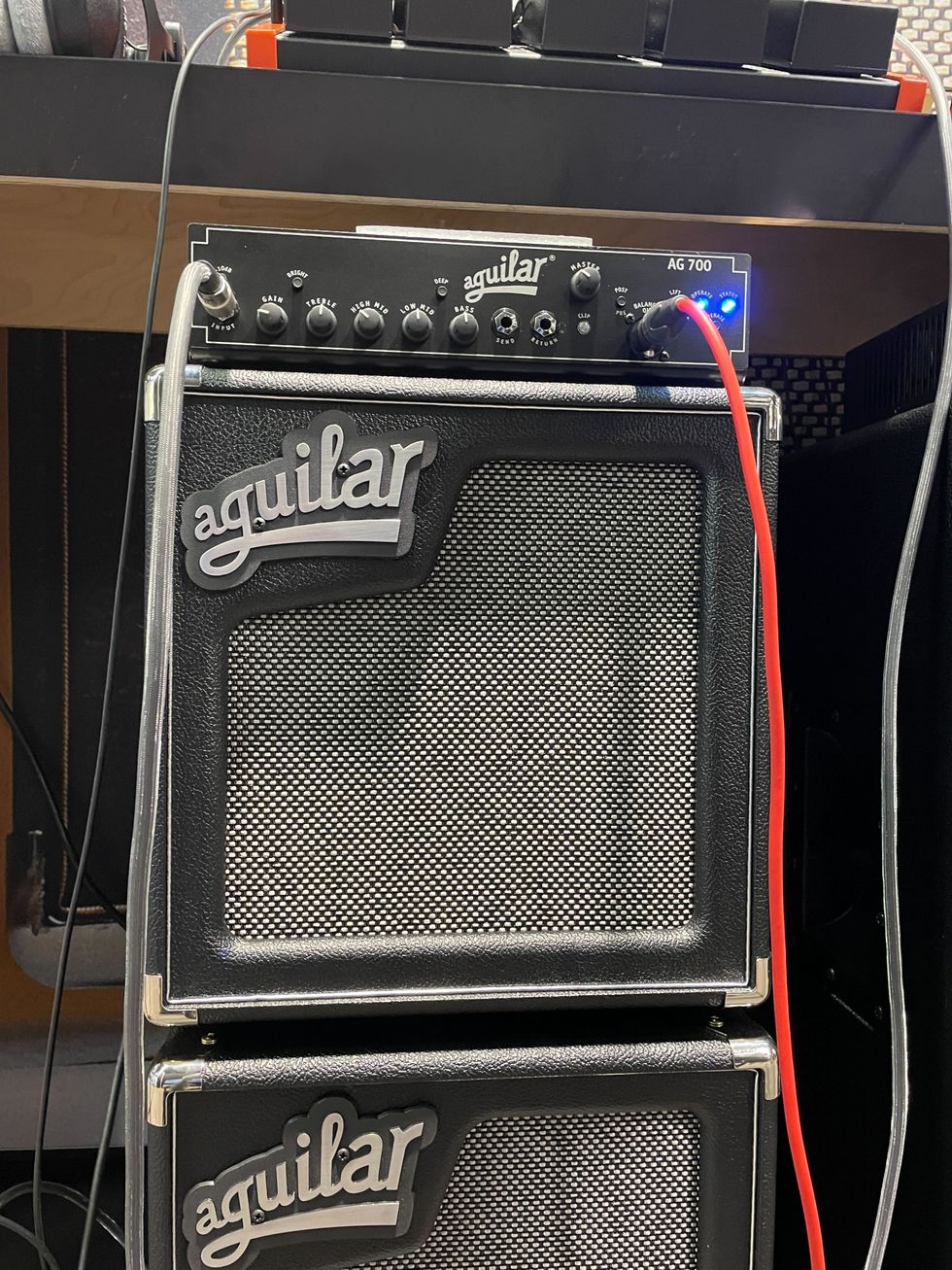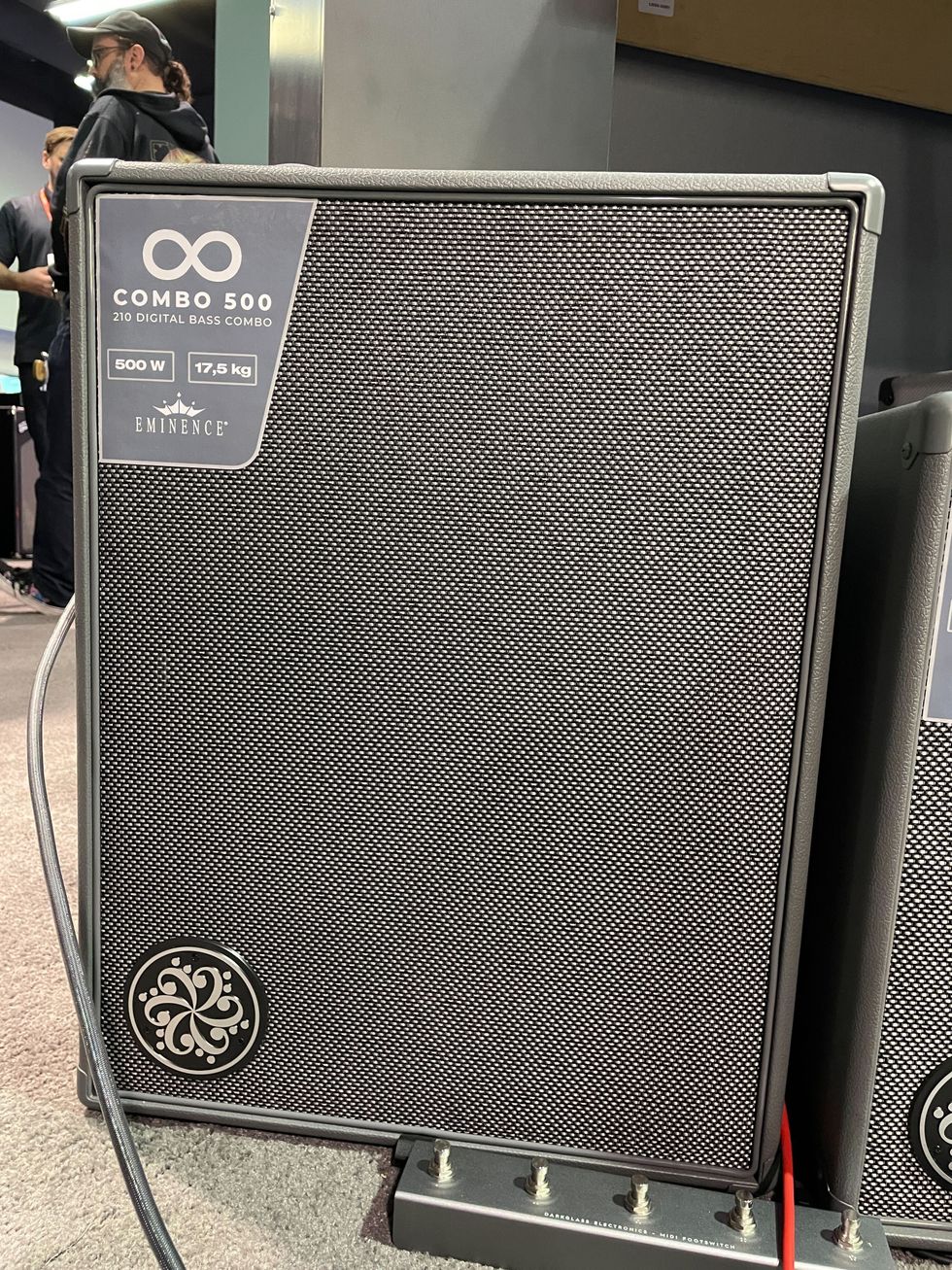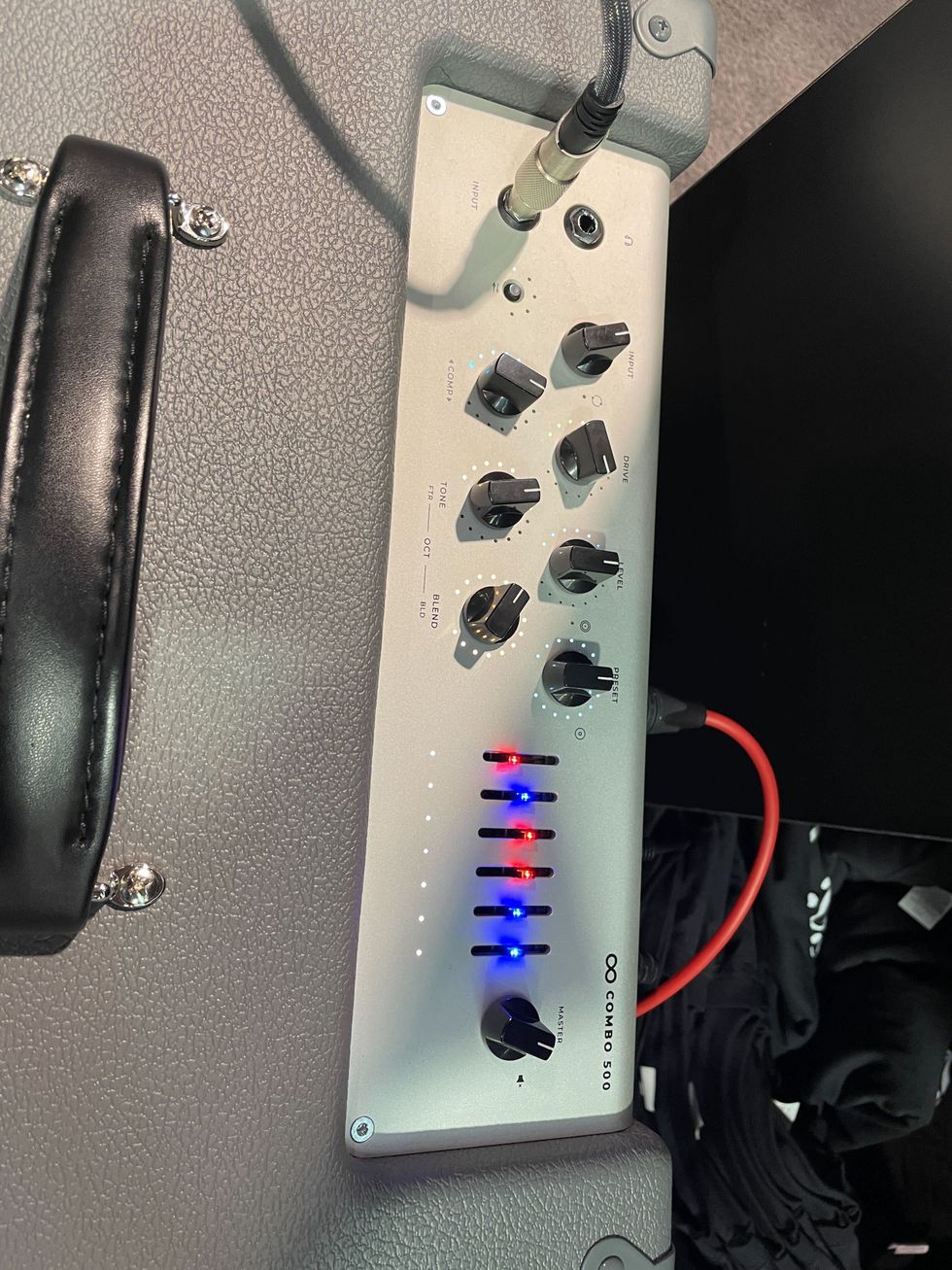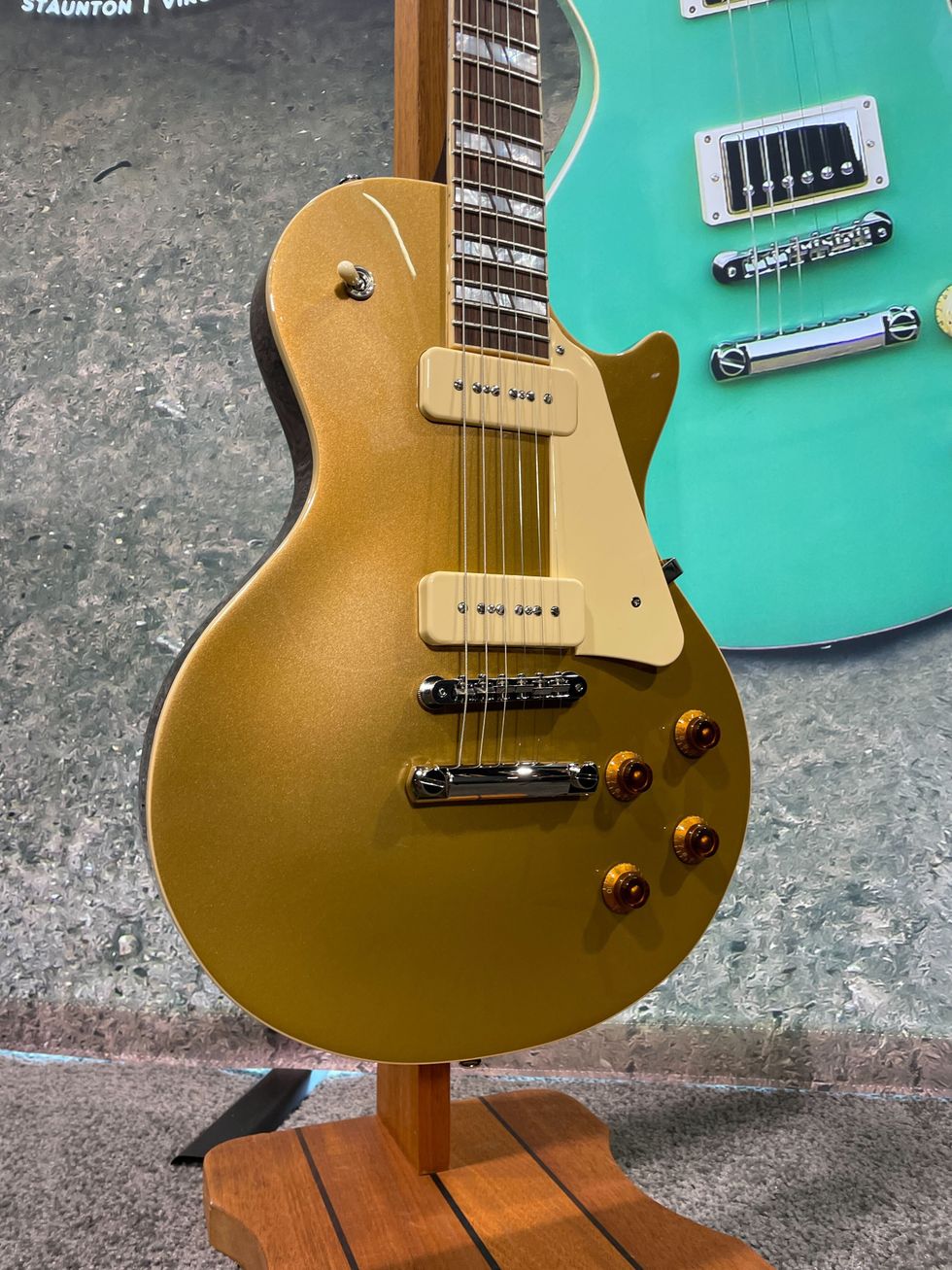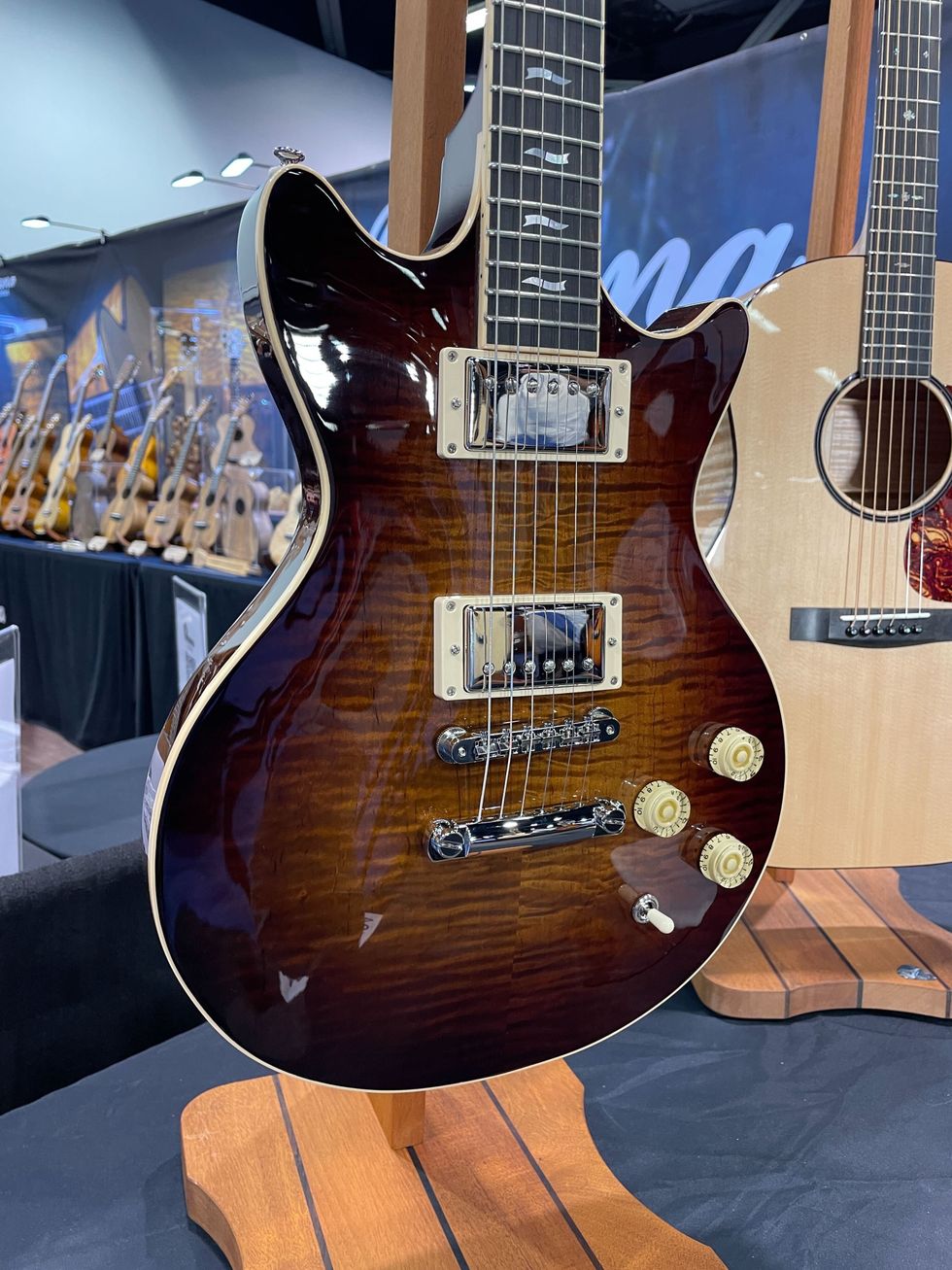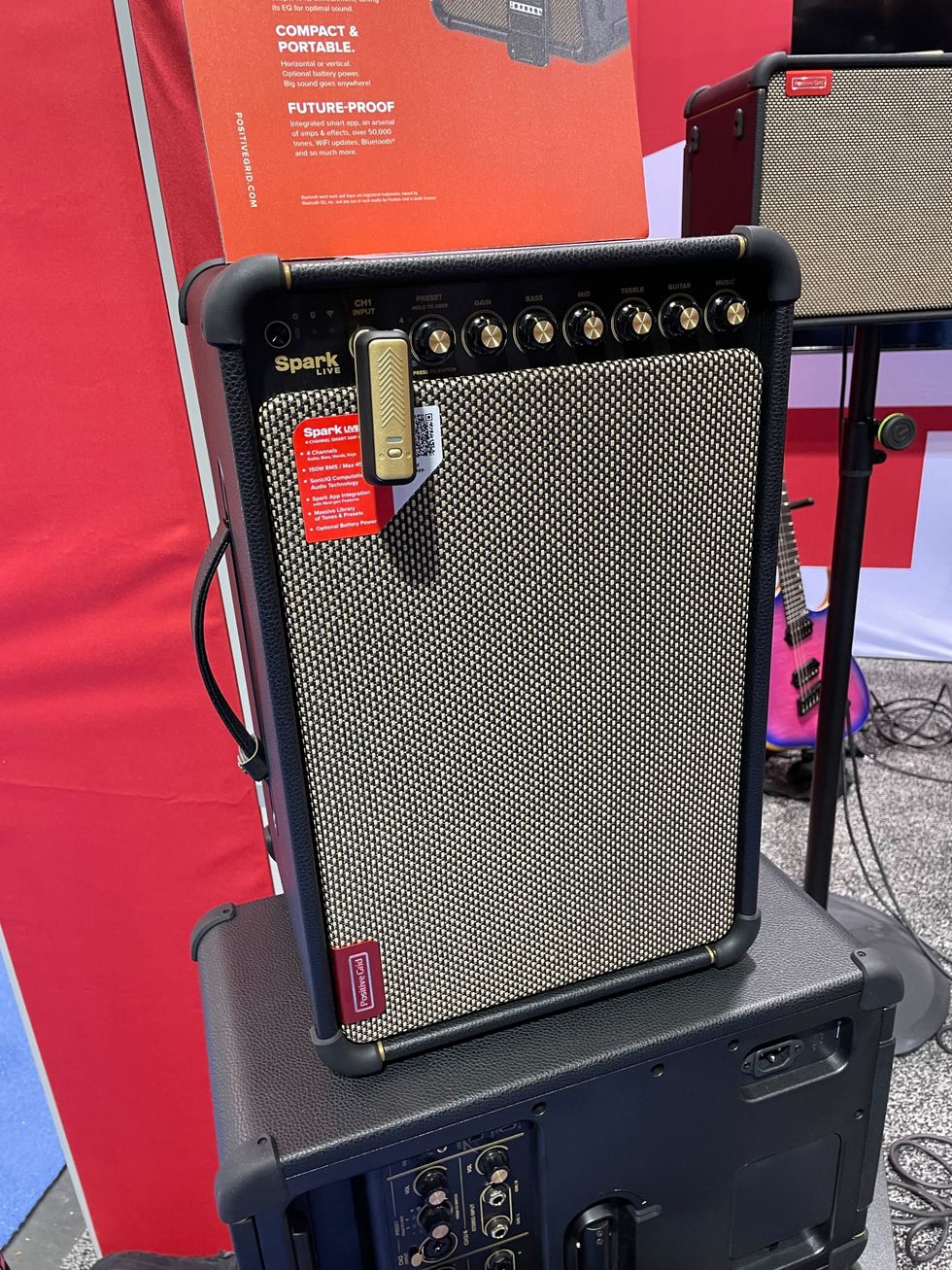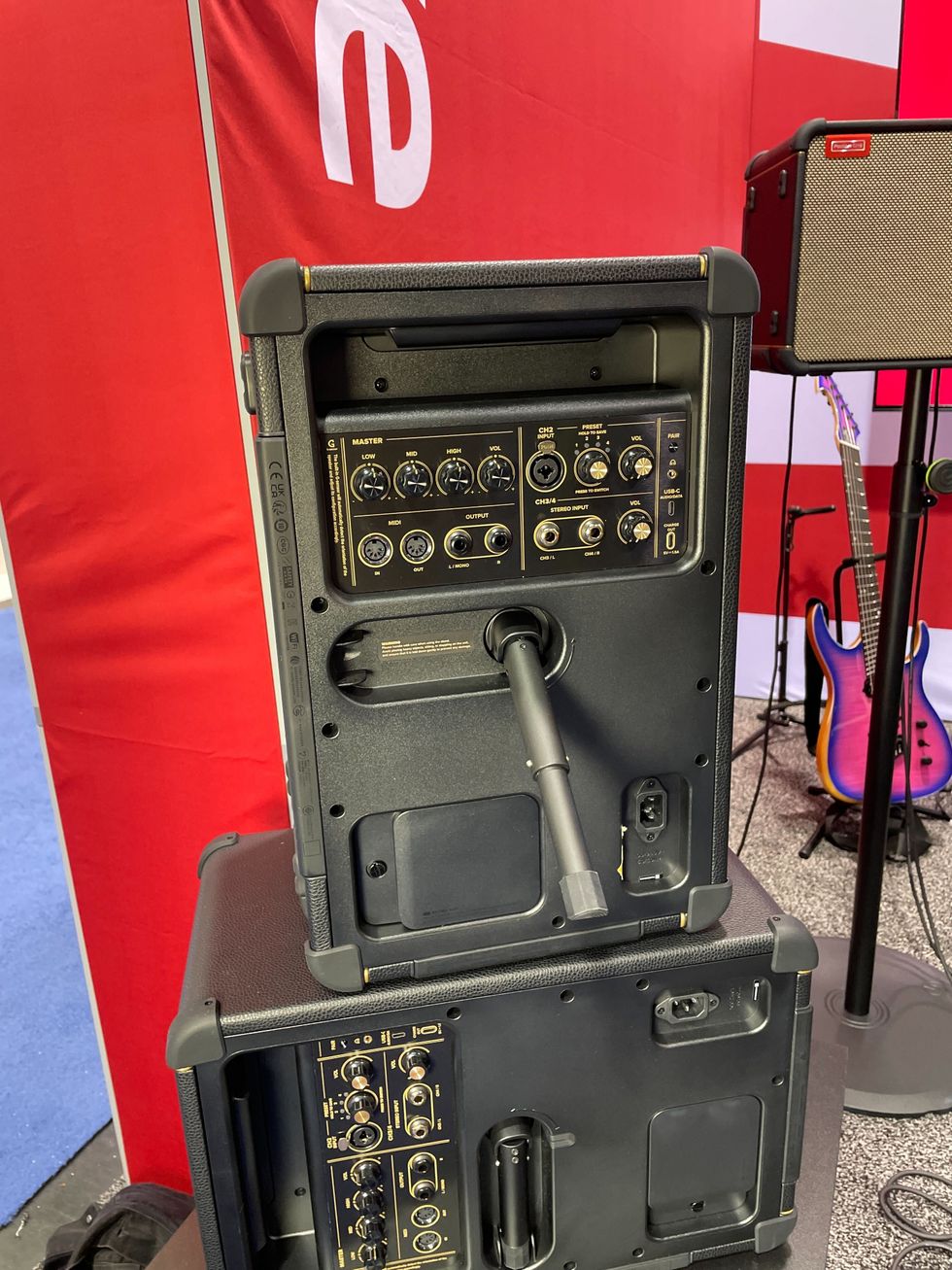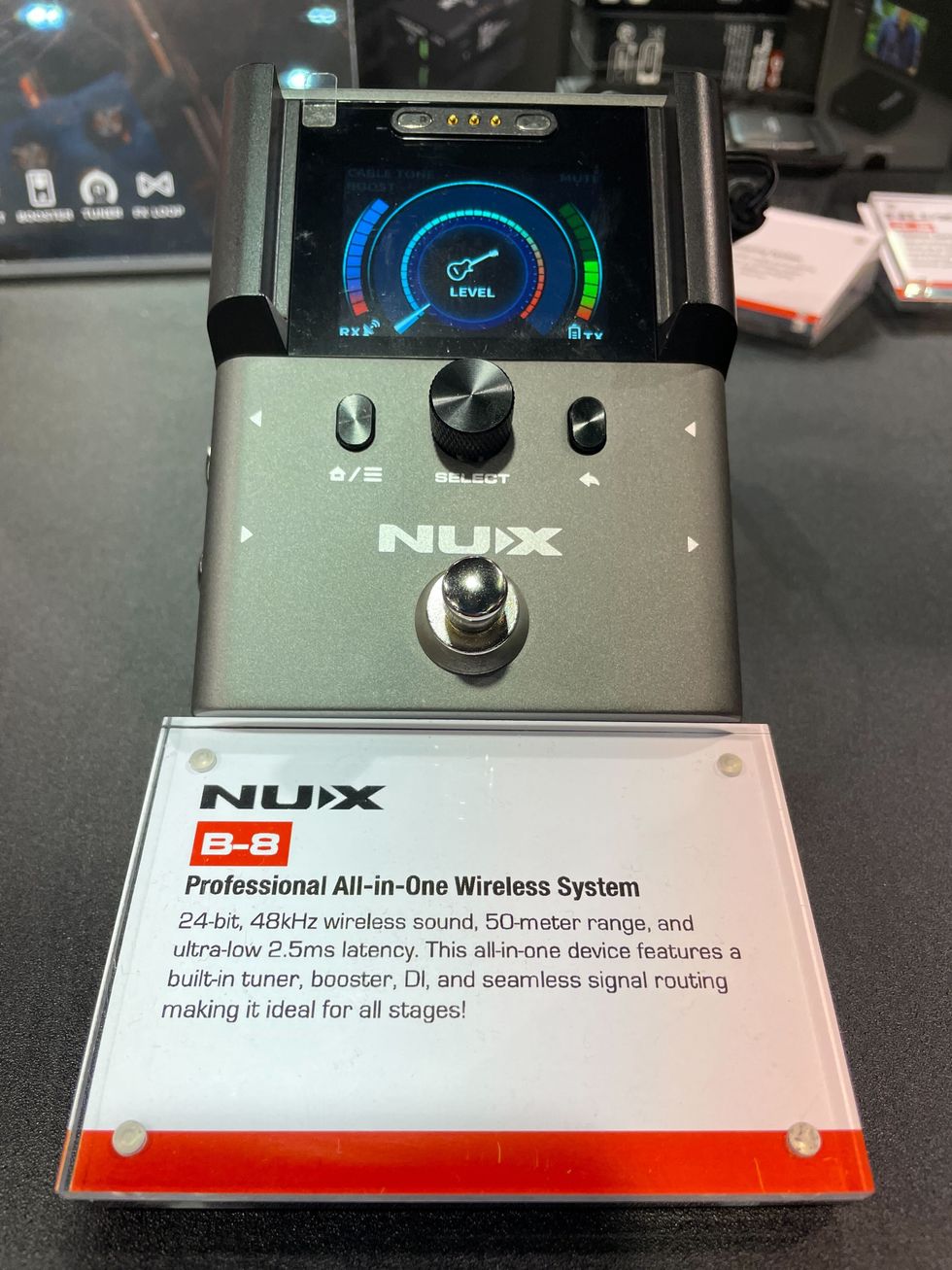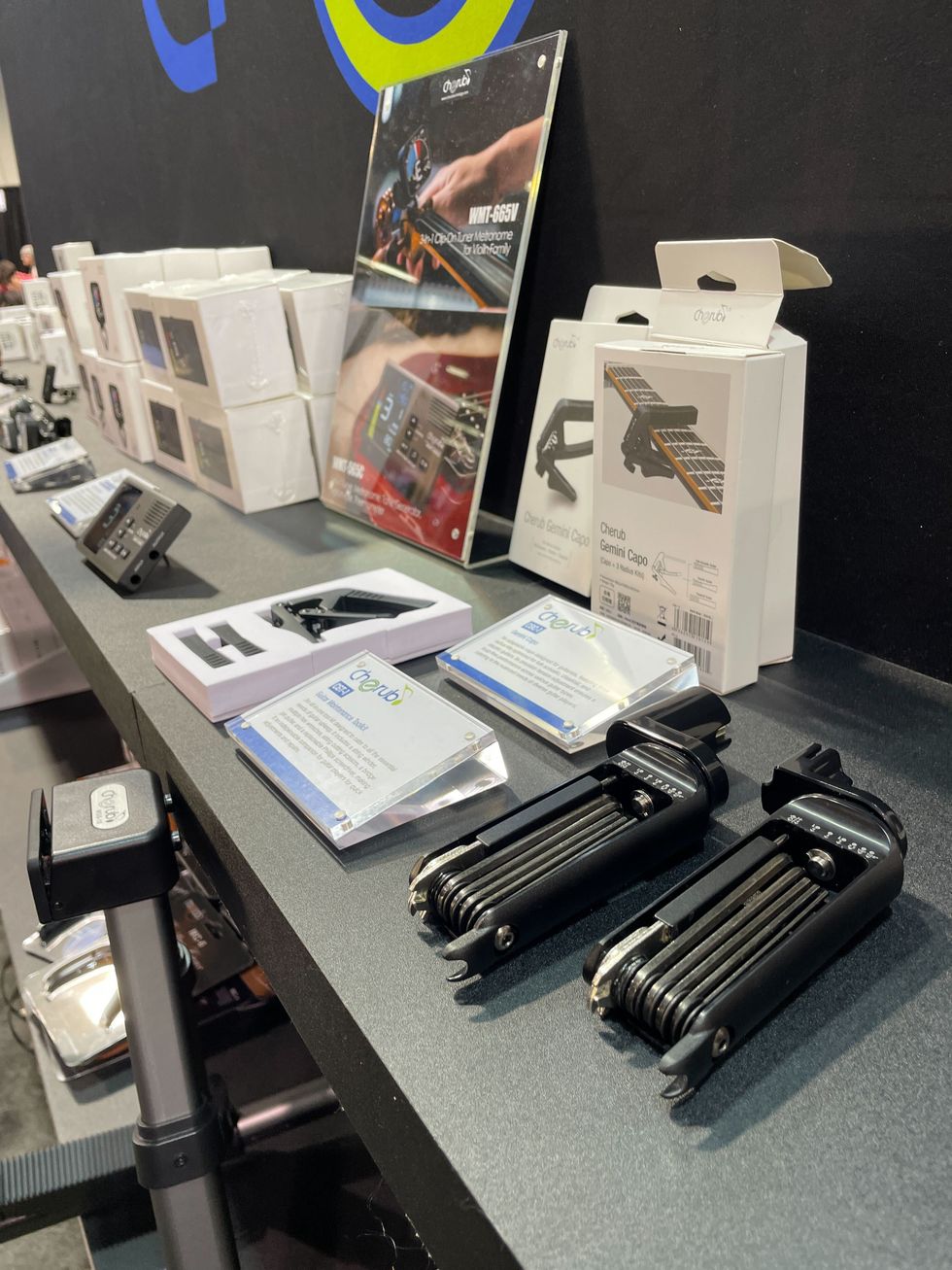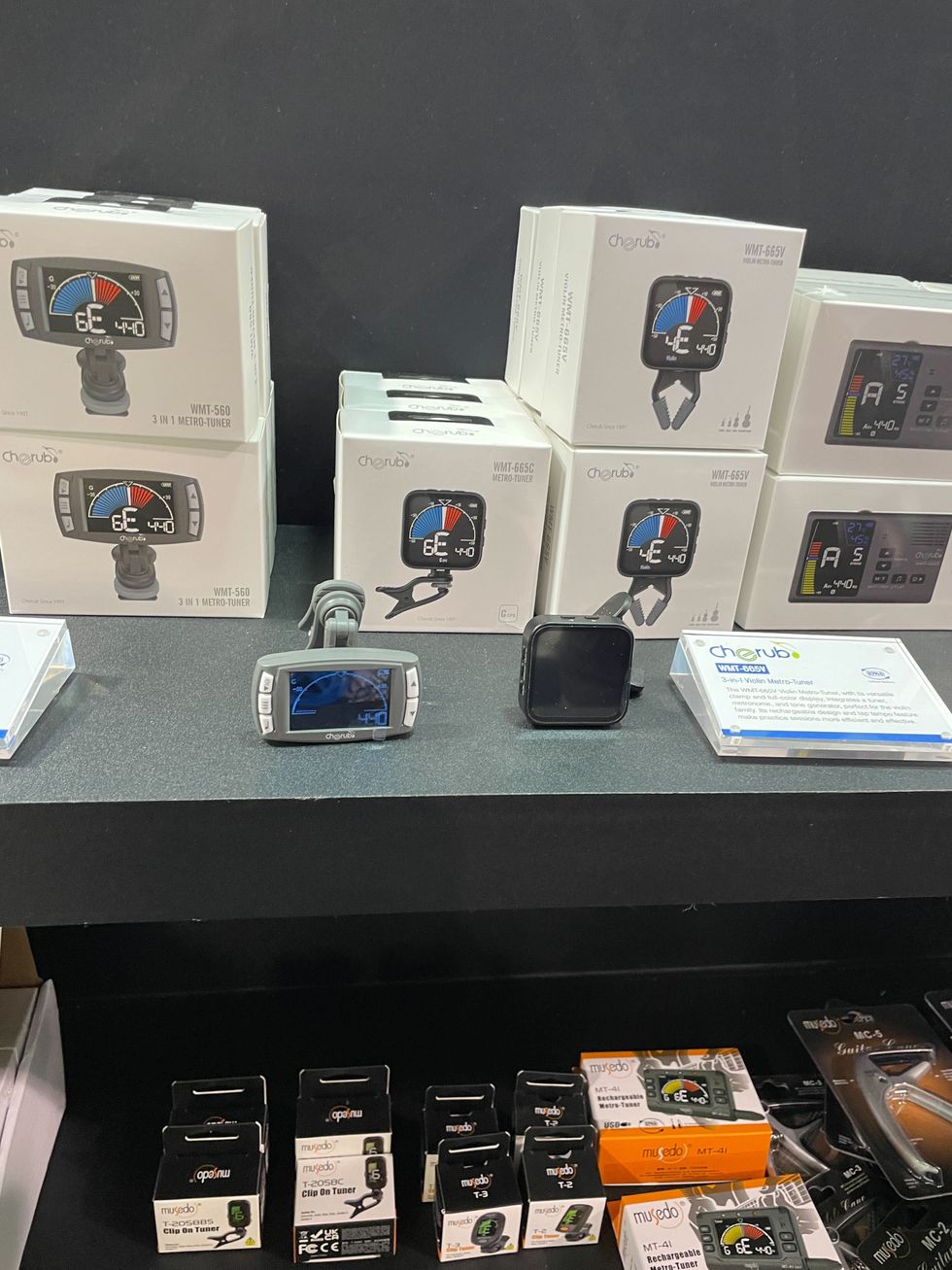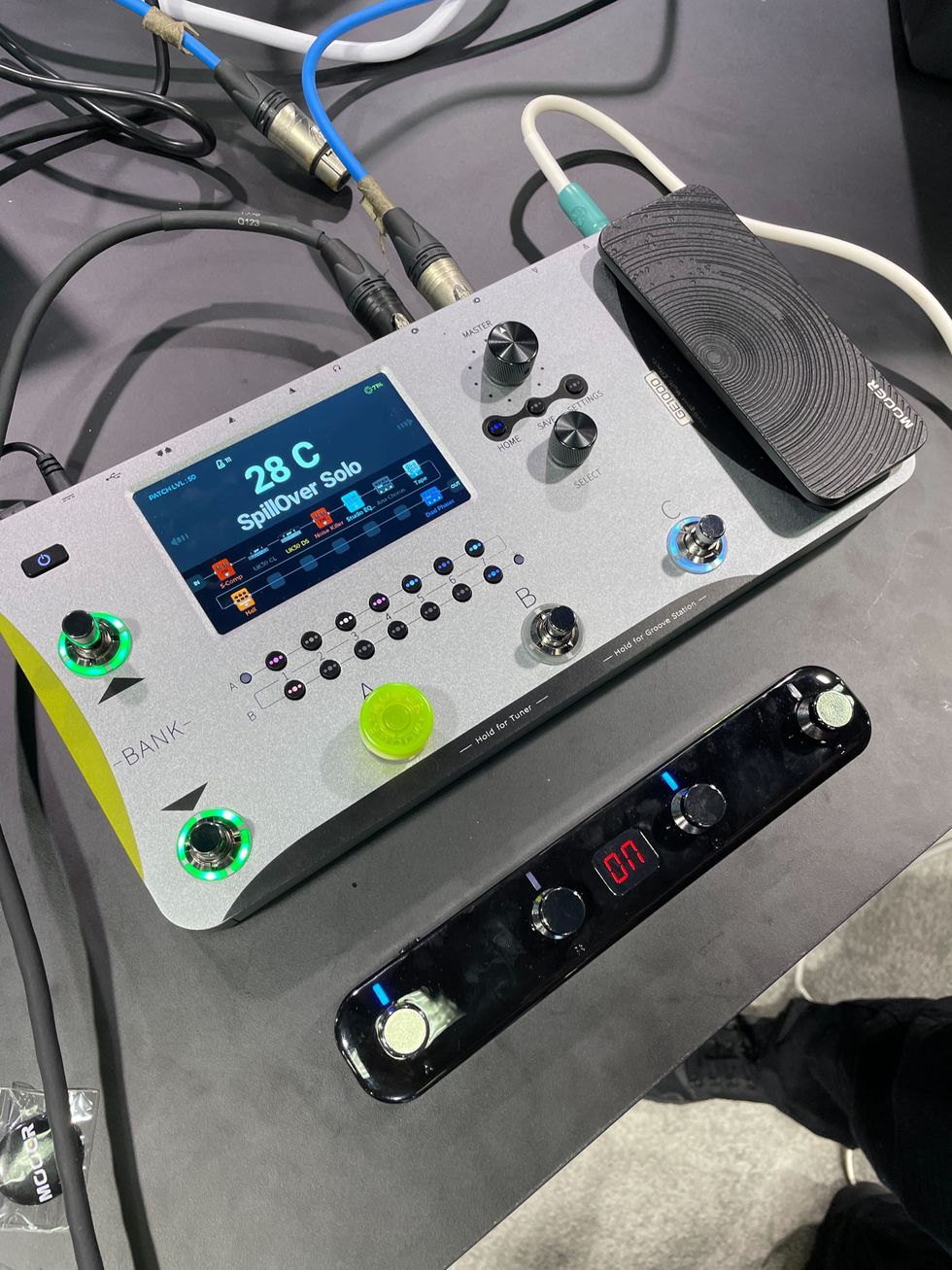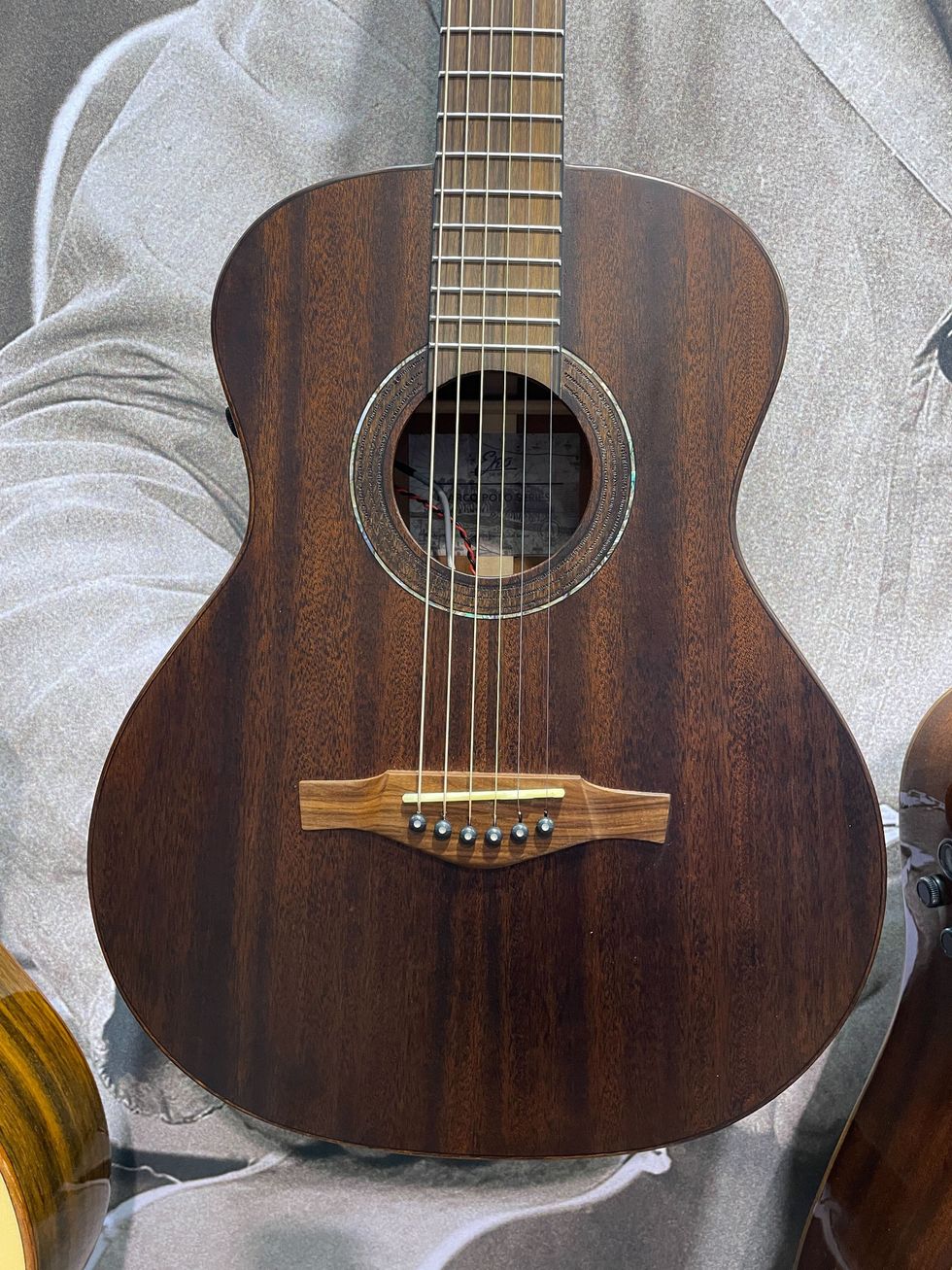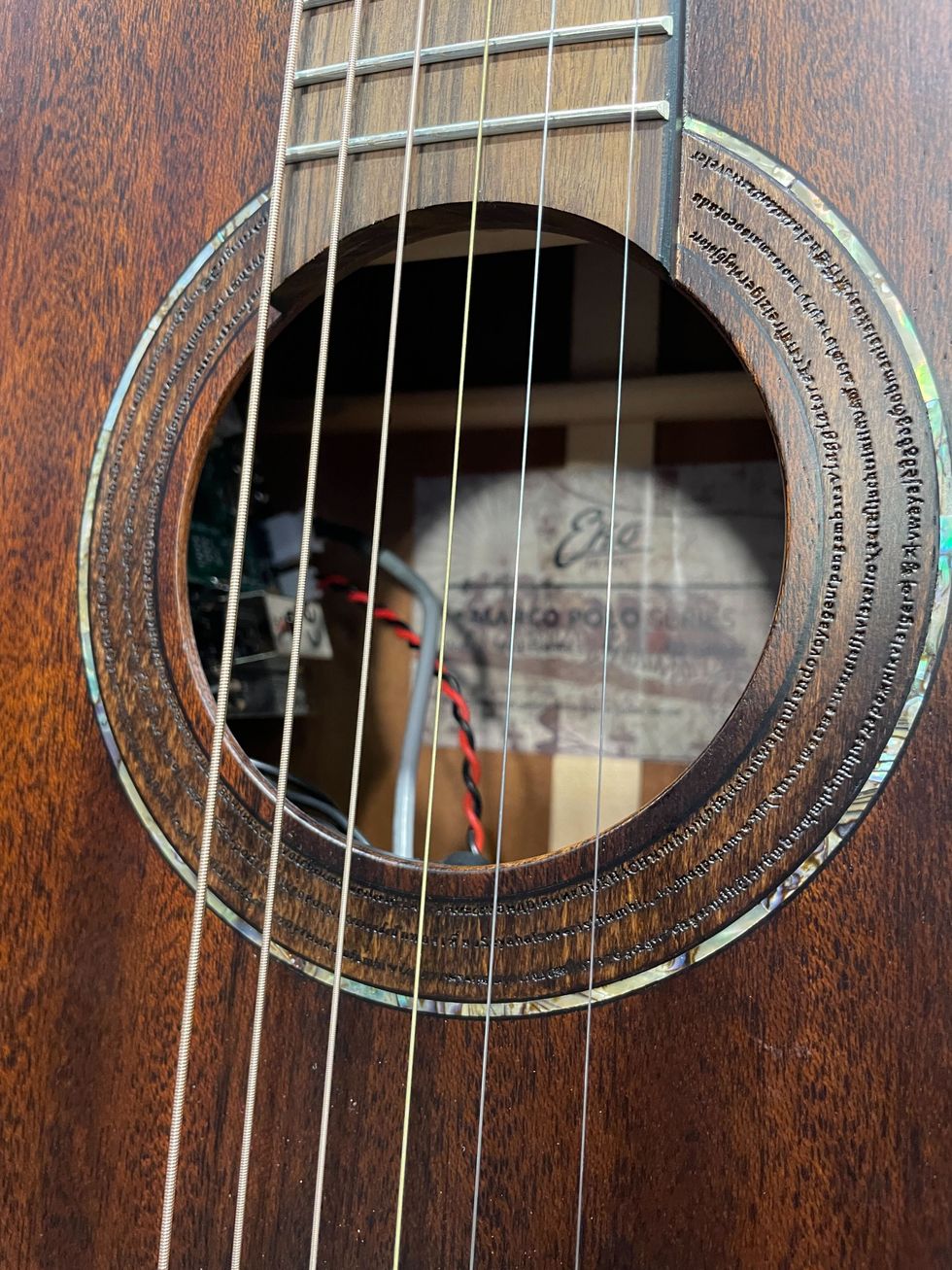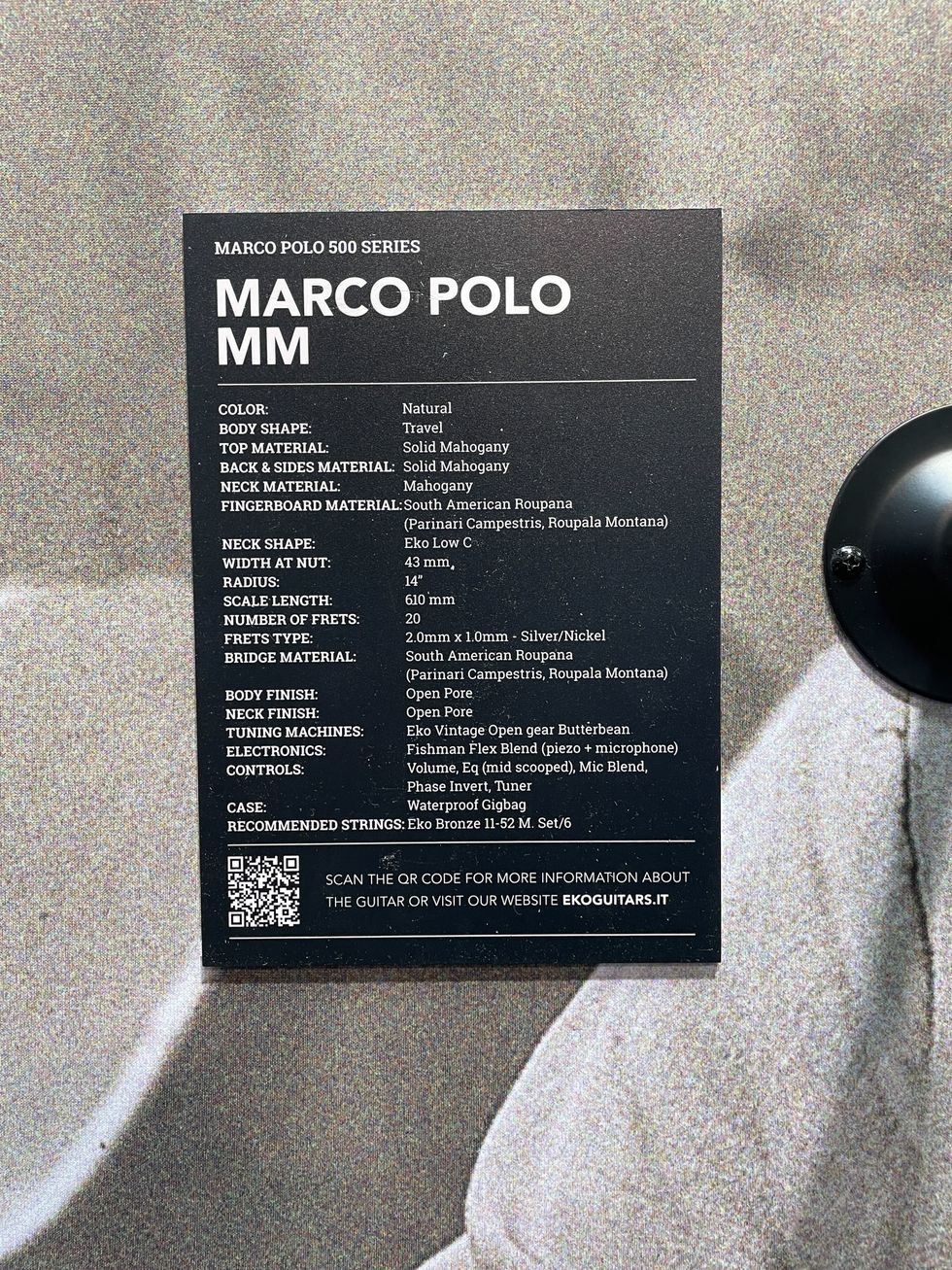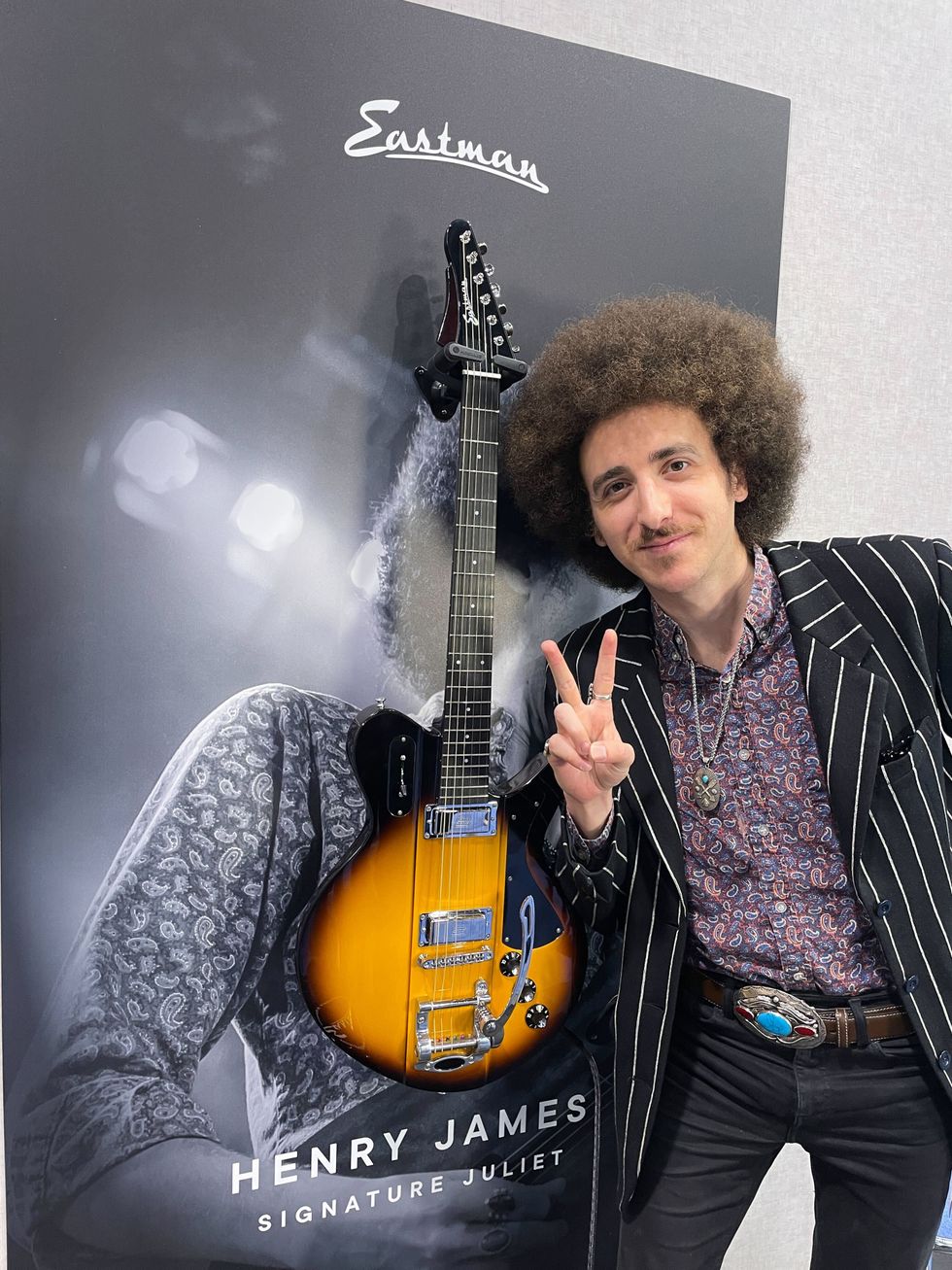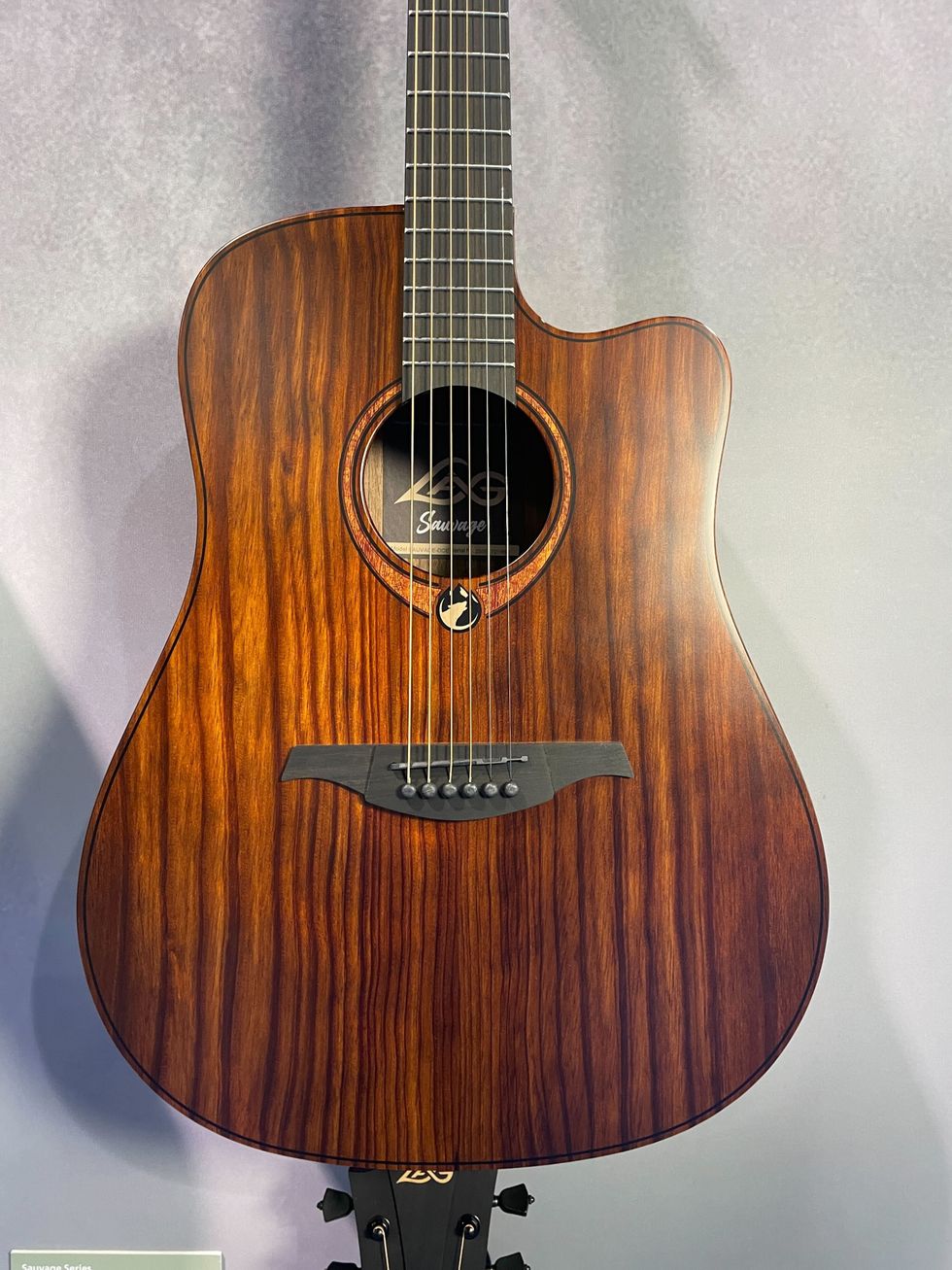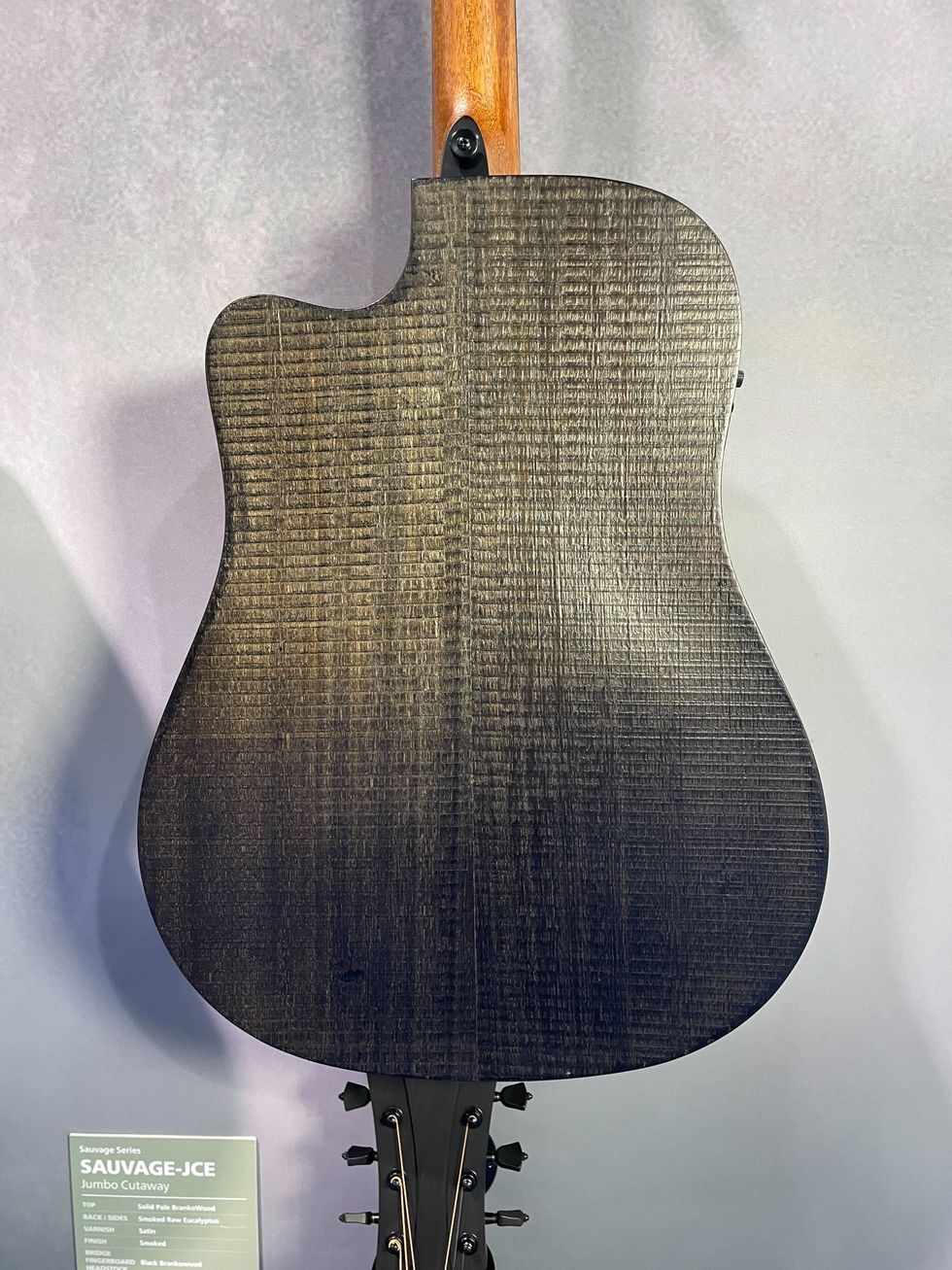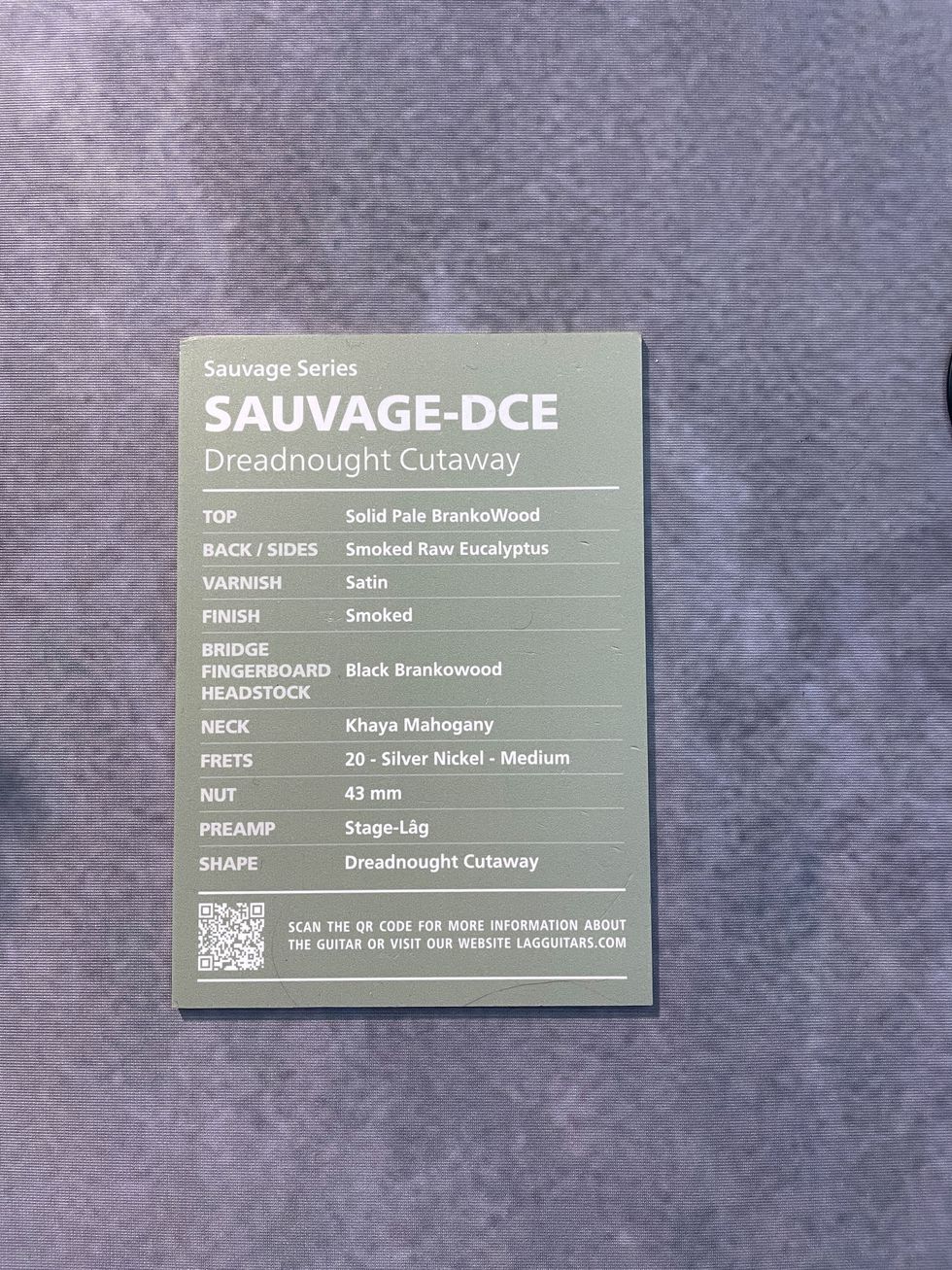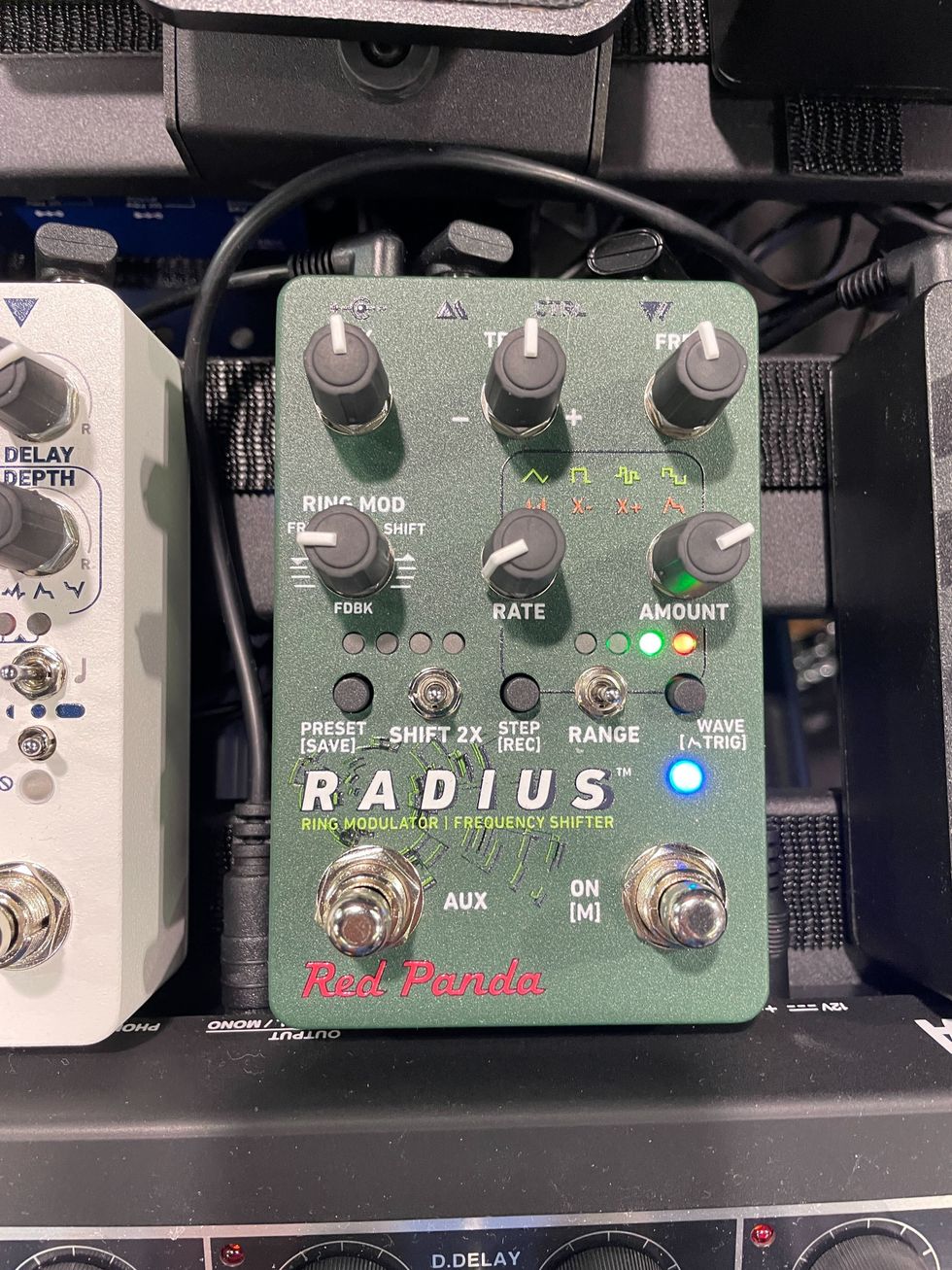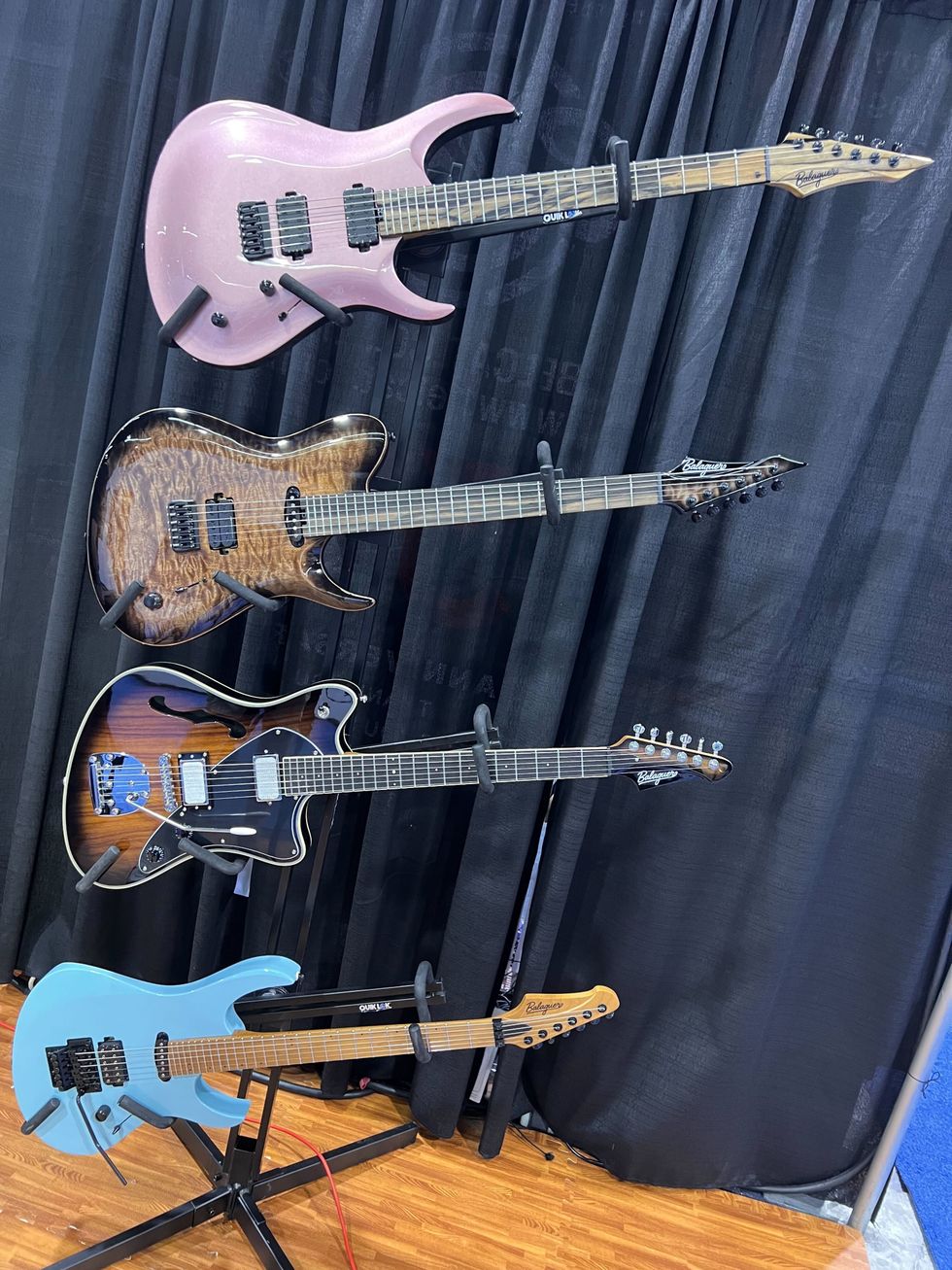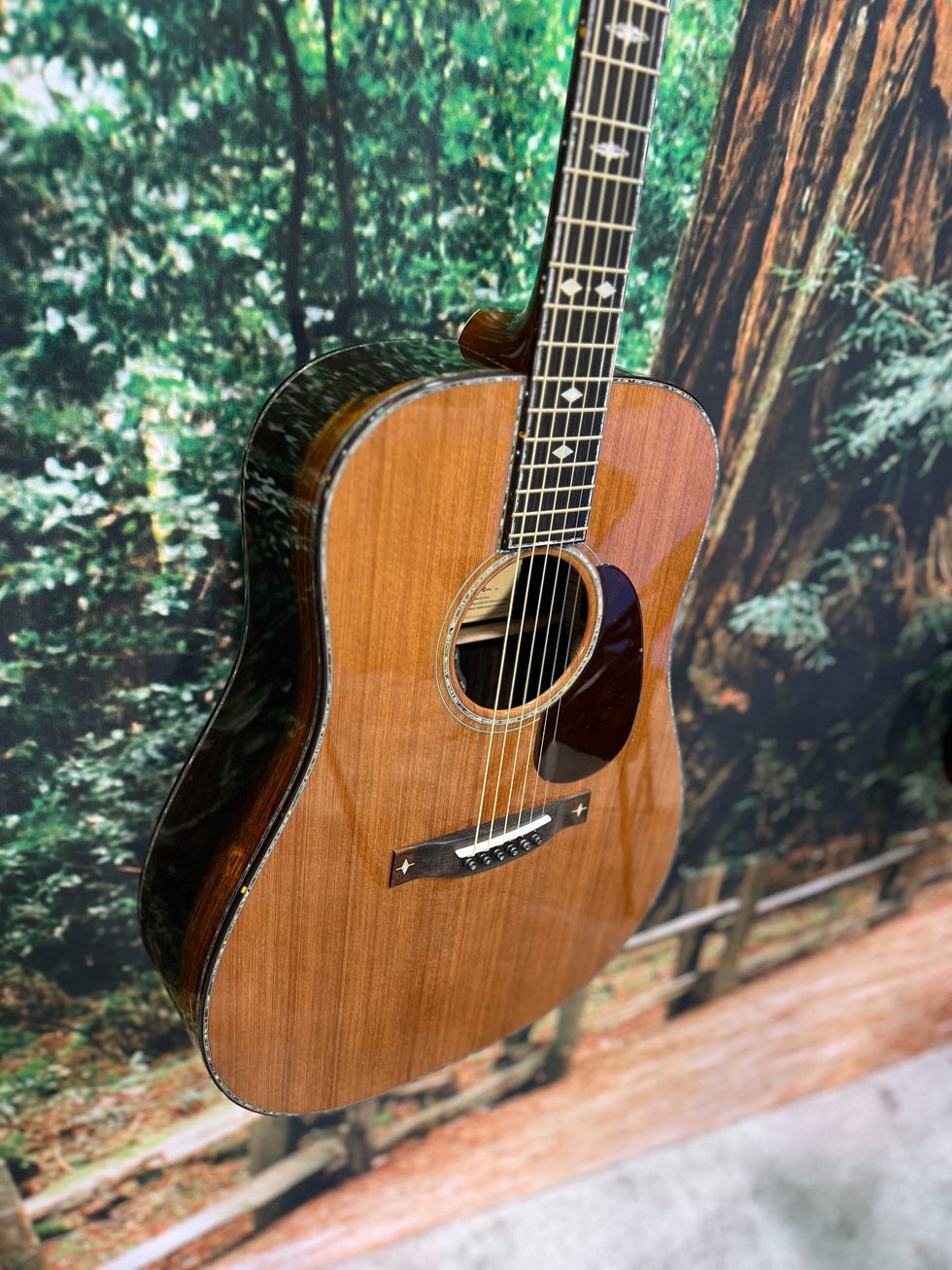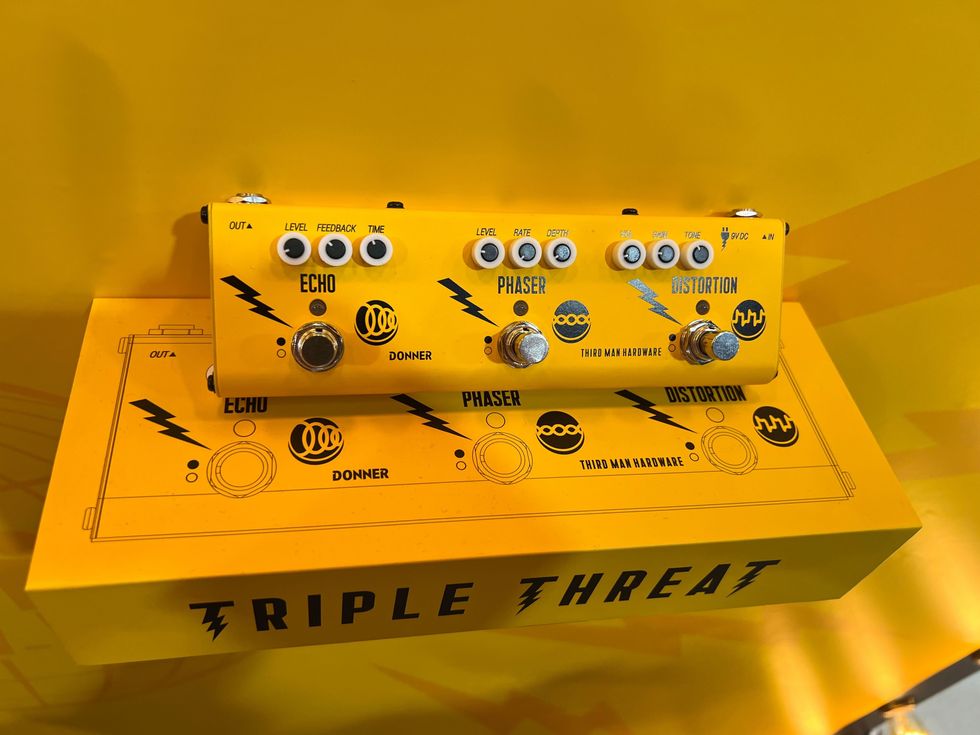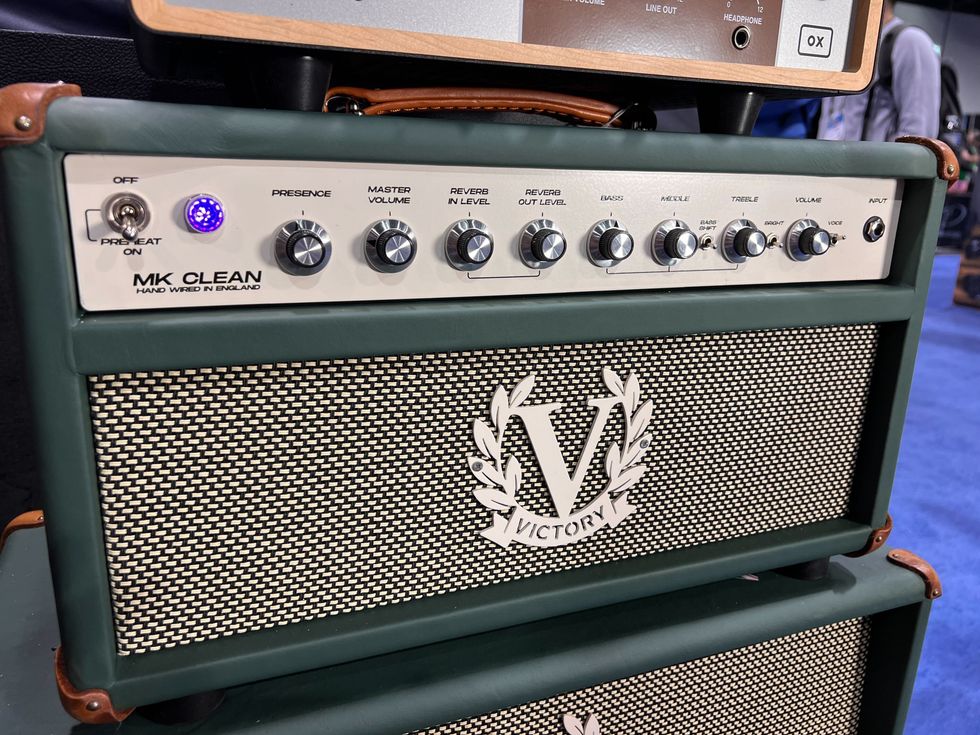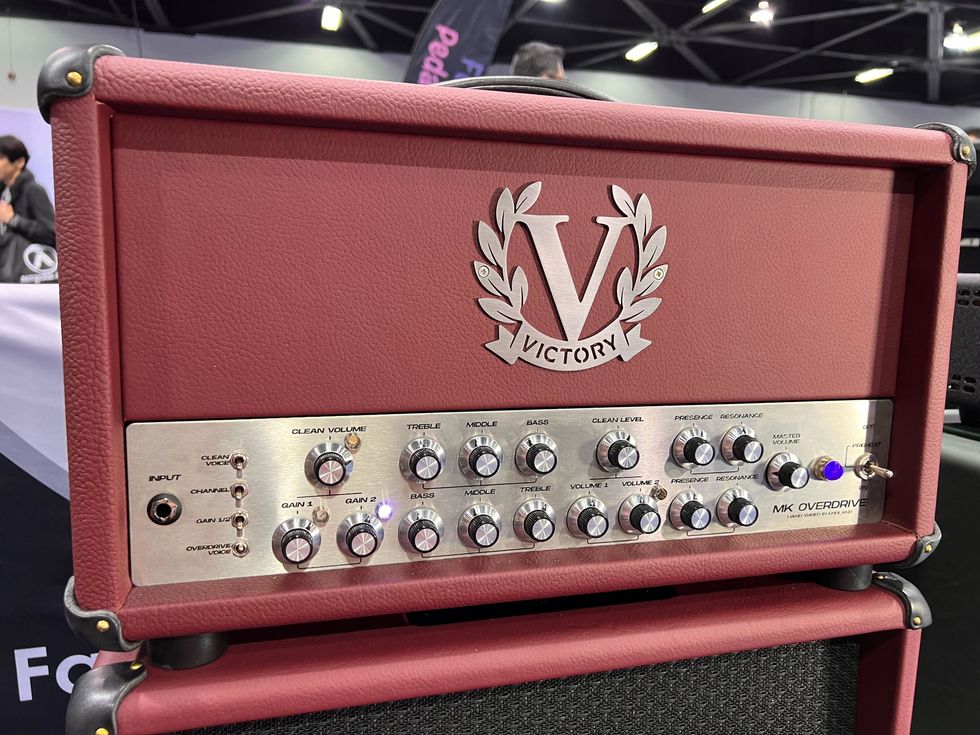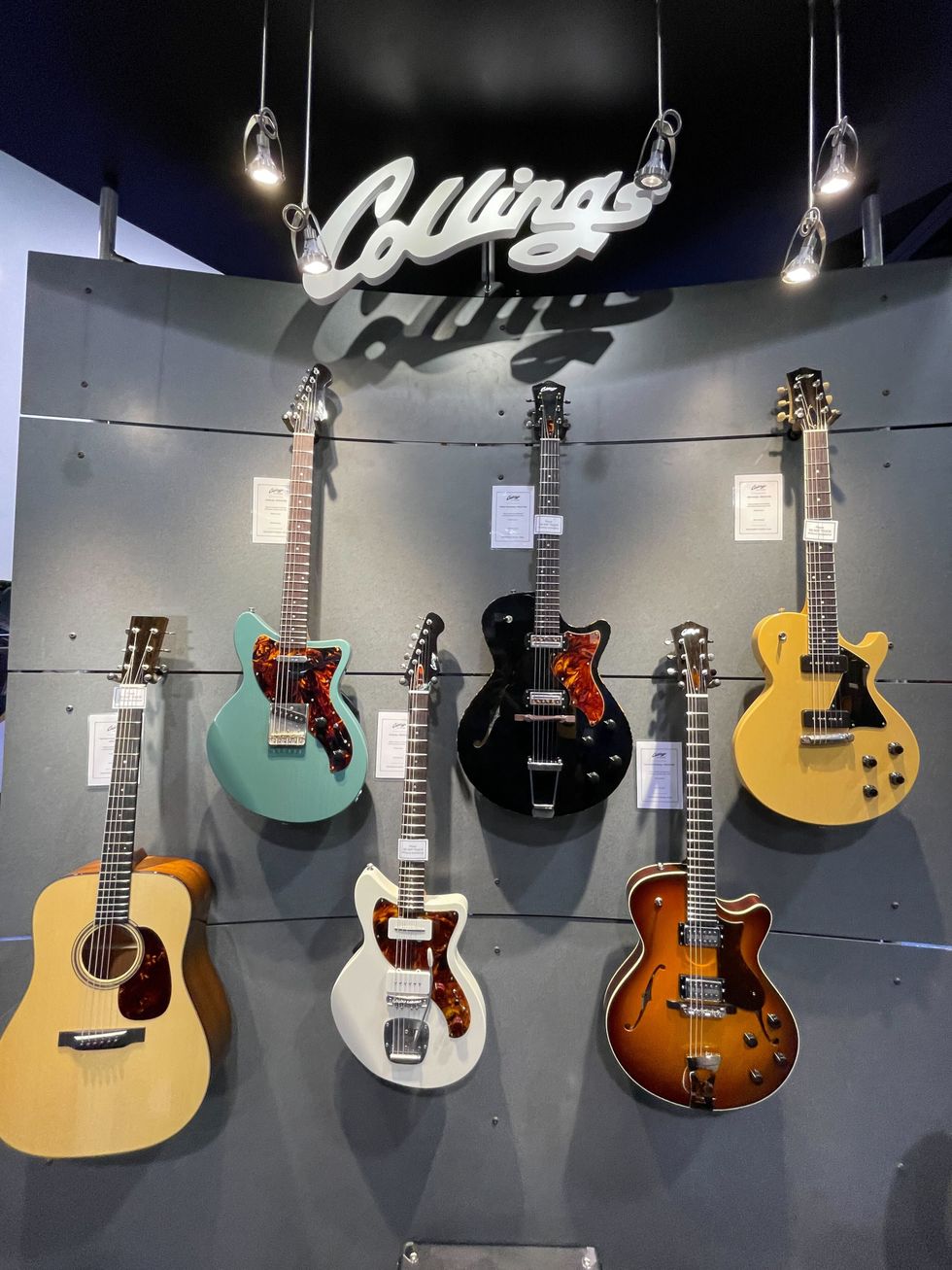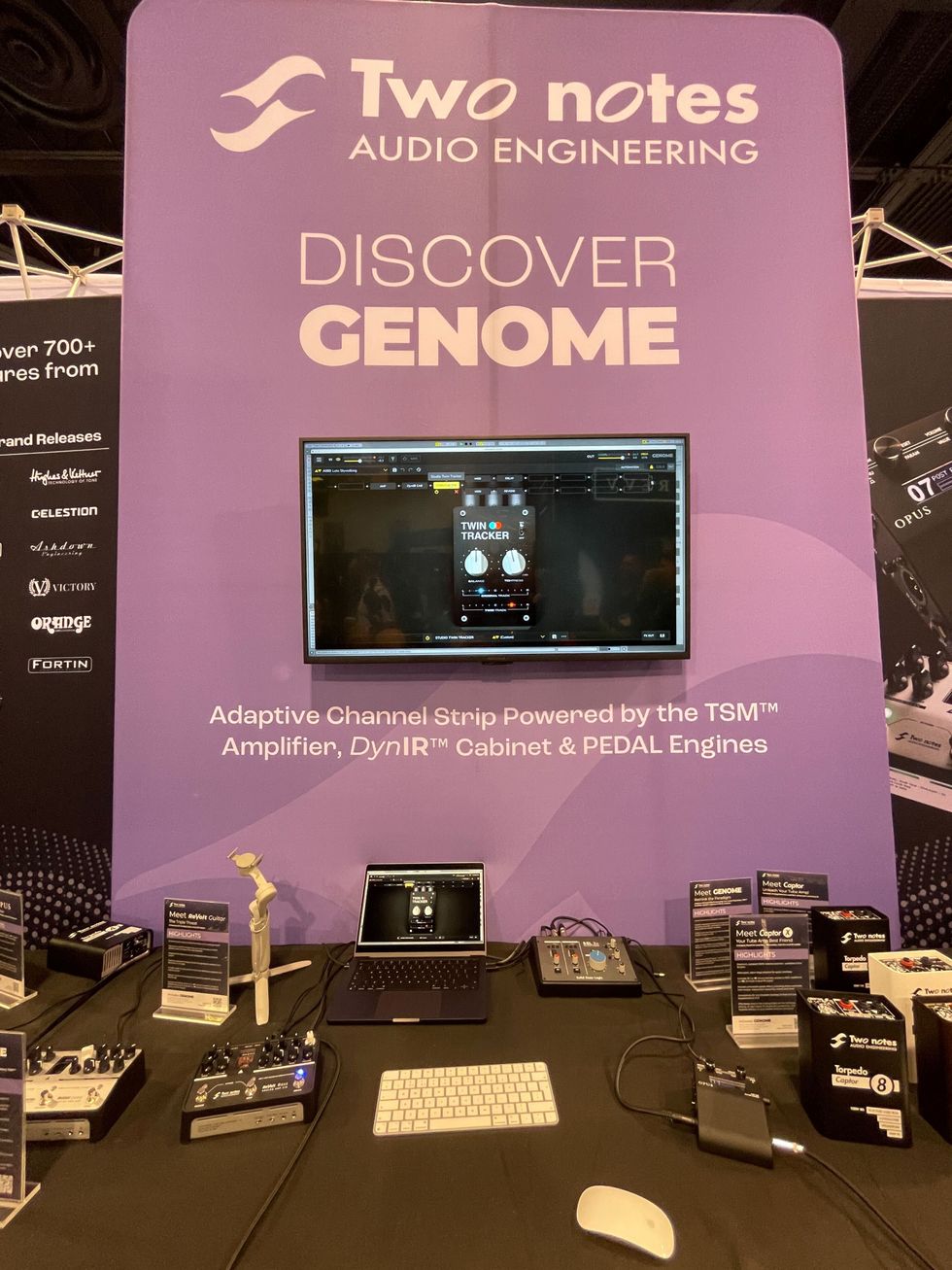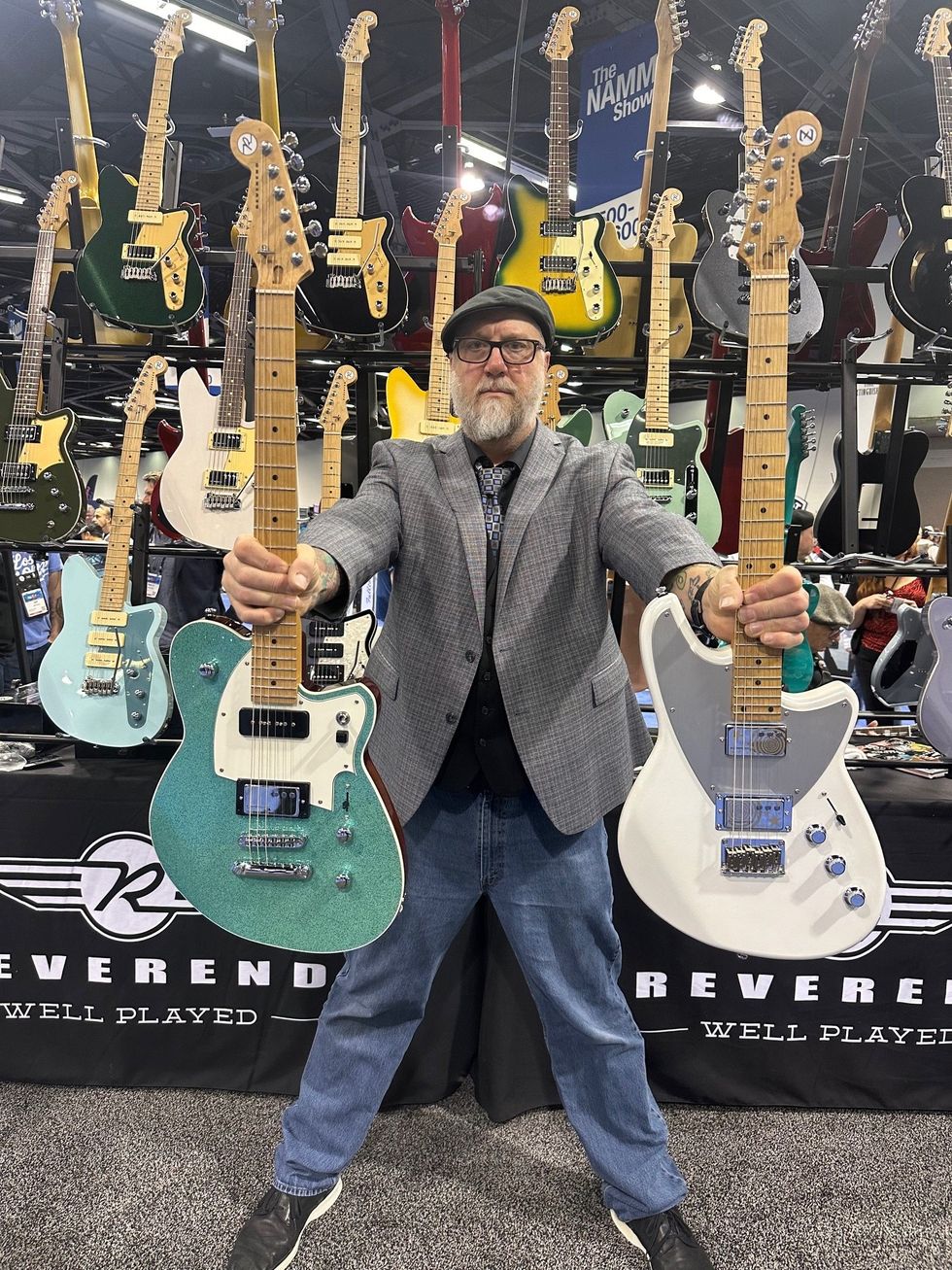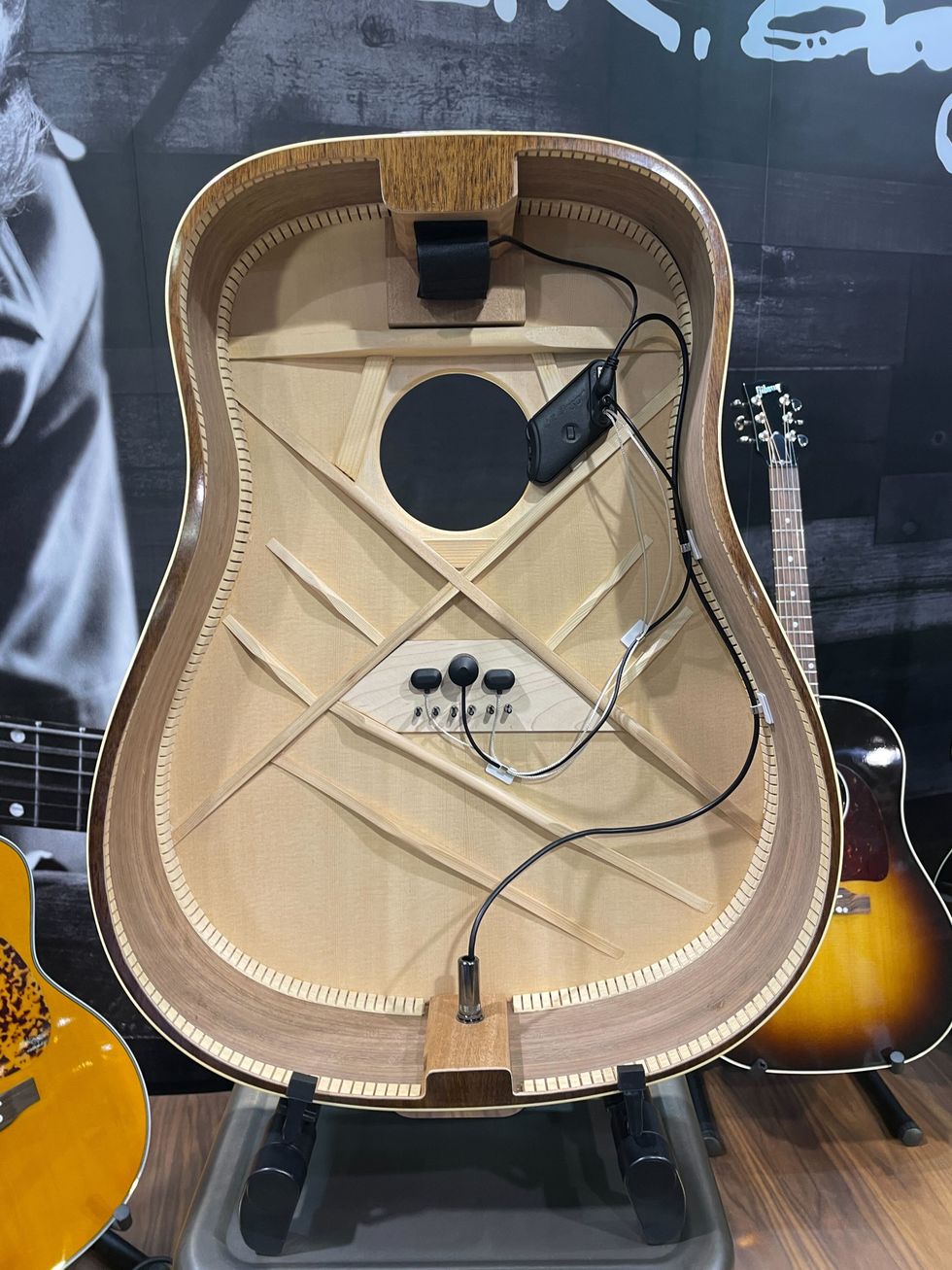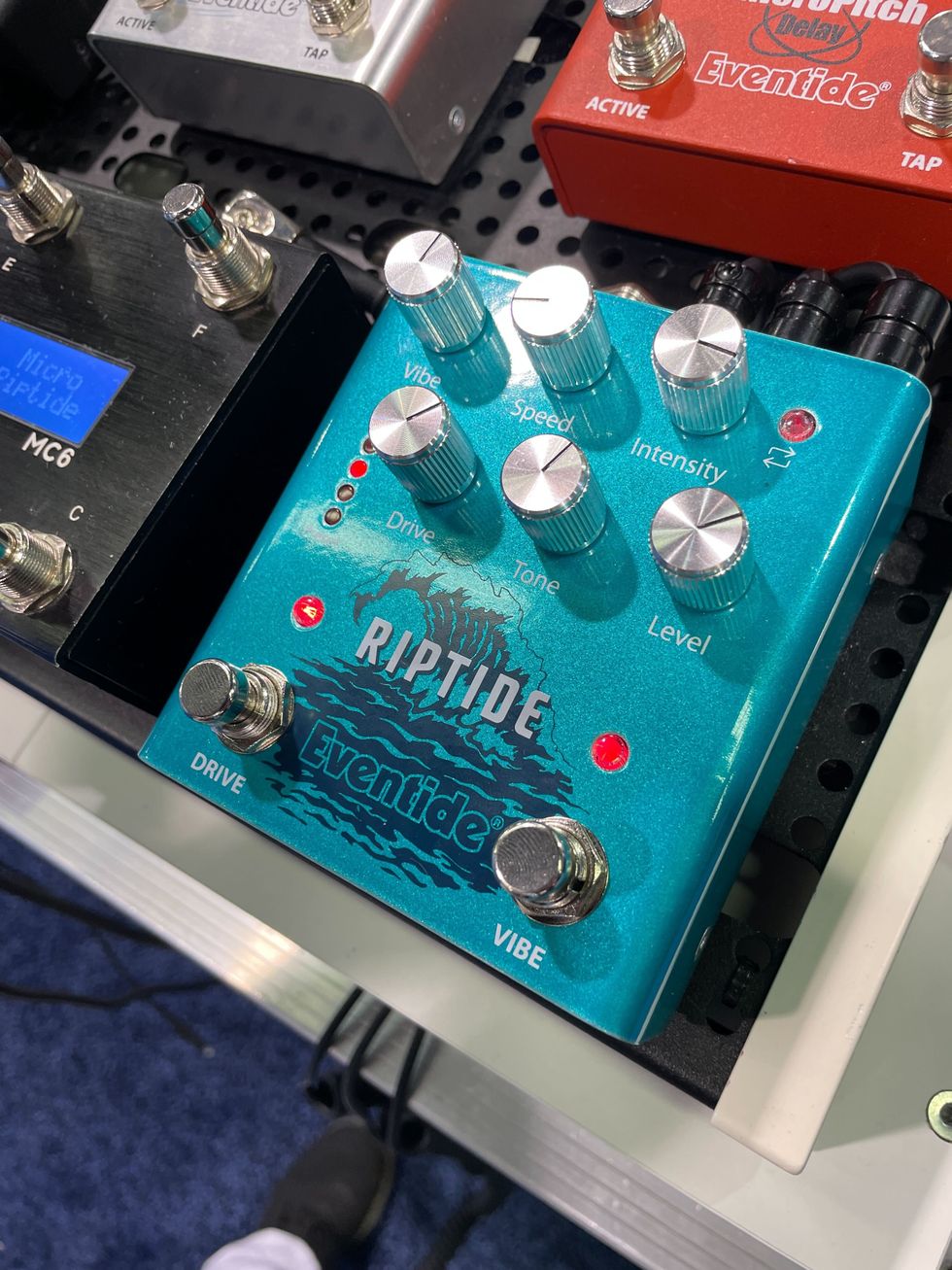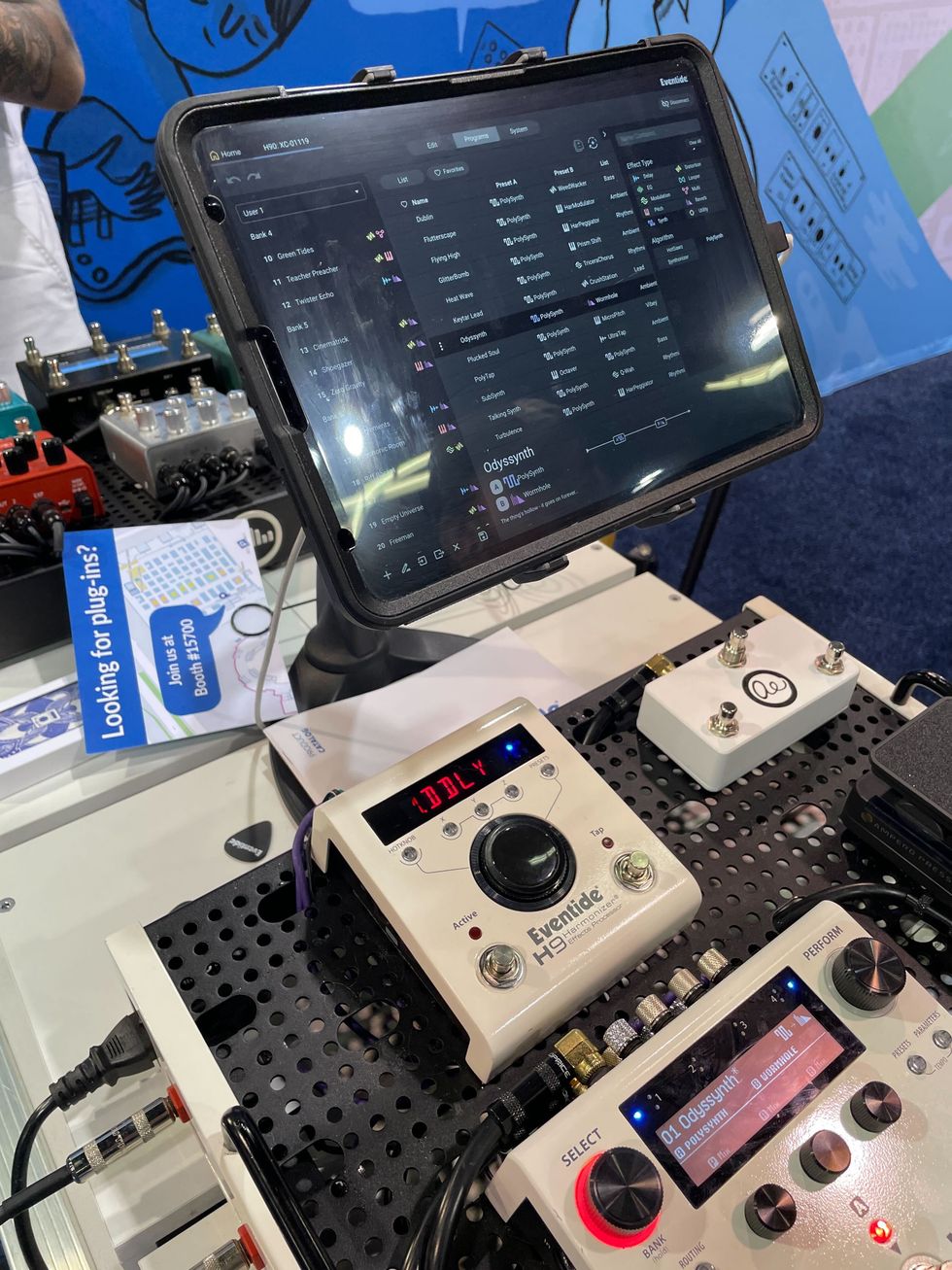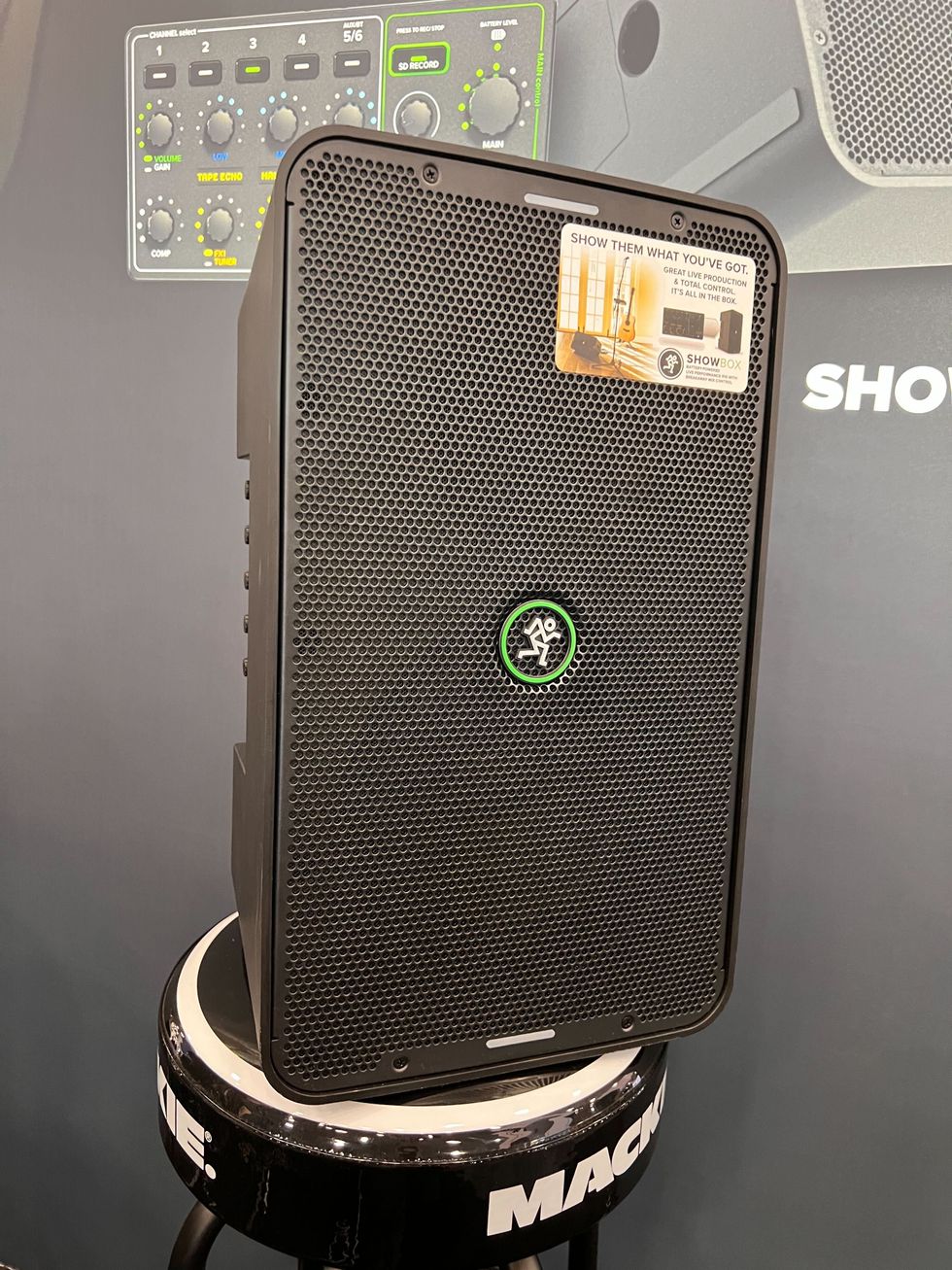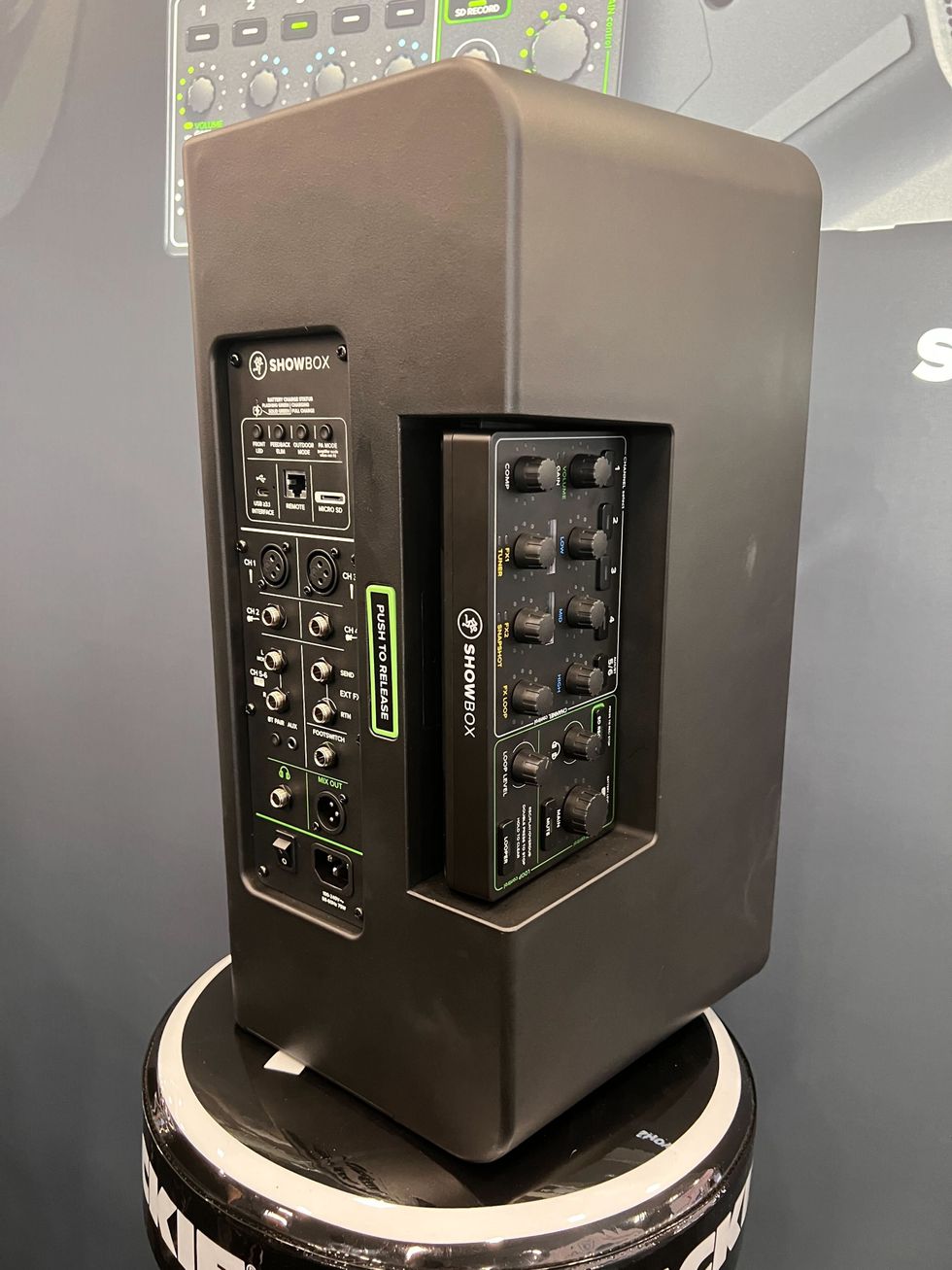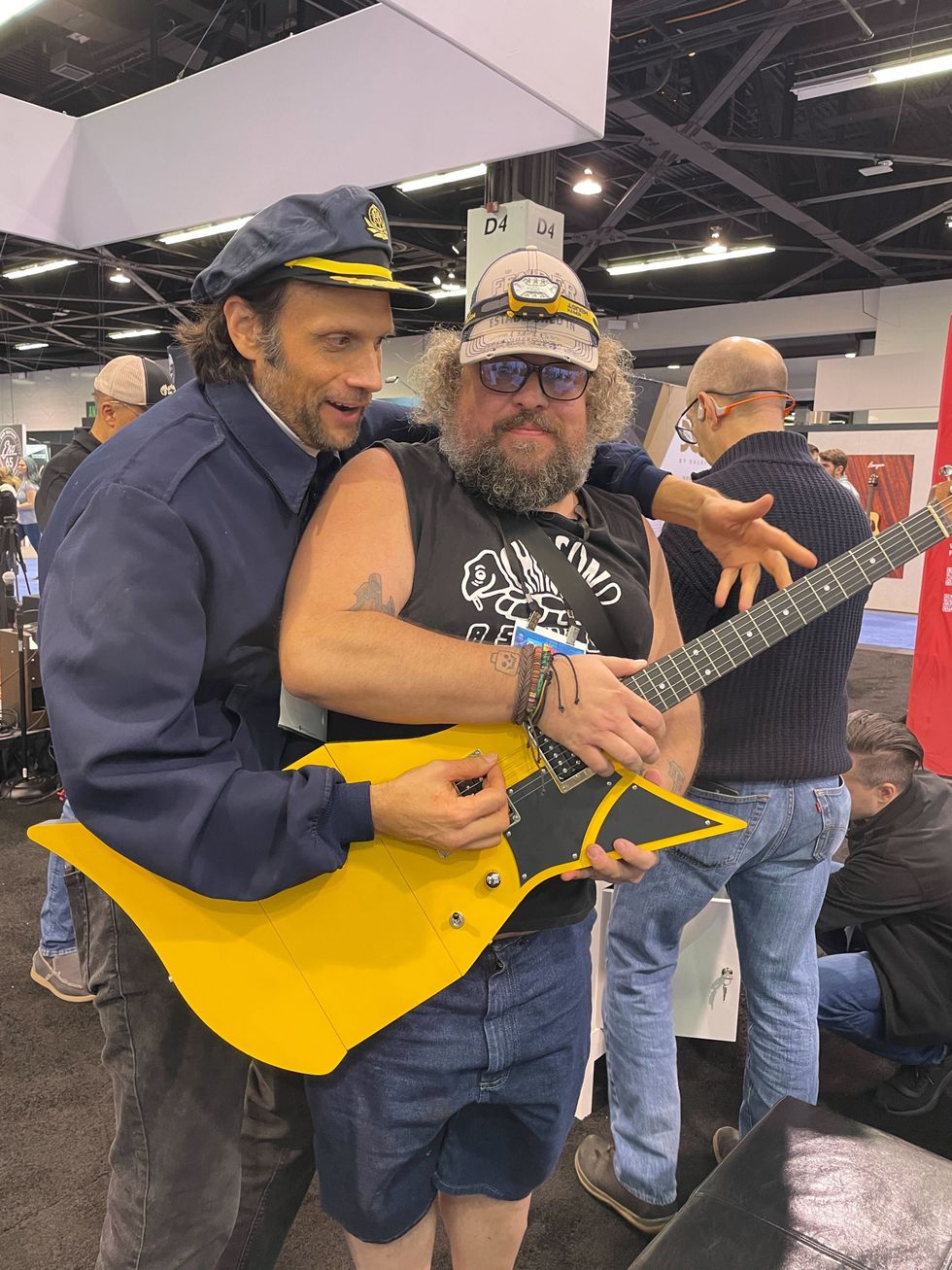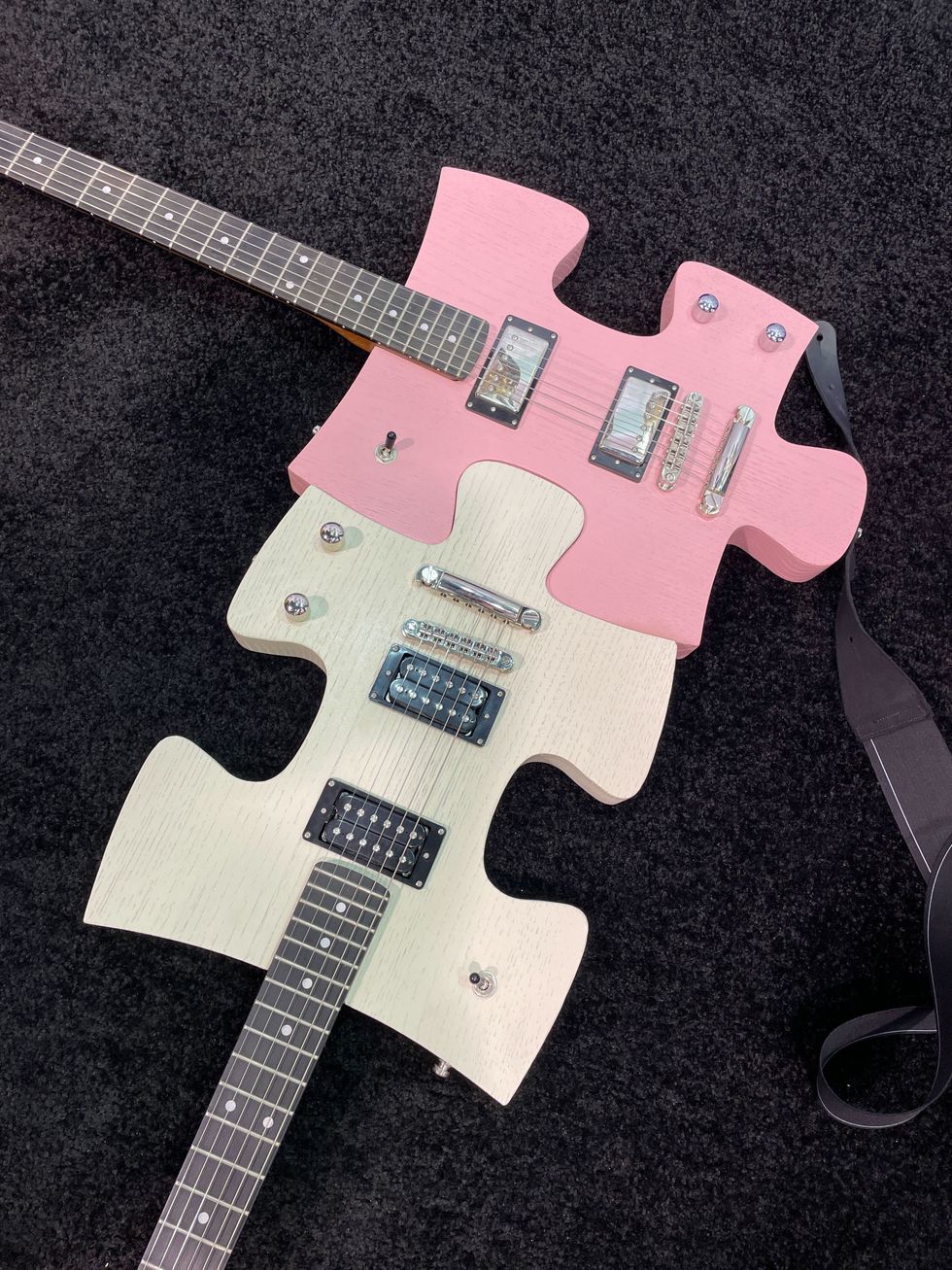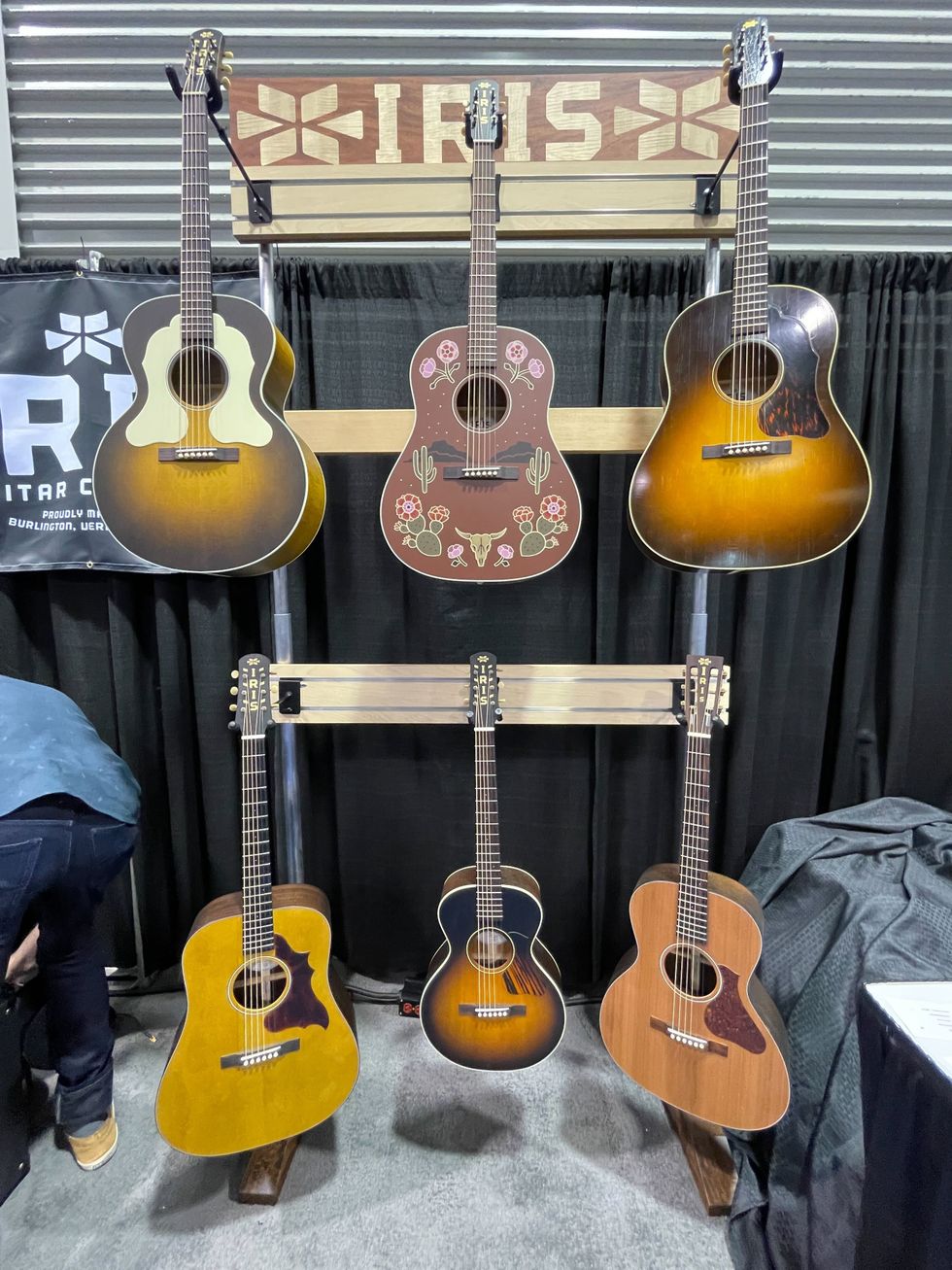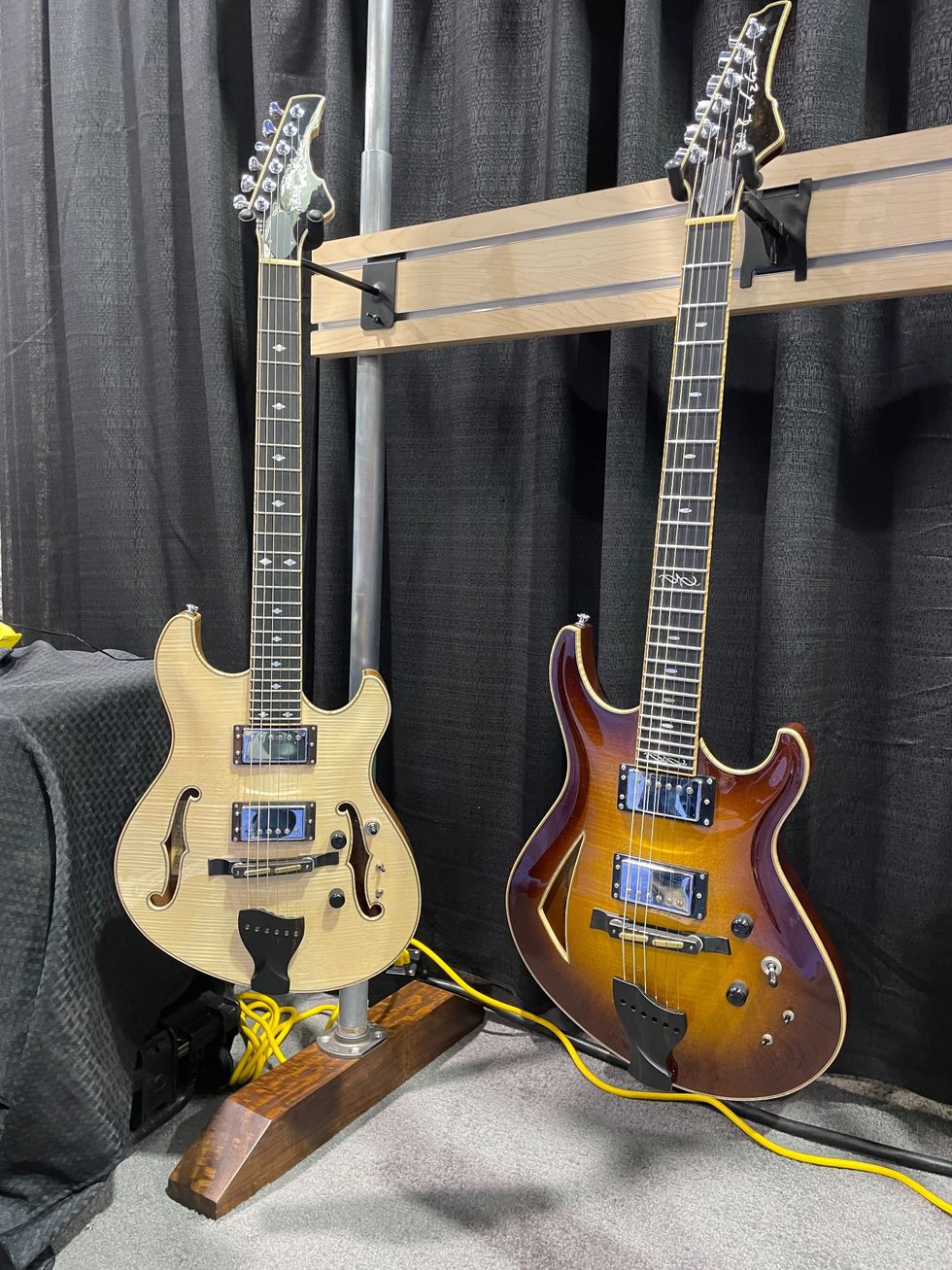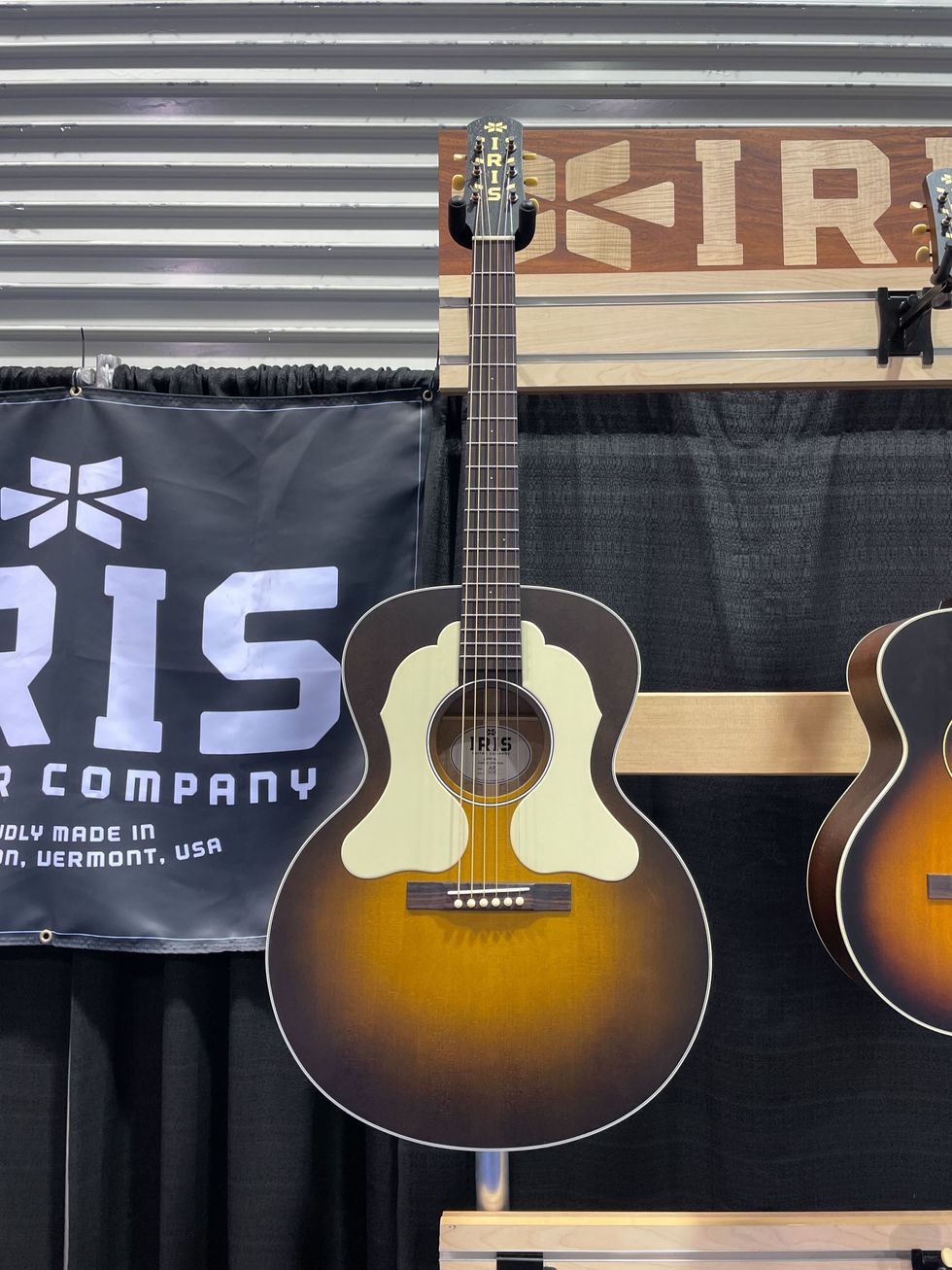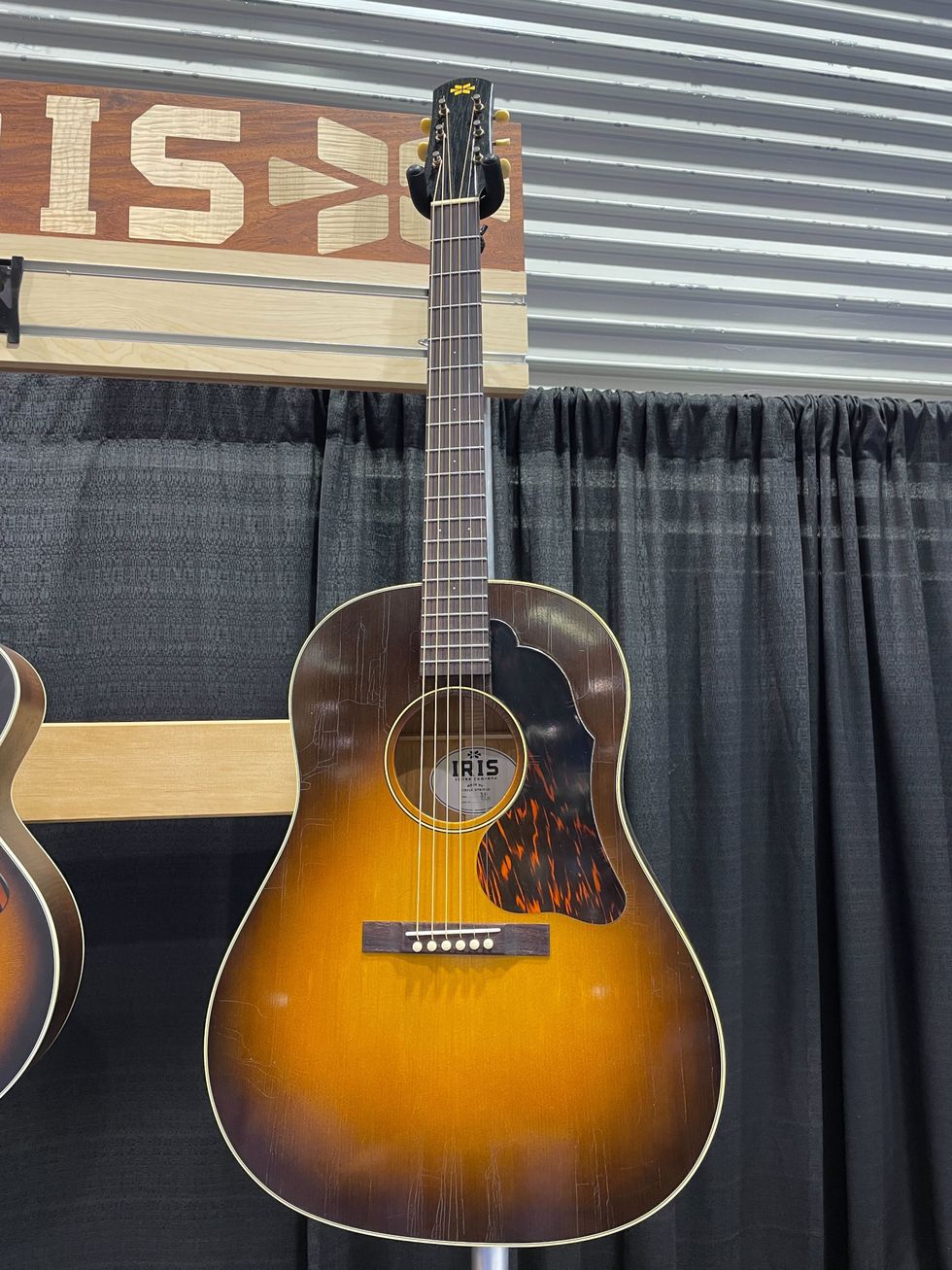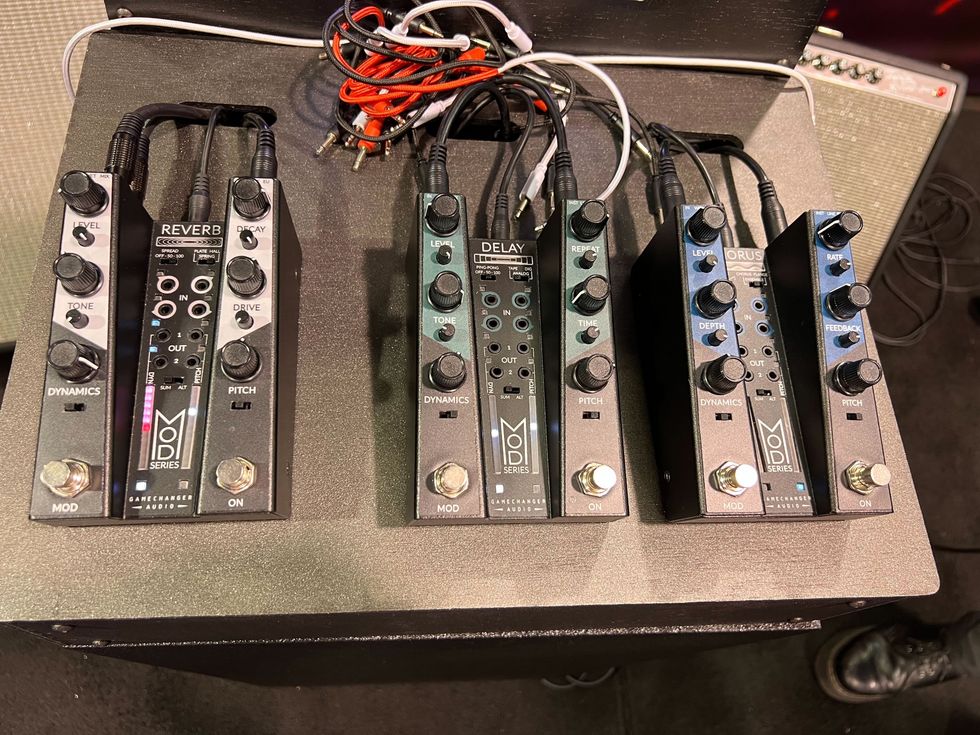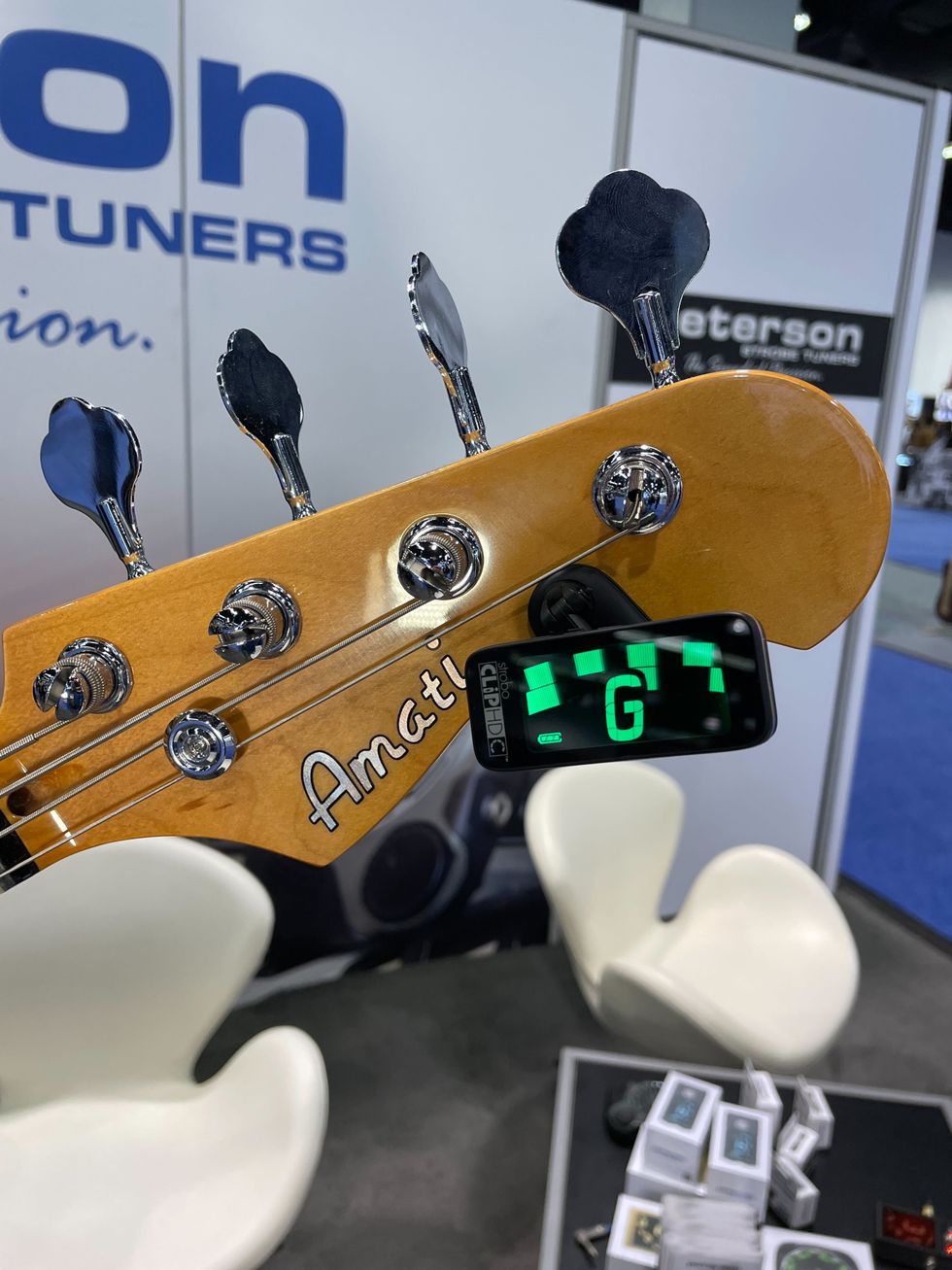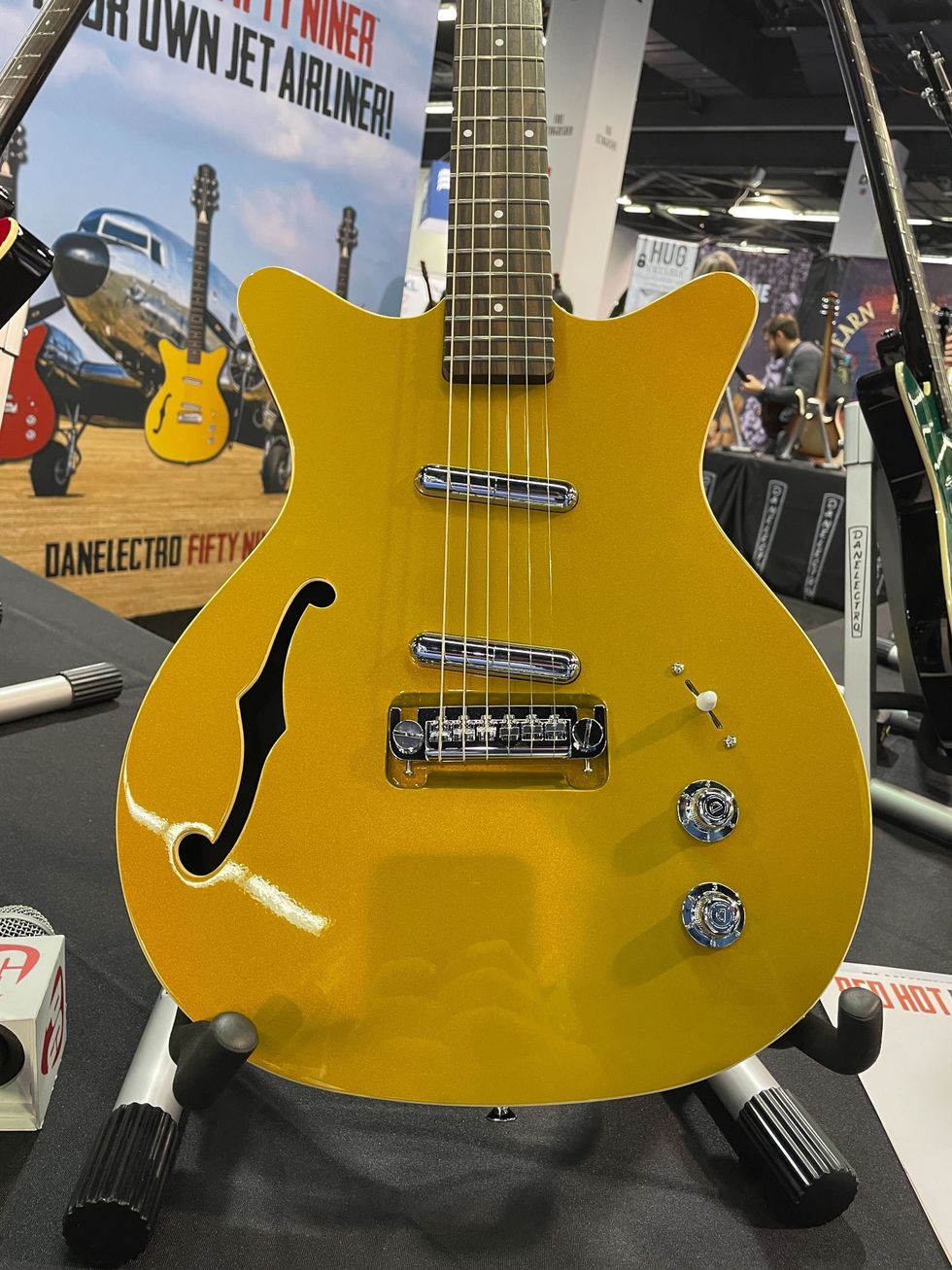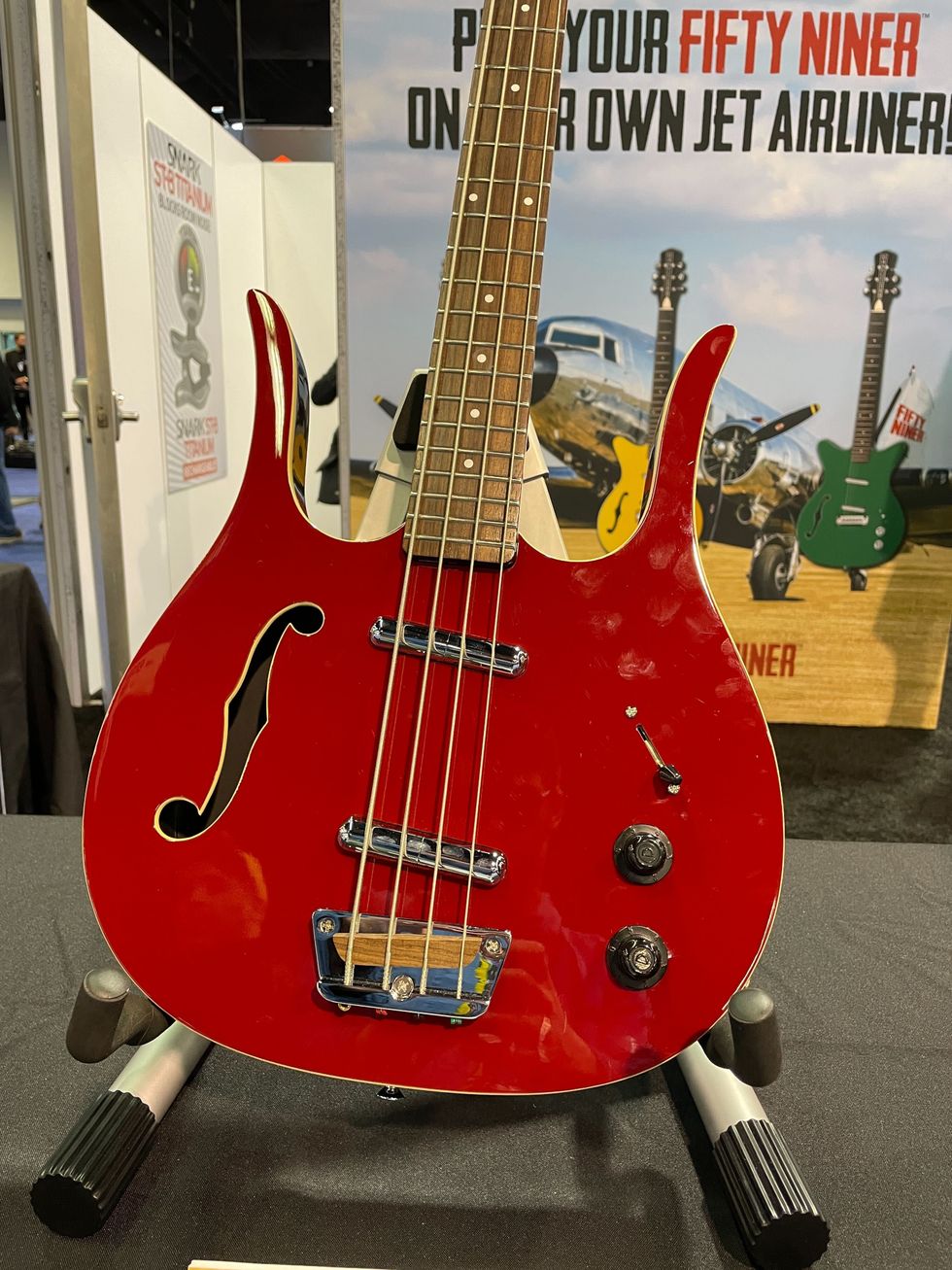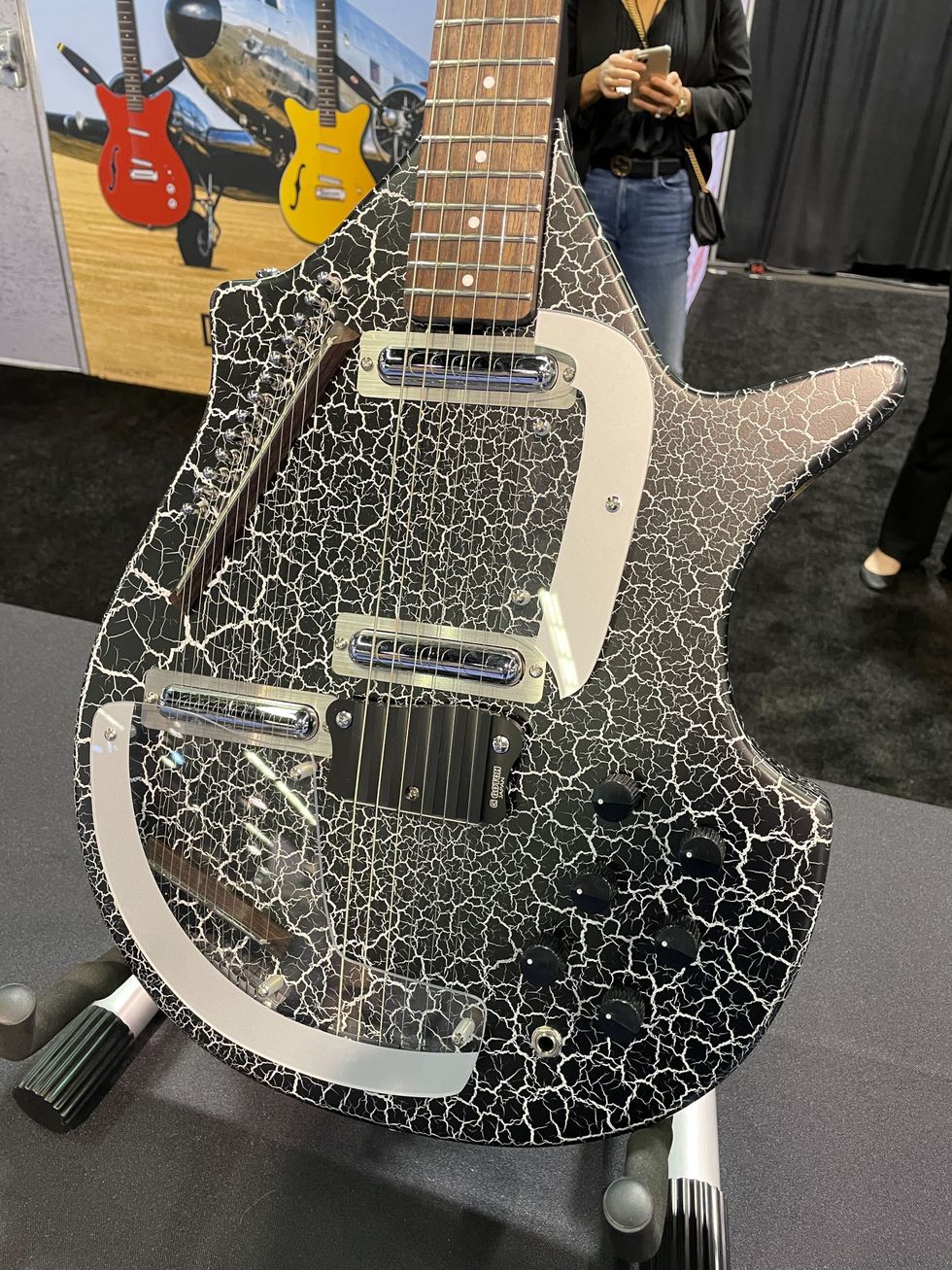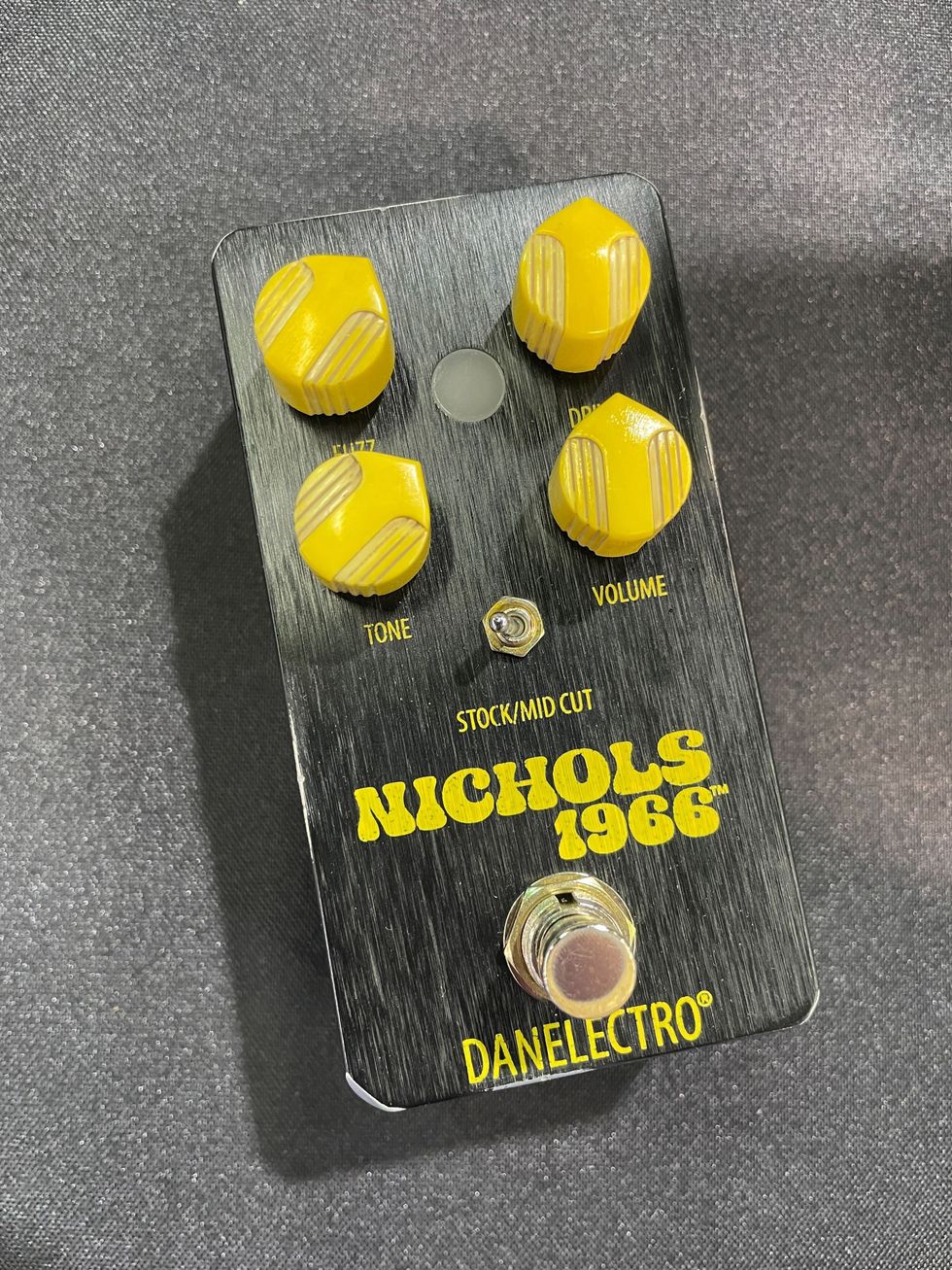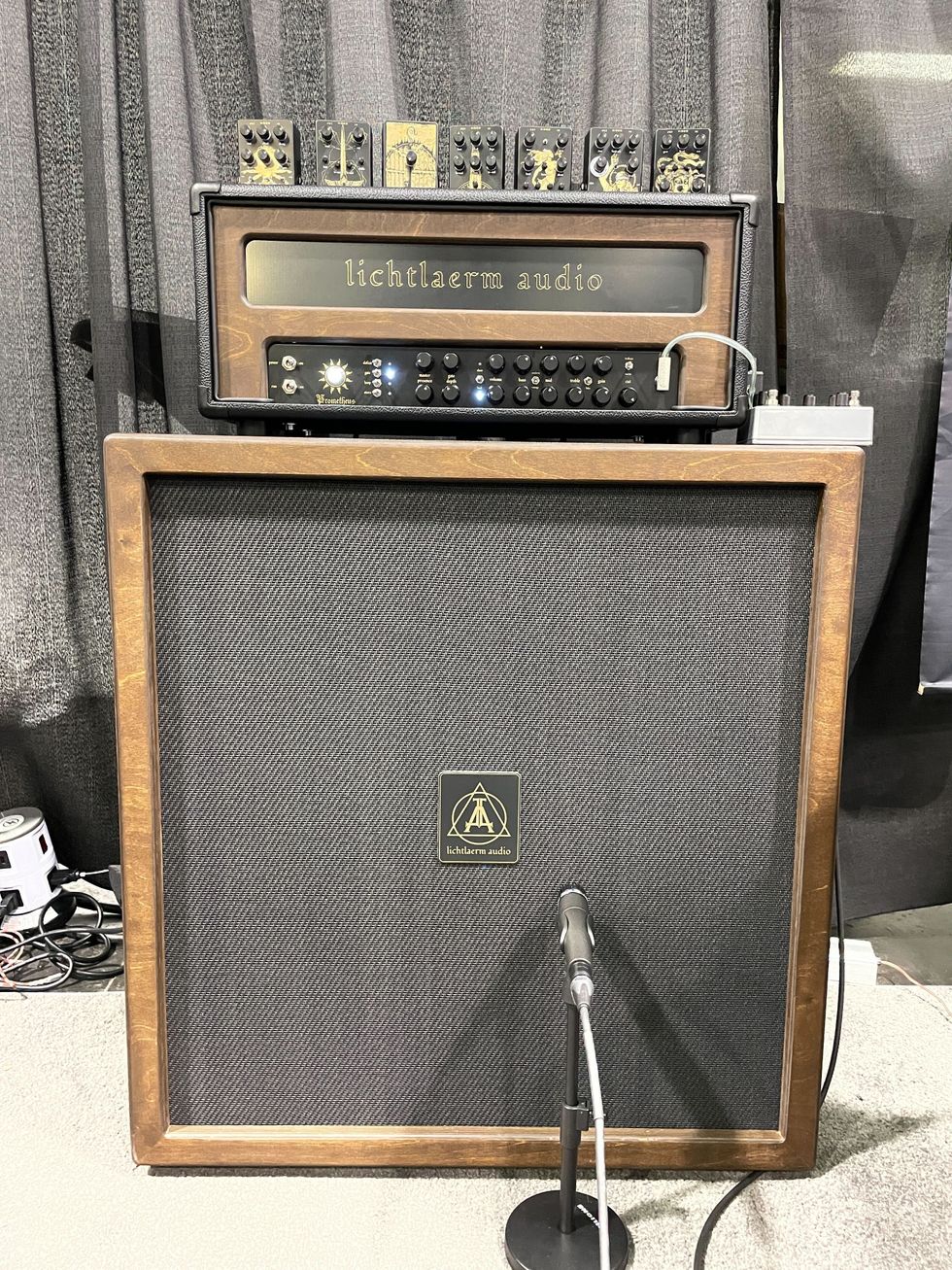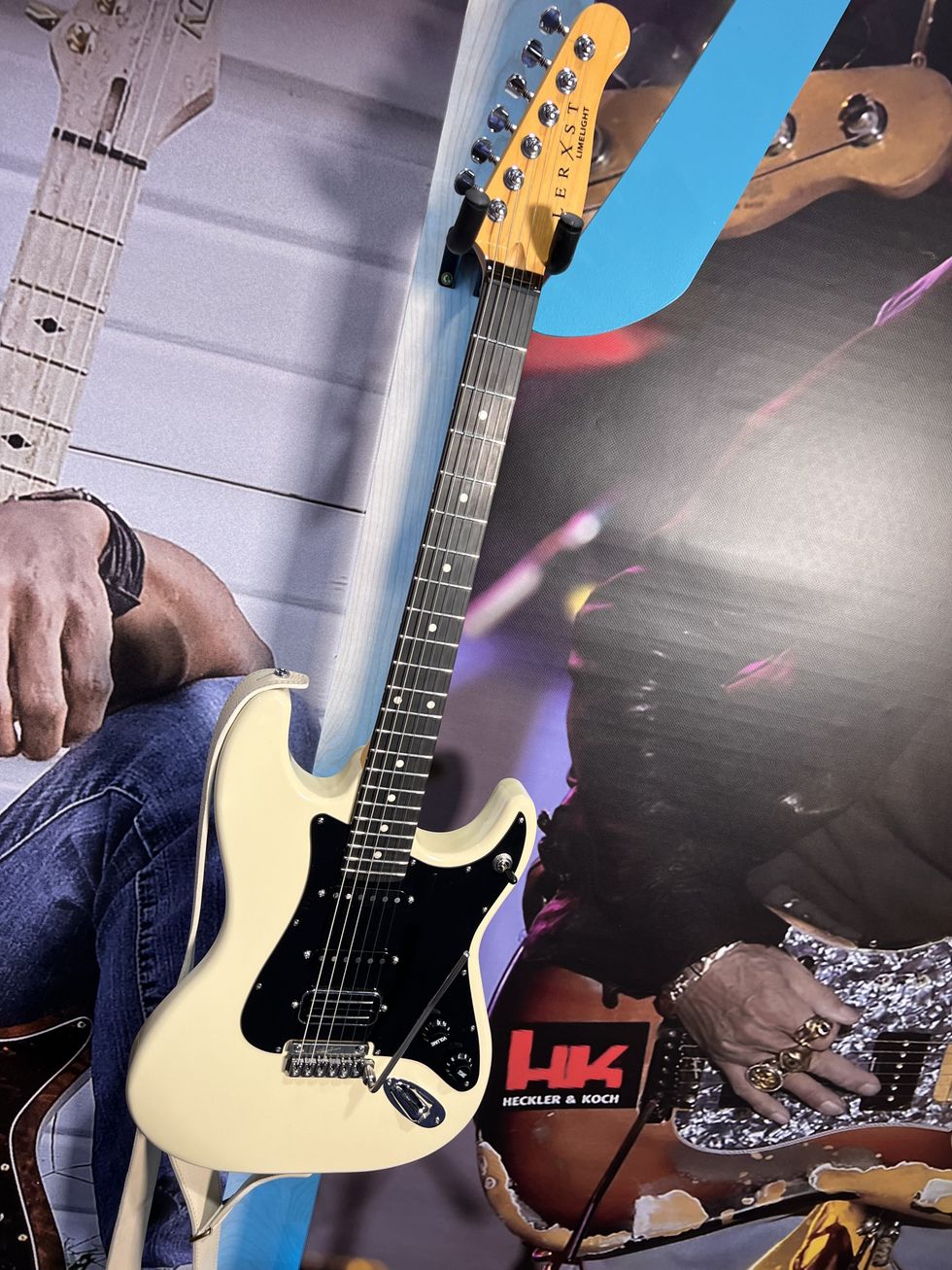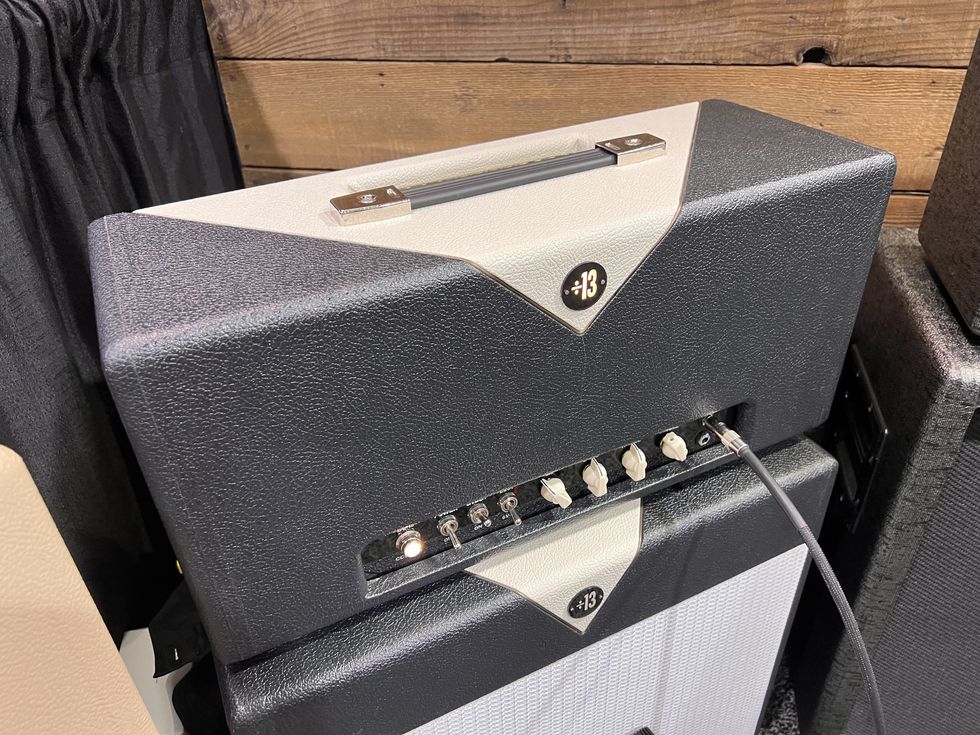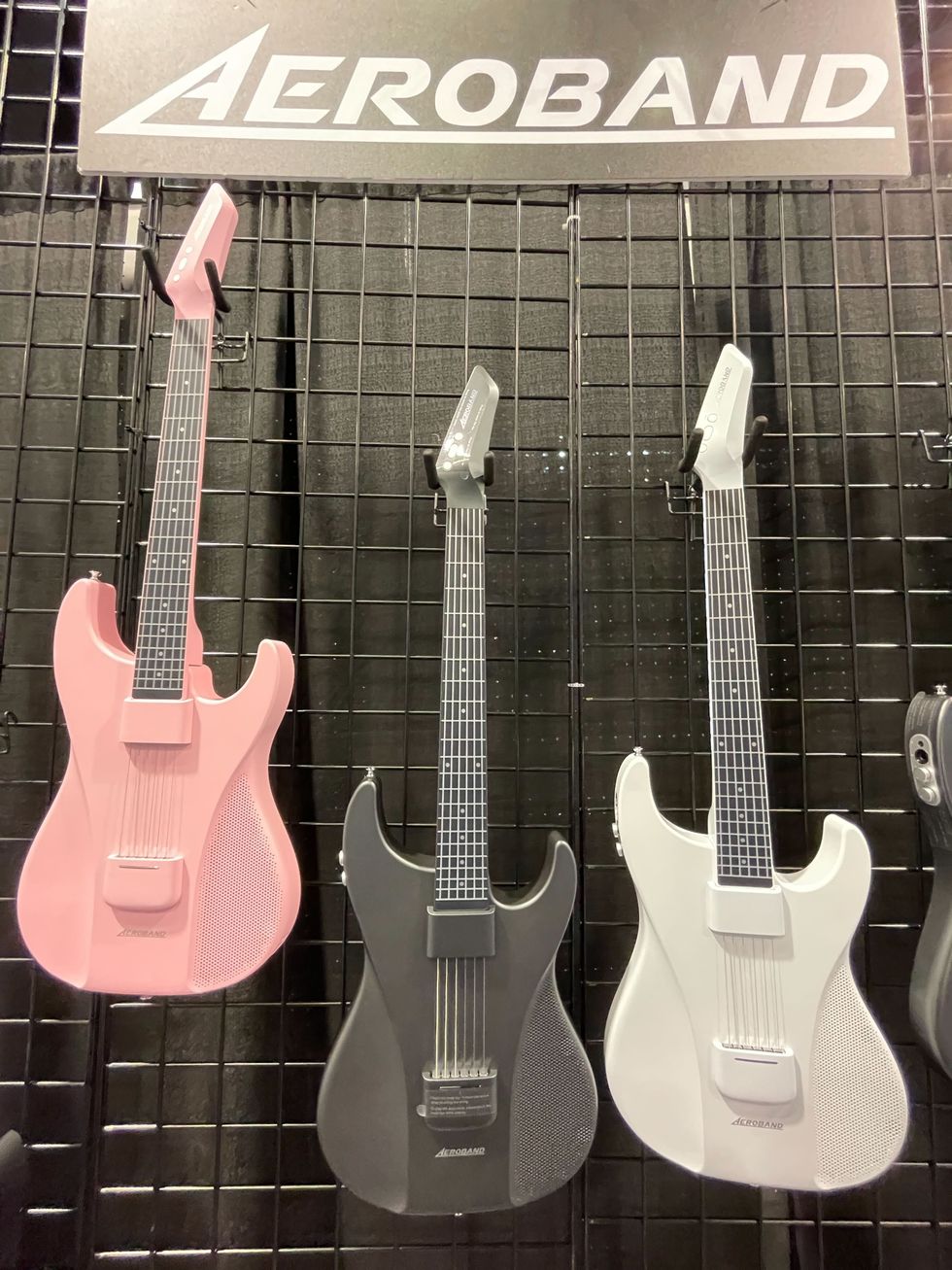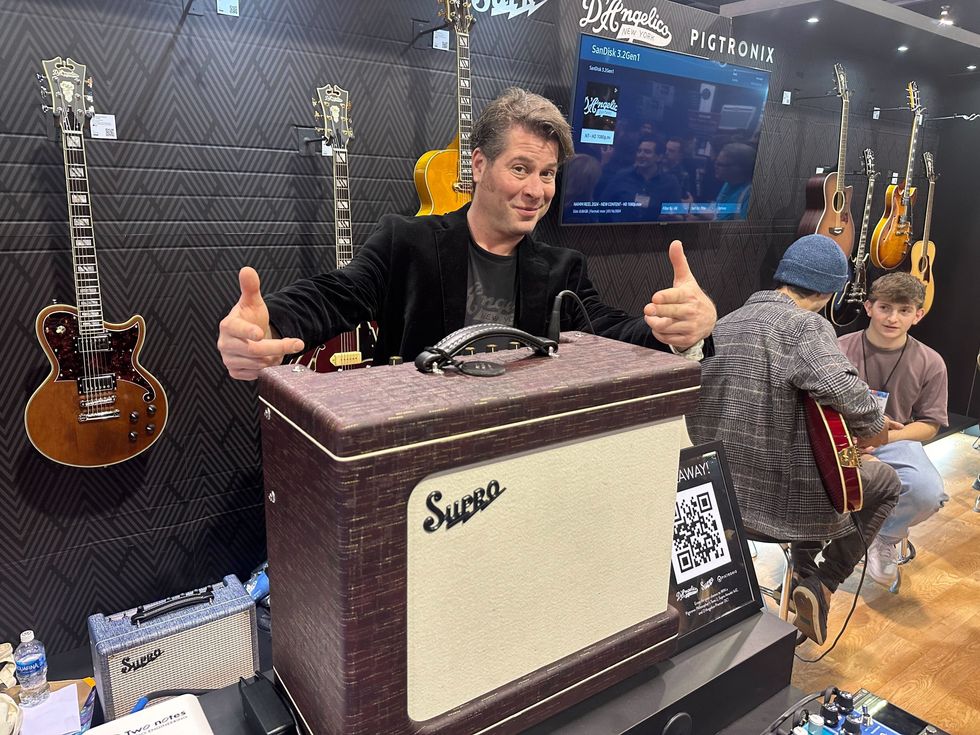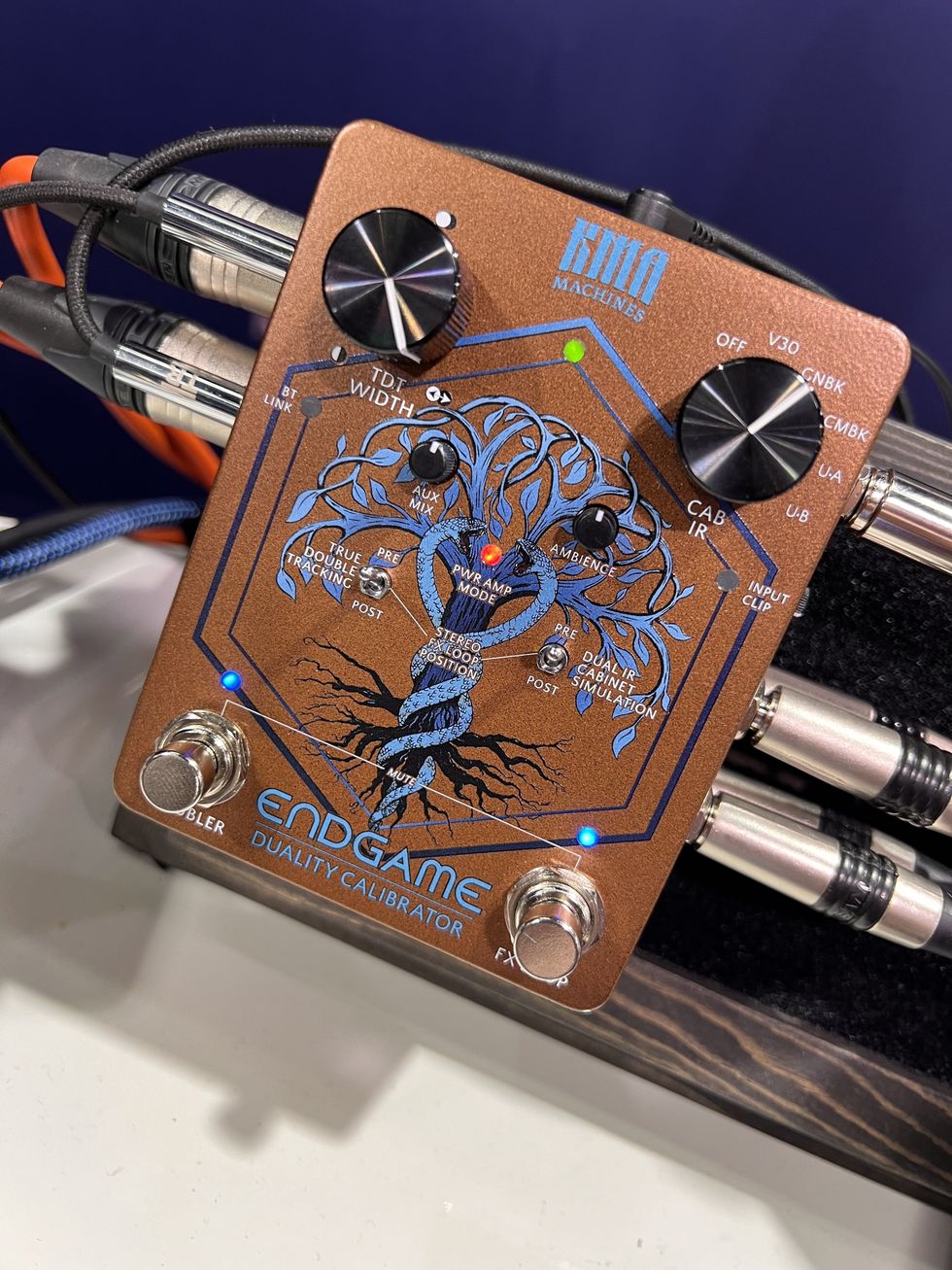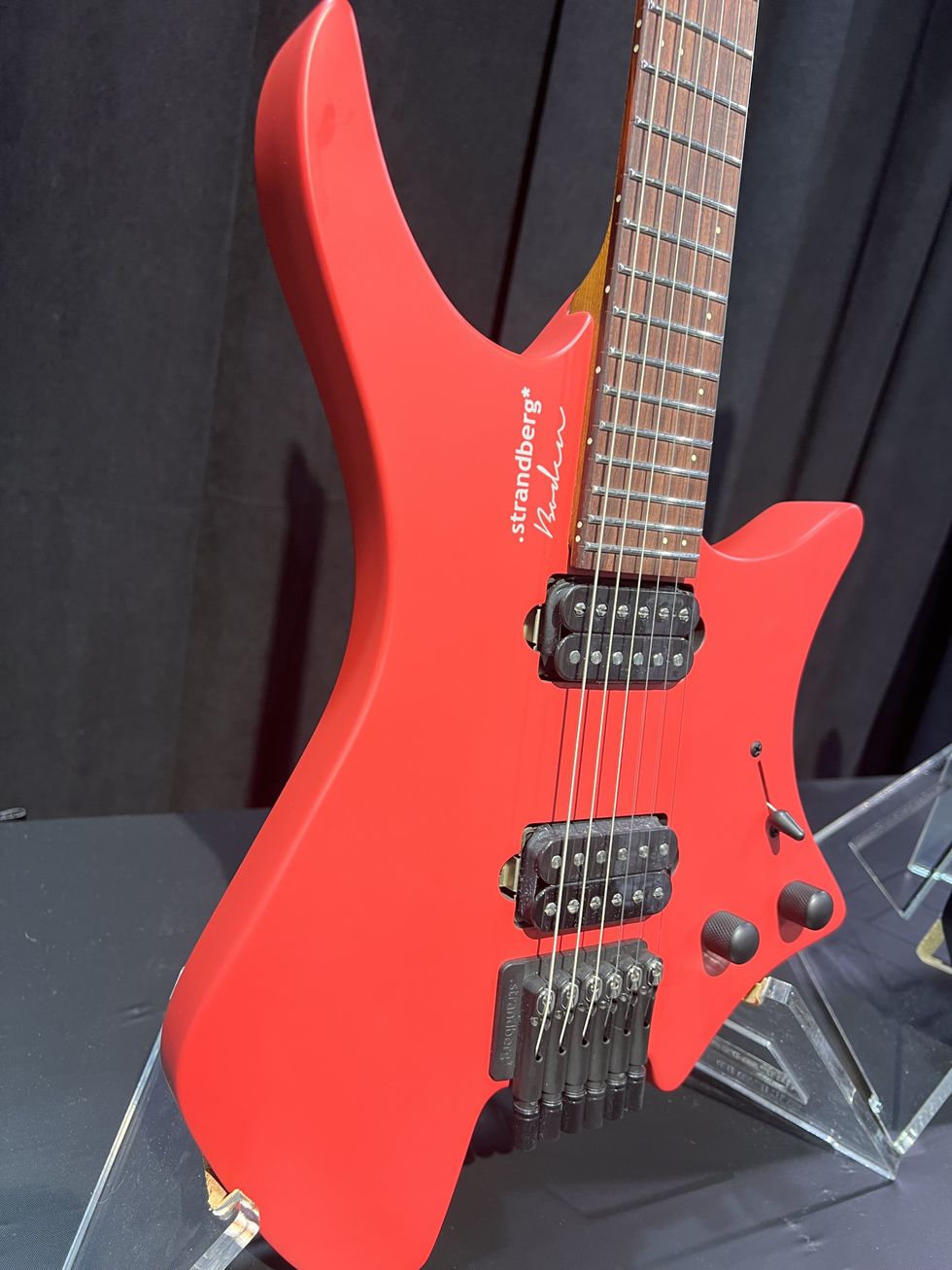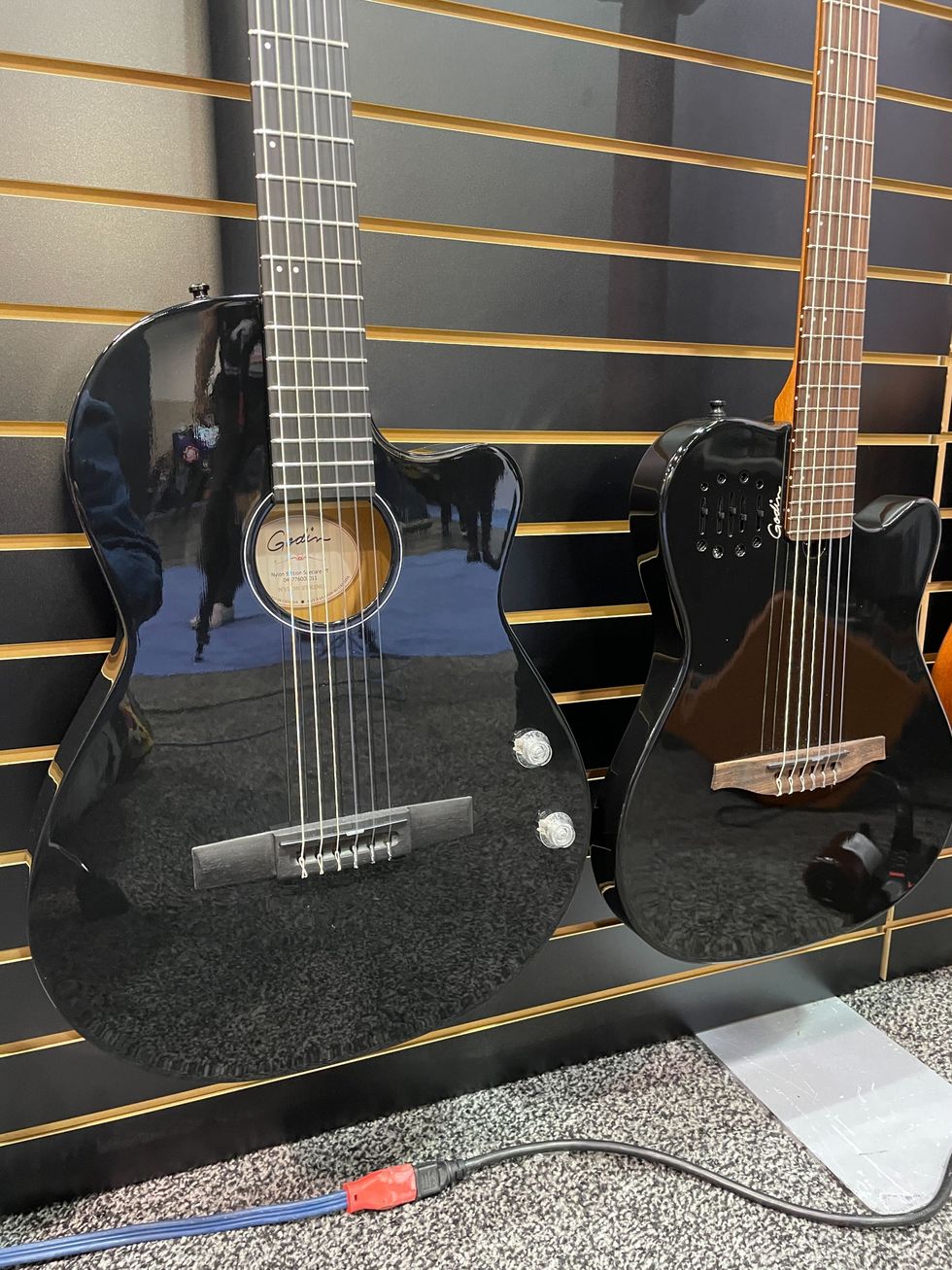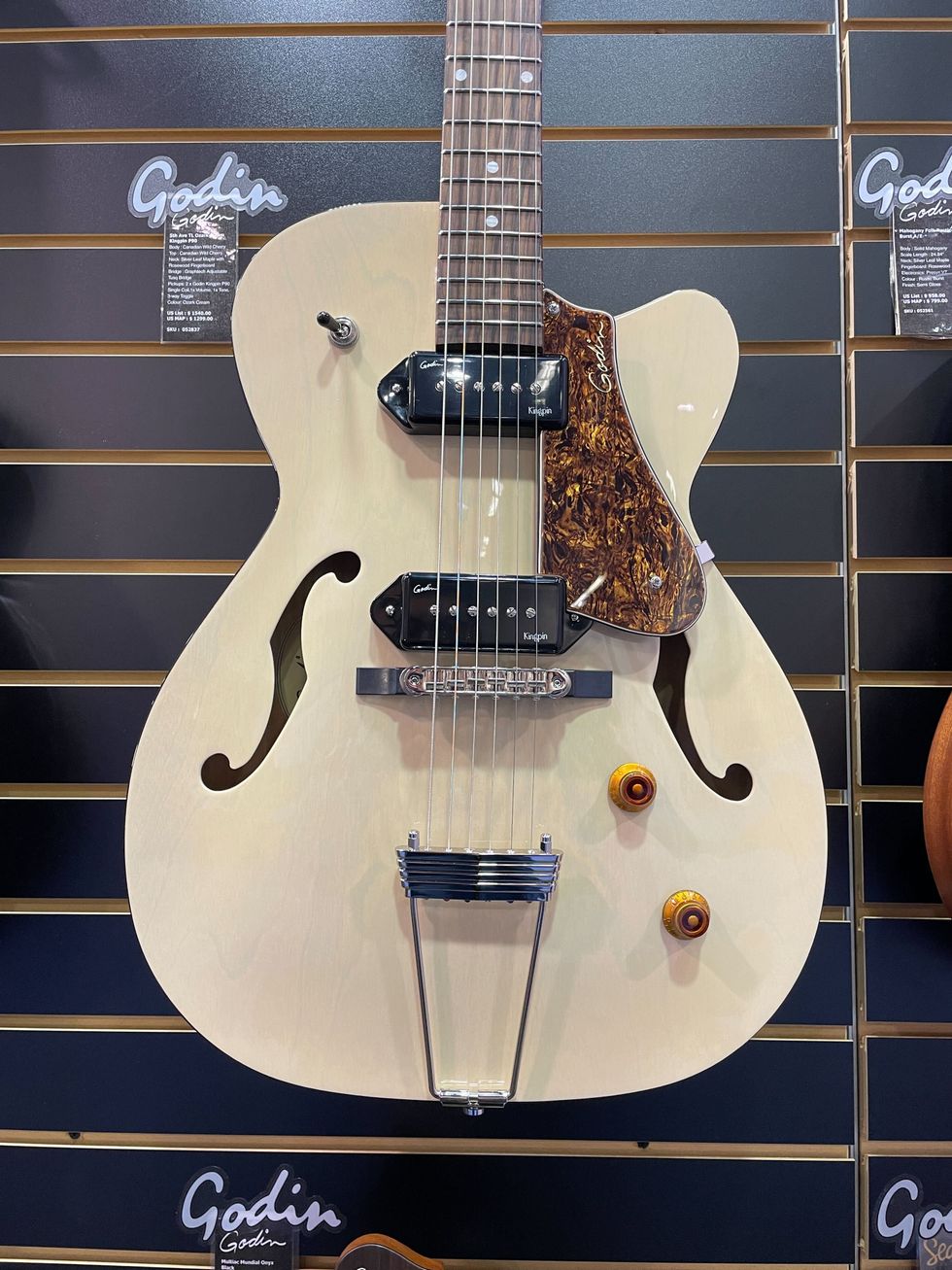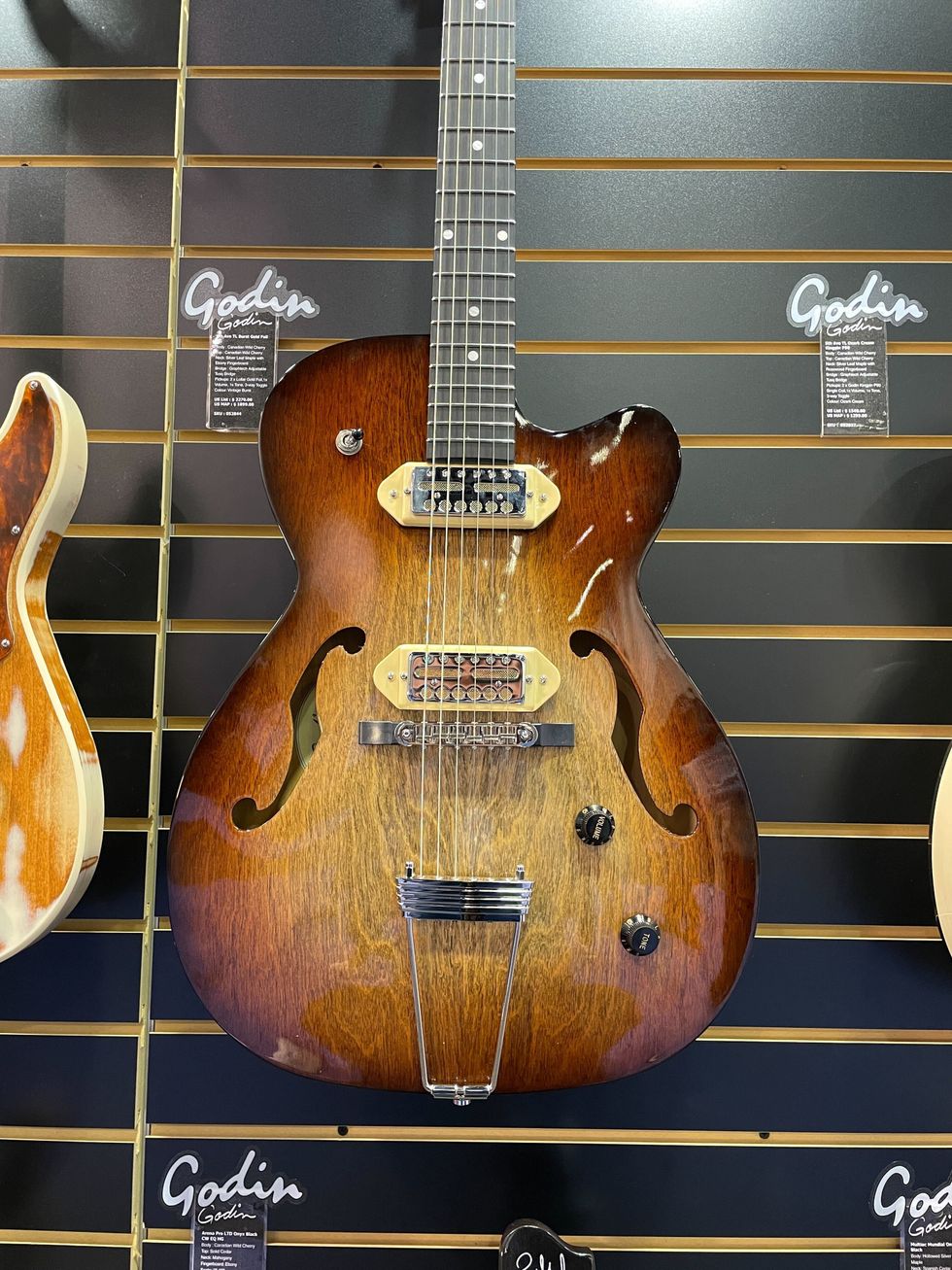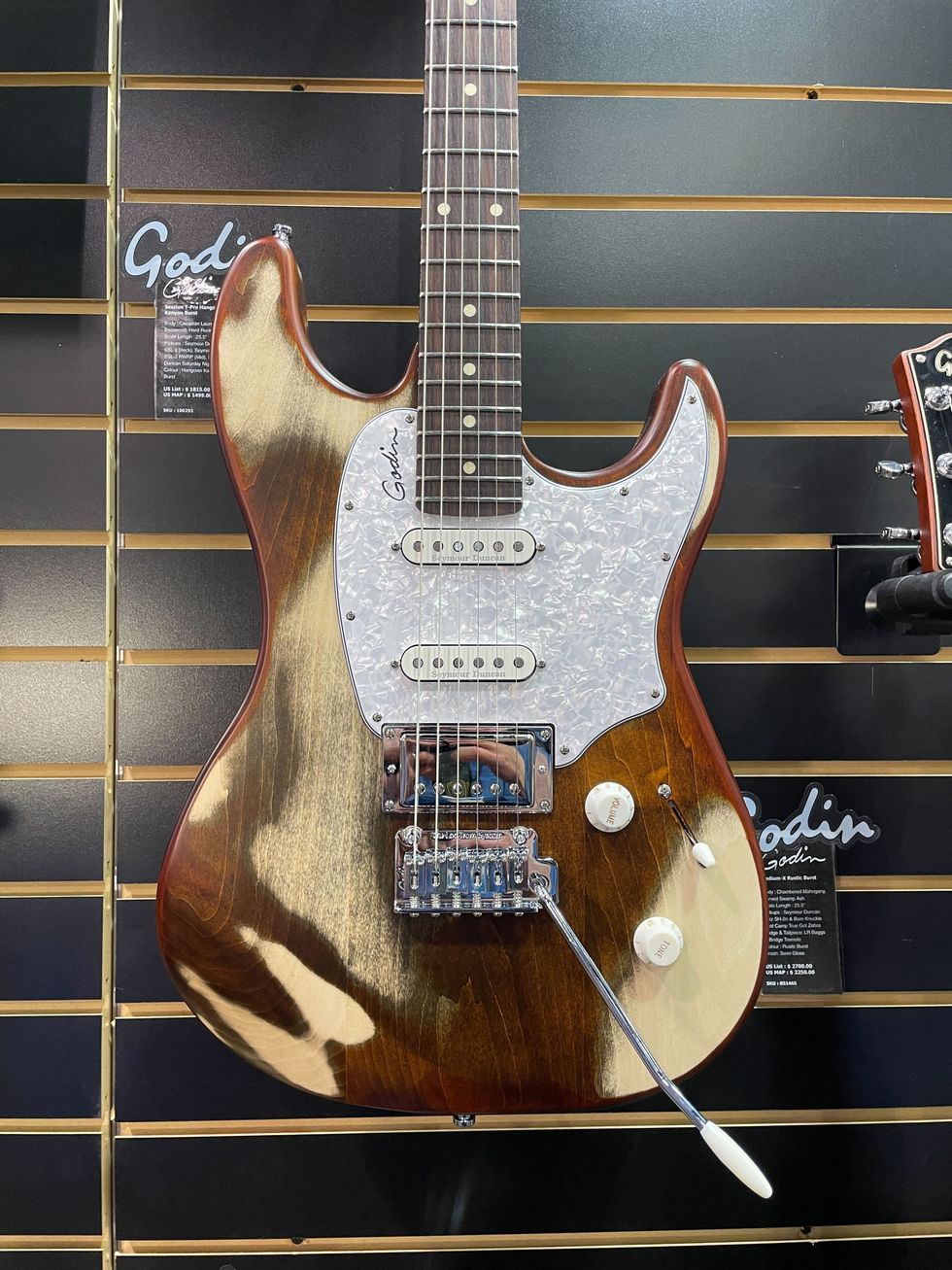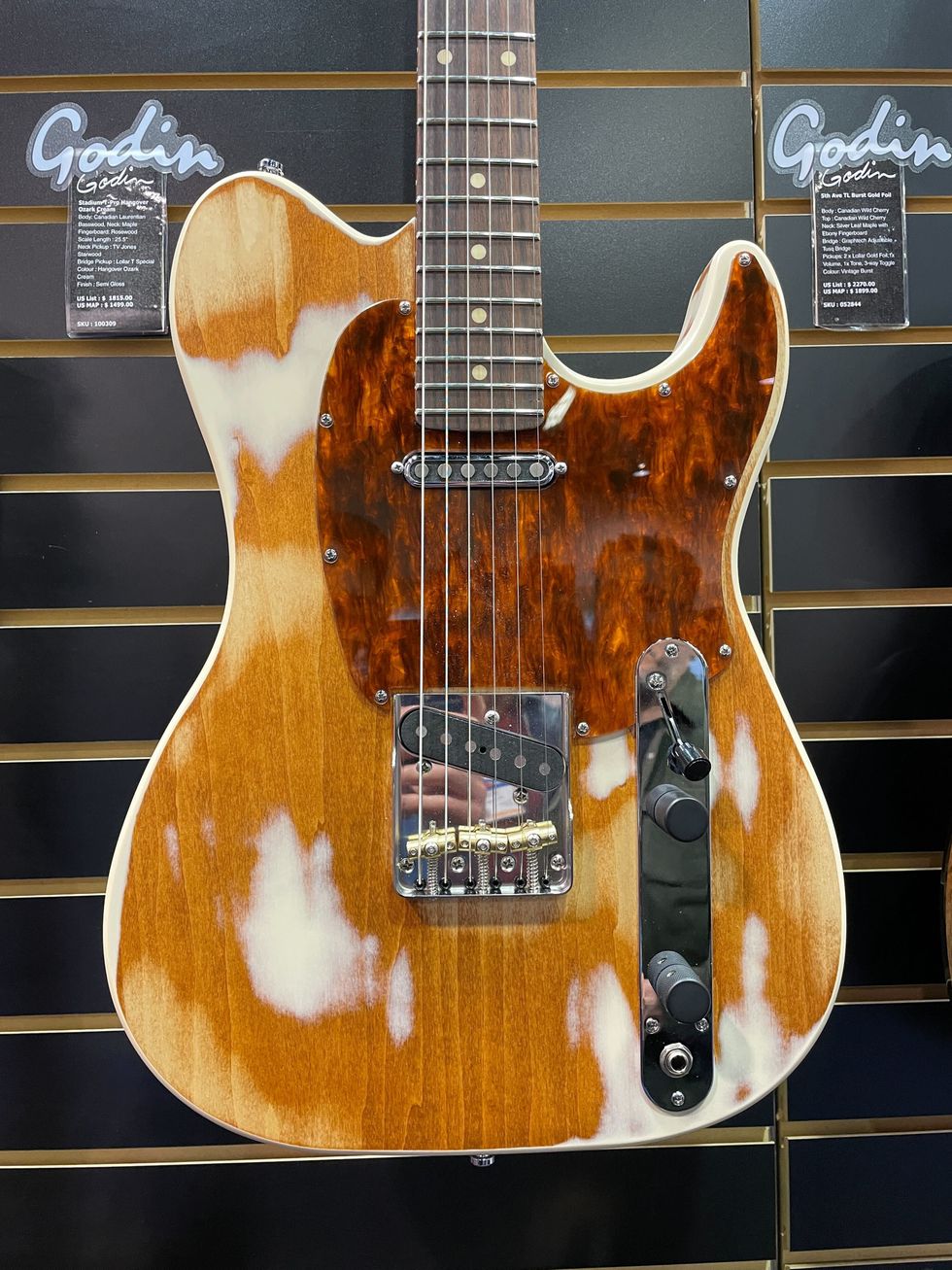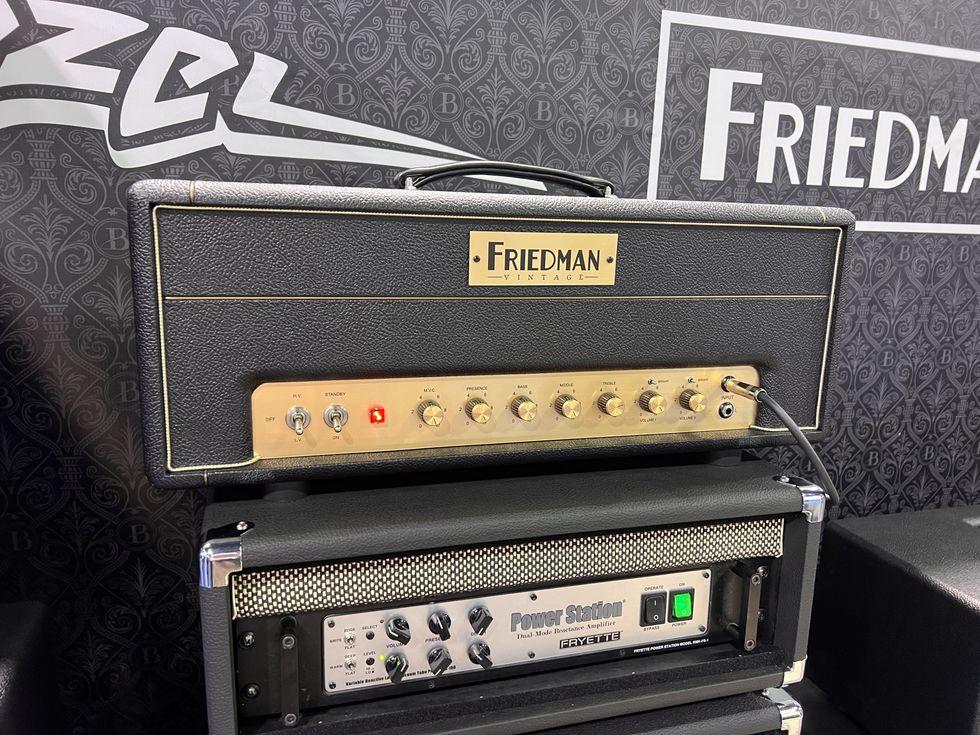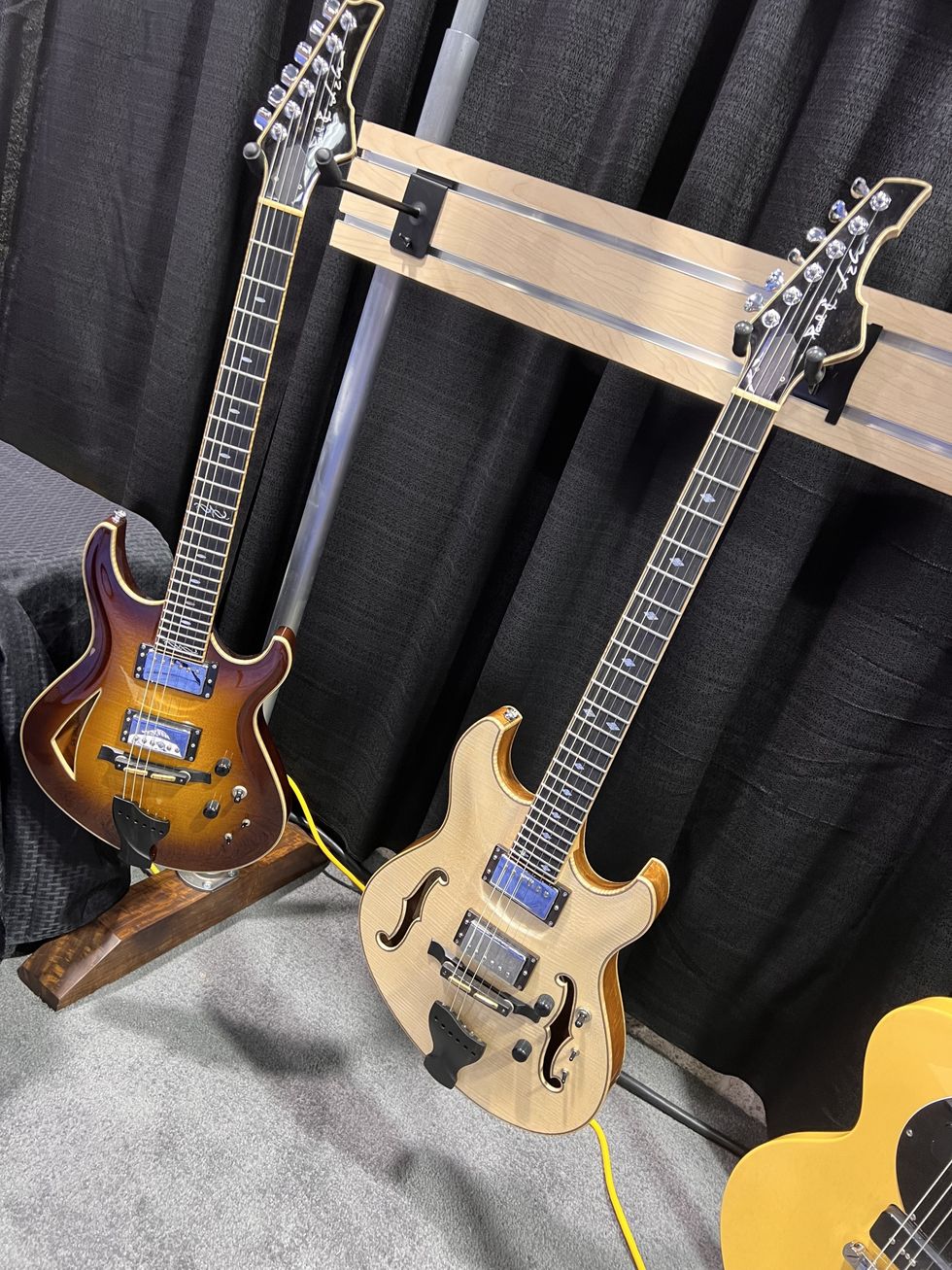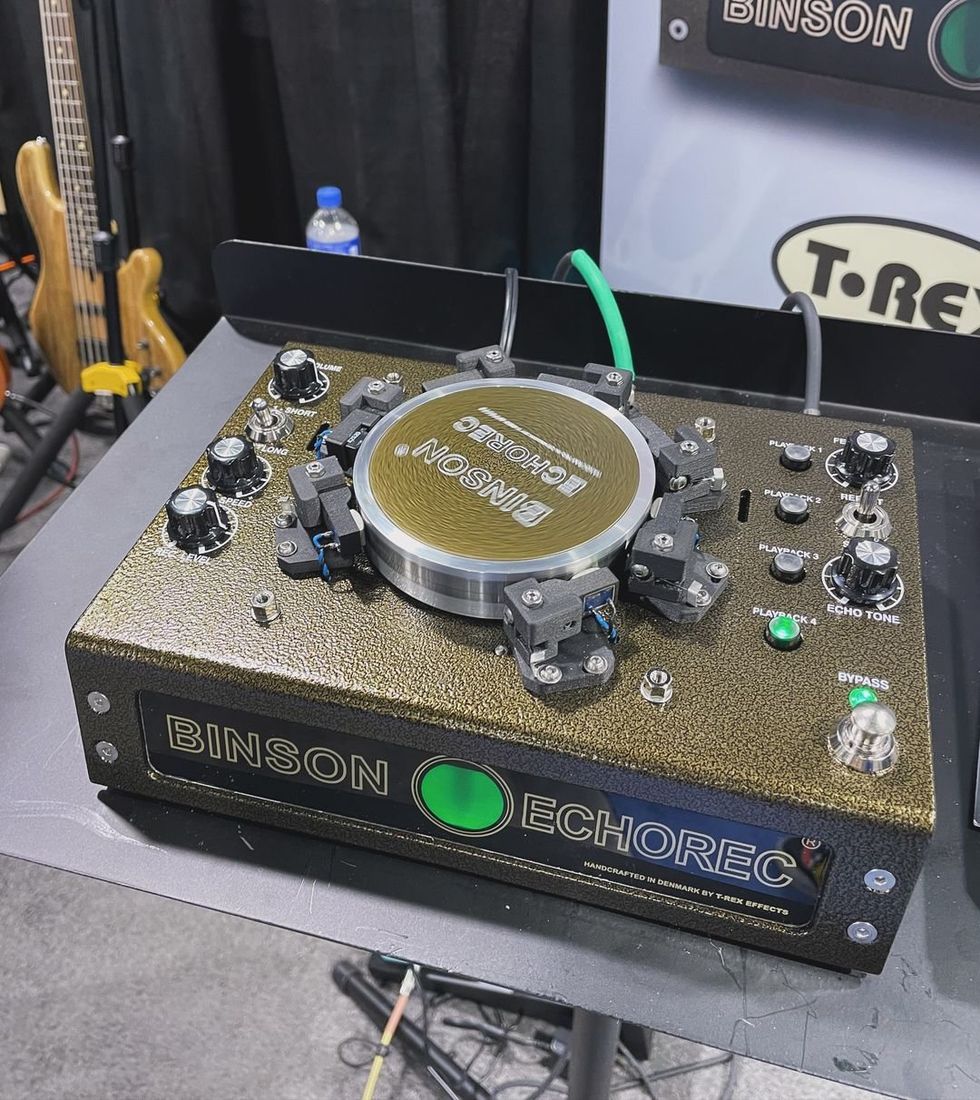We asked, and you answered. This year, we received a slew of pedalboard submissions from our readers, from the mega to the minimalist, to ones built by specific brand or model devotees, to the best configurations for gigging or recording. Pedalboards are as individual as players, and you’ll find from reading about the following eight featured here that each has a story that reflects the passions and personality of their owner. Pedal lists and most signal chains are included, plus all that lies beyond!
A Splash of Color
Reader: Don Crum
Just to give a bit of background, I use this board for guitar, bass, and keys. In wiring this board, I used a combination of Rattlesnake patch cables, G&H patch cables, and some other custom-length cables that I soldered myself. Each pedal has a Mooer Footswitch Topper on it. These make it exceptionally easier to connect with your pedals, plus they give your board an added pop of color.
I play literally every genre of music, so I tend to buy pedals with more than one purpose or function, because I like my rig to be as versatile as it can be at all times. I also don’t like overly complicated pedals with a million knobs, buttons, and/or internal switches. I prefer to keep everything as simple as possible, but it always has to sound good. That’s the bottom line and always my number one priority. It has to sound good!
As for the signal chain, the order might not look “normal” because it kind of bounces around my board a little bit, starting on the top rail, going to the bottom, and then back to the top, and again back to the bottom, all in a zigzag pattern. There’s a reason for that though: I like to keep my most-used pedals (gain pedals and looper) on the bottom row for super-quick and easy access. The top row is modulation and EQ. While these modulation pedals are crucial to my tone, I’m not turning them on or off nearly as much as my gain pedals. They’re more like “set it and forget it” type pedals, if you will. So, I basically just laid it all out in an order that makes it easiest for me. Power is supplied by a Truetone 1 Spot CS12.
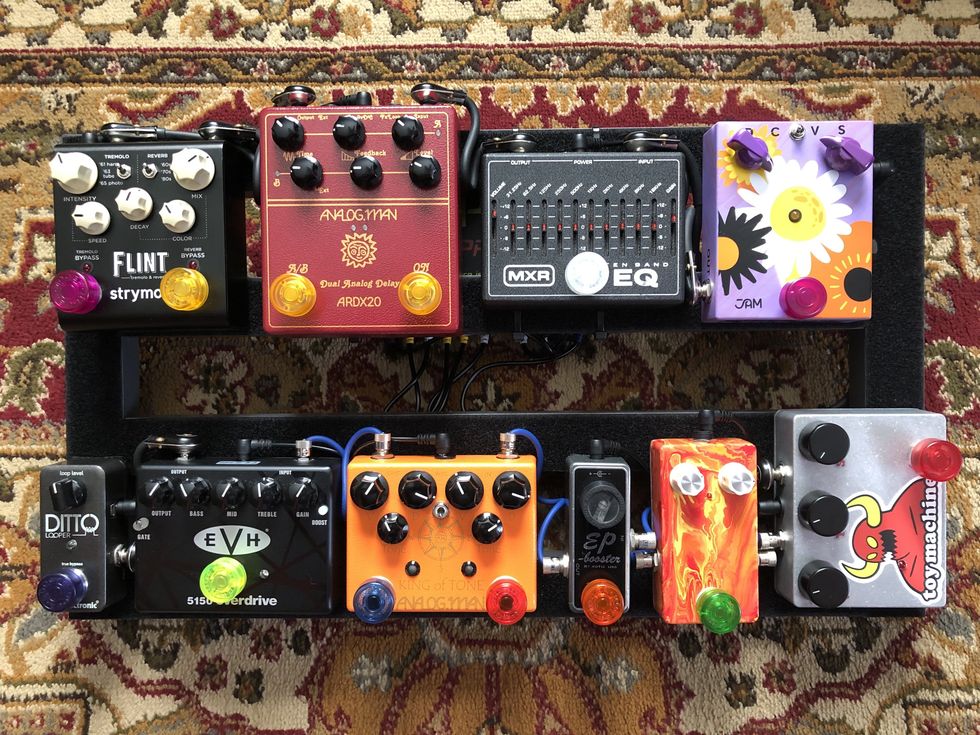
Signal chain:
1. Jam Pedals RetroVibe
2. EHX Big Muff Pi (silver box on bottom right)
3. Mythos Fuzzy Face (painted, built from limited edition DIY kit)
4. Xotic EP Booster
5. Analog Man King of Tone
6. MXR EVH 5150 Overdrive
7. MXR Ten Band EQ
8. Analog Man ARDX20 Dual Analog Delay
9. Strymon Flint
10. TC Electronic Ditto Looper
Board for a Boss
Reader: Tim Moran
Over the years, I have built many pedalboards with varying degrees of complexity. As a jazz guitarist who also plays funk, ska, reggae, fusion, Latin, metal, and classic rock, I need a broad variety of effects. However, I prefer simple, intuitive, reliable, efficient, and portable pedalboards over large, heavy, and complex ones.
I am a fan of Boss gear, going back to the original DS-1 Distortion pedal. Boss pedals are super easy to use, consistent, heavy-duty, and great in front of the amp. I already had a Boss BCB-60 Pedal Board that I used in the studio and on small gigs. I liked the case, the layout, and the built-in power, but it had major shortcomings. It was designed to hold six Boss-sized pedals, or five Boss-sized pedals and a wah/volume pedal. Boss has replaced the BCB-60 with the BCB-90 that holds nine pedals—better, but not quite what I needed.
What I needed was a simple plug-and-play pedalboard that matched my shoes, had great tone, was easy to transport, and featured my favorite Boss pedals. As noted, the BCB-60 was designed for six pedals, so I modified it to fit the 11 must-have pedals in my collection. The signal splits from the end of the chain into a stereo setup using a Mesa/Boogie Express 5:25 and a Fender Tremolux.
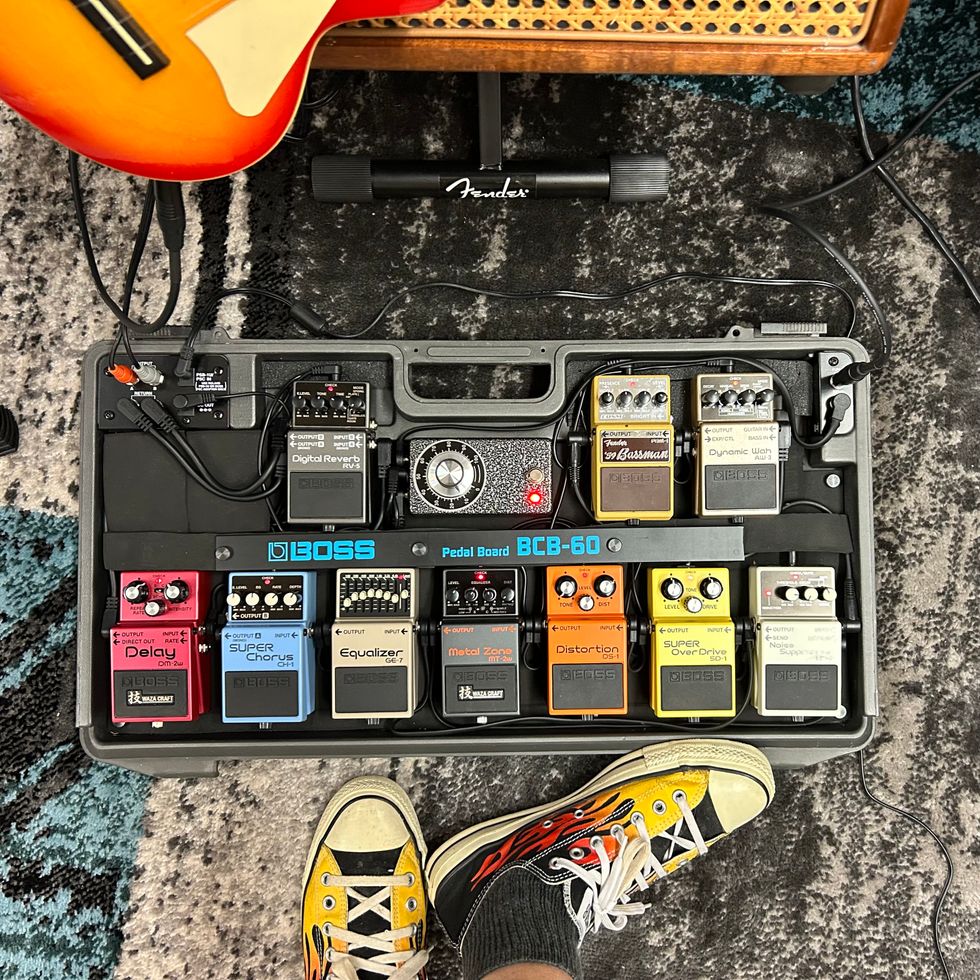
Signal chain:
1. Wyatt Abrachinsky Custom Booster
2. Boss AW-3 Dynamic Wah
3. Boss FBM-1 Fender ’59 Bassman
4. Boss NS-2 Noise Suppressor
Contained within the NS-2 effects loop:
1. Boss SD-1 Super Overdrive
2. Boss DS-1 Distortion
3. Boss MT-2W Waza Craft Metal Zone
5. Boss GE-7 Graphic Equalizer
6. Boss CH-1 Super Chorus
7. Boss DM-2W Waza Craft Delay
8. Boss RV-5 Digital Reverb
Little Giant
Reader: Peter Gothold
The building of this board has been a decade-long process, starting with the POG, Timmy, and Carbon Copy about eight years ago. I have gone through many phases of being a personal gear dealer, as I buy and sell pedals looking for a certain sound. I’ve recently added the Joyo switcher, Boss DD-20, and Matthews Traveler, but the other pedals have been consistent since 2021. Finding the King of Tone was a surprise, but a welcome one! Craigslist pulls through yet again! And boy is it as good as advertised.... Tasty!
Adding the Joyo switcher was a game-changer for me. I’d often be switching from a crunchy rhythm sound to an ambient wash between songs, and would be tap-dancing my way to tone. Now, I have my favorite tones dialed in, so with one push I can make the switch. Figuring out how to order the pedals that don’t go through the switcher was a challenge, but it has been working great so far!
I’ve always been a fan of the traditional signal flow: compression > pitch > overdrive > modulation > delay > reverb, but my particular layout necessitated some tweaks. The Joyo Loop Switcher comes right in the middle and has overdrive, modulation, and delay/reverb in it. But I have the lesser-used overdrives before it—knowing that when I use them, they won’t mess things up—and my always-on delay/reverb is at the very end. I use the delay/reverbs really just for ambient effects, which are happy stacking anyway. It’s a jumble, but it still sounds good!
For anyone intimidated by the world of pedals, I say start small and don’t be afraid to try something new! This board took me almost 10 years, and I’m still swapping things out as I find new things. I lead the music at my church, which includes a wide range of styles, so I have a big board to handle the variety. From angry dirt to huge swells and everything in between, this board can do it all. We have a silent stage, hence the DI at the end, but I can go straight out into my Fender Blues Deluxe or Vox AC4 Hand-Wired if I want to make some noise. It’s powered by one Walrus Audio Phoenix and one Walrus Audio Aetos.
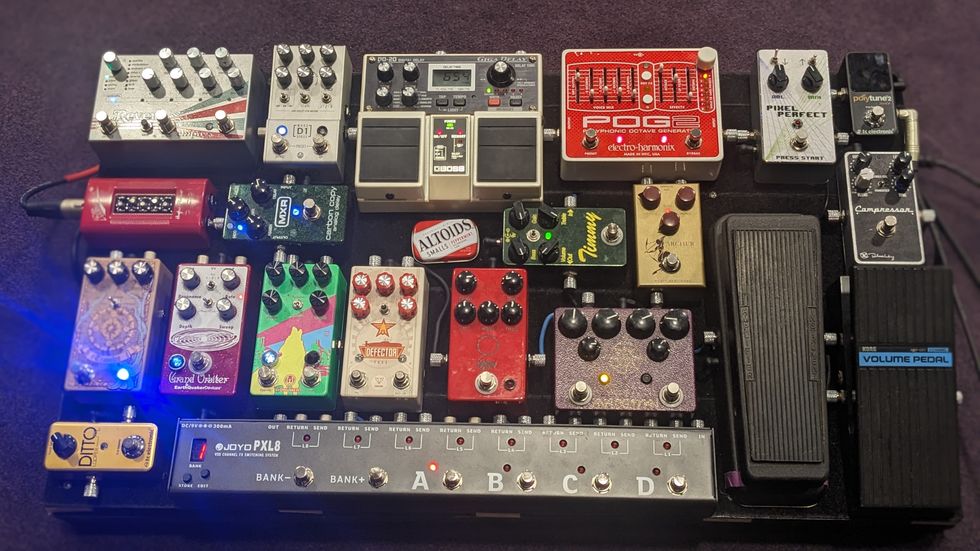
Signal chain:
1. TC Electronic PolyTune 2 Noir
2. Pixel Perfect (provides 8-bit synth tones from a DIY kit. Wacky and gnarly)
3. Keeley 4 Knob Compressor
4. Korg KVP-001 Volume pedal
5. Dunlop Cry Baby Wah
6. J. Rockett Audio Designs Archer Gold (always on)
7. JHS Angry Charlie
8. Foxpedal Defector Fuzz
9. Joyo PXL8 Loop Switcher (eight pedals assigned to this switcher)
1. EHX POG2 (oldest pedal on this board!)
2. Original Paul Cochran Timmy Overdrive
3. Analog Man King of Tone dual overdrive
4. Walrus Audio Monument Harmonic Tap Tremolo (in limited edition green)
5. EarthQuaker Devices Grand Orbiter Phaser
6. Boss DD-20 Digital Delay
7. MXR Carbon Copy Analog Delay
8. Matthews Effects The Traveler Reverb (newest pedal, I love this thing)
10. Walrus Audio Mako D1 High-Fidelity Delay
11. Empress Effects Reverb
12. TC Electronic Ditto Looper
13. Hughes & Kettner Red Box 5 cab sim/DI
It's All a Bit Fuzzy
Reader: Roger Williams
This is a fun experimental board to compare my two favorite pedals, the Keeley Fuzz Head and EHX Deluxe Memory Man.
I’ve collected pedals for about 20 years now. I’ve had upwards of 200 pedals—I’m currently at about 150 now. The two pedals that have always inspired me to play the most are my big-box Deluxe Memory Man and my Keeley Fuzz Head. I first purchased the Deluxe Memory Man XO because the big-box version was always out of my price range. Then I got very lucky and found one at a third of the going prices. (It was part of an estate sale among some random antiques and sundries.) I have the Deluxe Memory Boy for the tap tempo feature. It has a classic bucket-brigade delay sound, while both Deluxe Memory Mans have a cleaner repeat signal.
The Keeley Fuzz Head has always been my favorite fuzz/overdrive pedal. It has great note separation and articulation. Even though it only has two control knobs, it is quite versatile. It comes with four easily exchangeable capacitors which can drastically change the sound of the pedal, from Fuzz Face-style to woolly fuzz to treble boost to a semi-clean boost. The five Fuzz Heads on my board are all set to different combinations of capacitors/diodes and internal trim pot settings.
I currently own 10 Fuzz Heads. When Keeley discontinued the Fuzz Head I wanted to have a couple of backups, and I got carried away. In the signal chain, they are in order of oldest to newest versions, as well as ascending gain. My most cherished delay, the vintage Deluxe Memory Man, is at the end of the chain because it has an independent, very warm gain control that I sometimes use as a clean-ish boost. The board itself is redundant and not practical, but to me, it’s perfect!
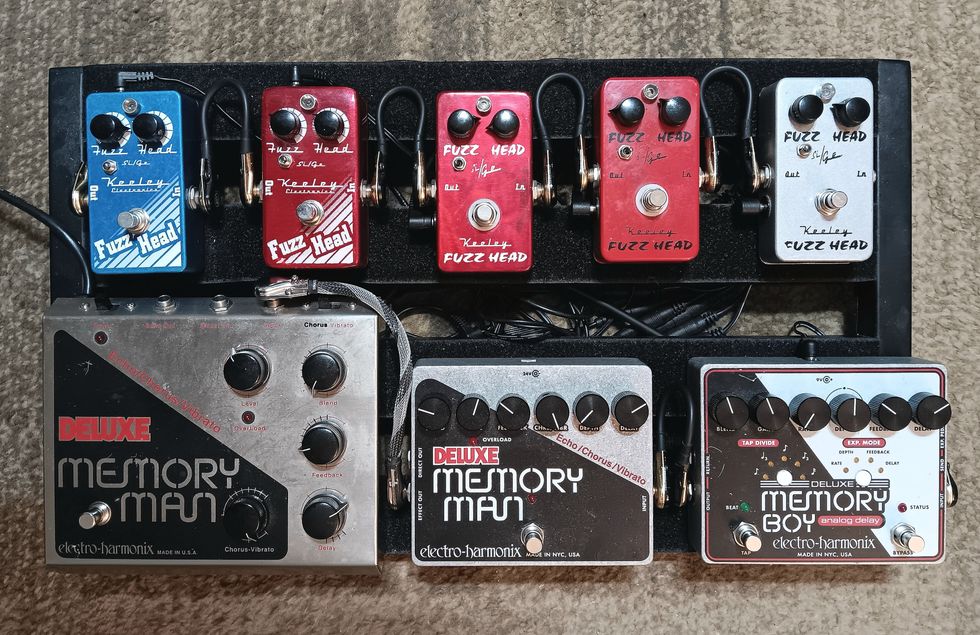
Signal chain:
1. Keeley Fuzz Head (far right)
2. Keeley Fuzz Head (second from the right)
3. Keeley Fuzz Head (middle)
4. Keeley Fuzz Head (second from the left)
5. Keeley Fuzz Head (far left)
6. EHX Deluxe Memory Boy
7. EHX Deluxe Memory Man XO
8. EHX Deluxe Memory Man
Black-and-White Thinking
Reader: Rick Bethune
Hello, my name is Rick, and I am a gearhead who is obsessed with black-and-white checks. Early on, I could see I wasn’t going to be a real player; I was more interested in the gear. This all started after I had open heart surgery in March of 2009. While I was at home recovering, I stumbled upon a website called General Guitar Gadgets, where they sell kits of well-known pedals. I bought four kits: a Ross distortion, octave fuzz, booster, and a Tube Screamer. Later, a friend was interested in buying the finished distortion pedal from me, and invited me to sell my builds at his store. After that, I taught myself to read and understand schematics. Then I found a site that has perforated board layouts that I now use to build everything.
I crafted this board from an old metal store shelf, with additional wood attached to secure the pedals. I believe it weighs somewhere around 100 pounds. It’s divided into nine loops. It may look like there’s duplications, but each one serves its own purpose with different sounds. The Vox Wah pedal on the bottom row is controlled by the box to its right, which has six different switchable inductors, along with tone and shape controls. The unpainted large box to the left of the wah, my “demo” box, was built to include at least one of everything I can build, specified below.
I also put four Ross effects on here. My Ross obsession goes back to the late ’70s when my parents gave me my first tan Ross distortion pedal. It blew me away then, and still does to this day.

Signal chain:
The board’s signal is not in a linear chain. The switches at the base of the board control a series of loops, as well as the light over the board and the power supply. The Demo switch is for the demo box, and the Bench switch is for the workbench loop, where I can insert anything that I am working on into the board.
I use Crosby cables to connect everything, and cut them all myself. I also cut all of the power cables. For amps I use a Fender Frontman 25R, Joyo Zombie II, Peavey Pacer, and an Epiphone So-Cal 50 head. There are two headphone amps on the board for fun: a Rockman Guitar Ace and a very rare Ross Rock Box, which I had to make a power supply for. I have to give credit to Tom Scholz of Boston for being an enormous influence on me as a gearhead.
List of pedals and boxes, in no particular order:
1. Homemade “demo” box which includes: distortion, phaser, booster, compressor, delay, and modified flanger
2. Vox Wah
3. Wah control box
4. Ross 10 Band Graphic EQ
5. MXR Micro Amp
6. MXR Dyna Comp
7. BBE Sonic Stomp
8. Behringer Tuner TU300
9. EHX Silencer
10. Pro Co RAT
11. Pro Co Brat
12. Pro Co Roadkill
13. MXR Classic Overdrive
14. Boss SD-1 Super Overdrive (true bypass mod)
15. MXR Phase 95 Mini
16. Sonicake Cry-Bot Auto Wah
17. Sonicake 5th Dimension Digital Modulation
18. Donner Alpha FX
19. Rockman Guitar Ace
20. Ross Rock Box
21. Ibanez CS-505 Chorus (true bypass mod)
22. Boss CE-3 Chorus (true bypass mod)
23. Ibanez TS808 Tube Screamer (true bypass mod)
24. Ross Distortion (Early ’80s, true bypass mod)
25. EHX Big Muff (Early ’80s “Rams Head” board inside, true bypass mod)
26. EHX Satisfaction Fuzz
27. MXR Blue Box Octave Fuzz
28. Rockman Acoustic Simulator
29. DOD 670 Flanger (Updated caps and true bypass mod)
30. Ross Flanger (Early ’80s, true bypass mod)
Tamer of Centaurs
Reader: David Westhoff
I actually won this Holeyboard pedalboard from Premier Guitar. I was in the market for a board when it happened, as I was not happy with my previous one because it was too small.
As with many boards, this one has gone through a lot of changes. But the Klon, Fulltone CLYDE Deluxe, and Fulltone Deja 2 have been permanent fixtures throughout its evolution. I play a lot of Robin Trower, and he uses both of the Fulltones that I have.
The board goes into two ENGL E325 50-watt heads that both have a 2x12 cab with Celestion G12Ks. I did a lot of experimenting getting this to sound the way that I want. One trick I use is, I route the wet signal from the Boss CH-1 chorus into the dry output of the DigiTech Hardwire DL-8 delay, which really makes the effects stand out instead of getting muddy in the mix.
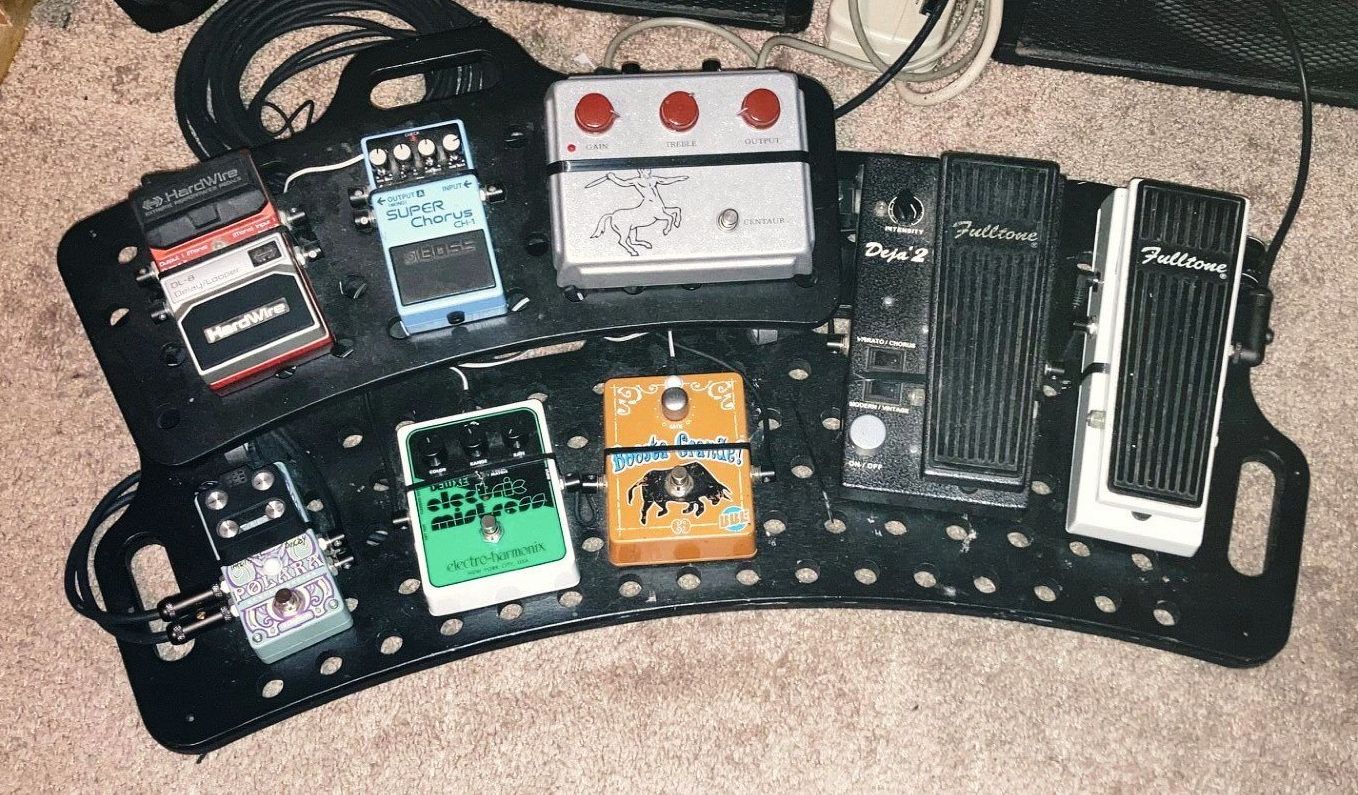
Signal chain:
1. Fulltone CLYDE Deluxe
2. Fulltone Deja 2
3. Klon Centaur
4. BBE Boosta Grande
5. EHX Deluxe Electric Mistress
6. Boss CH-1 Super Chorus
7. DigiTech HardWire DL-8
8. DigiTech Polara
Self-Contained Units
Reader: Micah Cadwell
I tried to build the ultimate board for going direct, live or in-studio, and for fly dates. However, this setup also sounds great going into a miked cabinet. Sound people love when they ask what I need and I say, “One XLR or a mic.” They usually opt for an XLR.
I mostly play jazz, so I’m very used to the clean Deluxe Reverb sound, which is why The Amp by Milkman was the first place I went. It’s basically a Deluxe Reverb with a master volume, which is amazing! The PolyTune Mini is great and the Dunlop Volume (X) Mini Pedal has a really nice sweep in spite of it being … mini.
On those occasional country/Americana gigs, the Cali76 is, to my ear, the ultimate pedal compressor, and I’m convinced that the Greer Lightspeed makes everything sound better. So that’s the first gain stage, in front of the Browne Protein, which offers two totally usable gain sounds. Another killer pedal!
The JHS Panther Cub is an incredible analog delay with a tap tempo, and the Strymon Mobius covers any and all modulation that I could ever possibly need. I can go direct, to the pleasure of sound engineers everywhere, or I can run it into a cabinet and be totally self-contained. It’s wired with Covenant patch cables on a Pedaltrain Classic JR. It’s a great board!
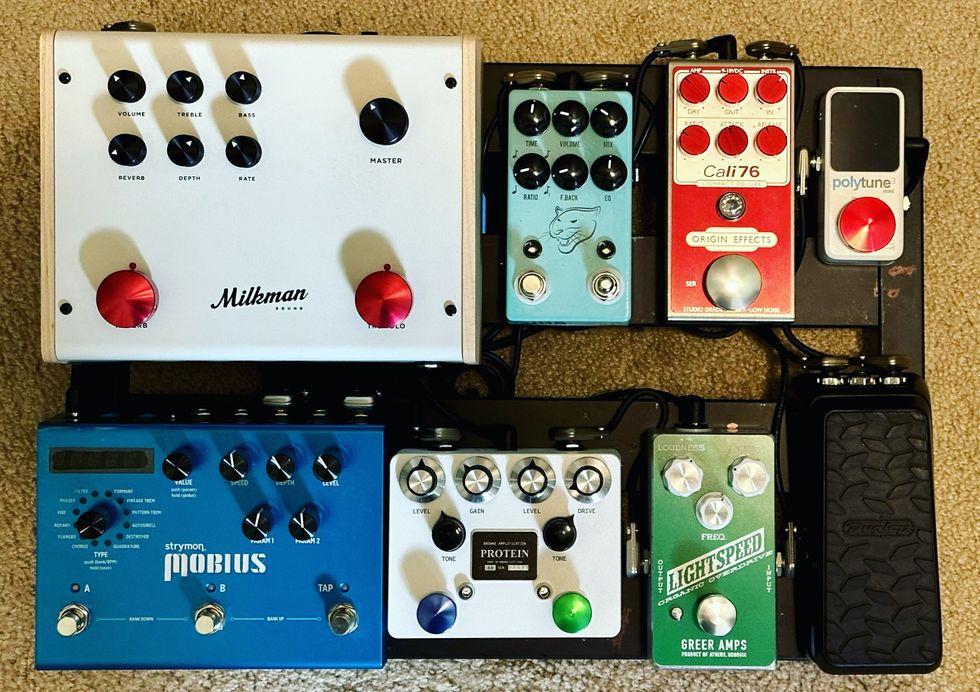
Signal chain:
1. TC Electronic PolyTune 3
2. Dunlop Volume (X) Mini Pedal
3. Origin Effects Cali76 Compact Deluxe
4. Greer Amps Lightspeed Organic Overdrive
5. Browne Amplification Protein Dual Overdrive
6. Strymon Mobius
7. JHS Panther Cub V2
8. Milkman The Amp
Double Feature
Reader: Bill Babjak
These pedalboards have been in the making for the past 40 years. I built my first board in 1979 with DOD pedals, trying to sound like Rush and the Police at that time. I have been collecting pedals ever since, and have acquired over 200 pedals. The current setup mixes the classics with the new.
I have decided to separate the clean board from the gain board as a way of switching between a clean, chorus, or echo sound into a loud fuzz. I decided to add some chorus, delay, echo, and reverb on the gain board just because I can. I could have used the GigRig G3 but did not want to program loops. With my setup, I can select anything at any time. This setup also allows me to incorporate my ’70s Multi Echo, which I have mounted on a desktop speaker stand.
I just recently rewired both boards when I introduced the QMX-10 for more options, and moved the QMX-8 to the clean board. This way, the older pedals are isolated from the signal path since they are not true bypass. This setup is for home studio only.
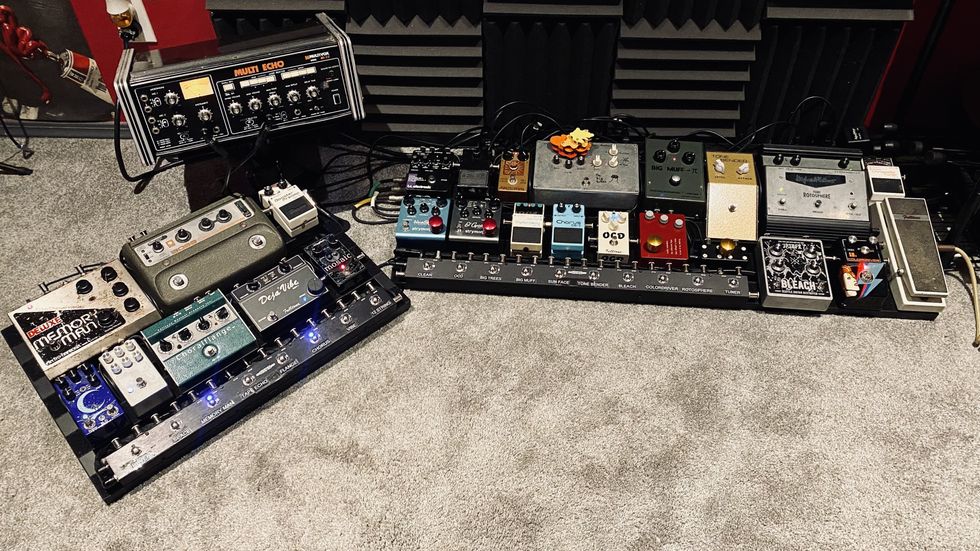
Signal chain:
My setup consists of two Pedaltrain boards. The gain board is a Terra 42 powered using two Voodoo Lab Pedal Power Mondo supplies. My signal on the board starts with a Fulltone Wah and goes into a Land Devices Domino and Klon KTR before hitting a GigRig QuarterMaster QMX-10. Out of the switcher it goes through an ISP Technologies Decimator and a JHS splitter, which feeds both a ’94 Vox AC30 and my modulation section, which includes a Boss CE-2 Chorus, Boss DD-3 Digital Delay, TC Electronic Stereo Chorus+, Strymon El Capistan, and a Strymon BlueSky. From there, it goes out in stereo to a 1994 Fender Bassman ’50s Reissue and a 1994 Marshall Bluesbreaker ’60s Reissue.
Within the QMX-10, I have arranged the pedals in the following loops:
1. Boss TU-2 Chromatic Tuner
2. Hughes & Kettner Tube Rotosphere
3. Tru-Fi Colordriver 18V (Bowie Edition)
4. JTPR FX Bleach
5. Sola Sound MkI Tone Bender Stu Castledine V2
6. Analog Man Sun Face NKT275 white-dot
7. ’90s EHX Green Russian Big Muff Pi
8. Audio Kitchen The Big Trees
9. Fulltone OCD V1.1
10. Out to clean board
On the clean board, which is a Pedaltrain Classic 3 powered by a Voodoo Lab Pedal Power Mondo, I keep mostly modulation effects. I place this entire board within loop 10 of the QuarterMaster QMX-10 along with the Boss Booster/Preamp. The pedals are arranged on the QMX-8 as follows:
1. DigiTech Mosaic Polyphonic 12-String
2. Fulltone Mini-Deja’Vibe
3. Boss CE-1 Chorus Ensemble
4. Fulltone ChoralFlange
5. Multivox MX-312 Multi Echo
6. EHX Deluxe Memory Man
7. EarthQuaker Devices Space Spiral
8. Walrus Audio Slö Multi Texture Reverb
